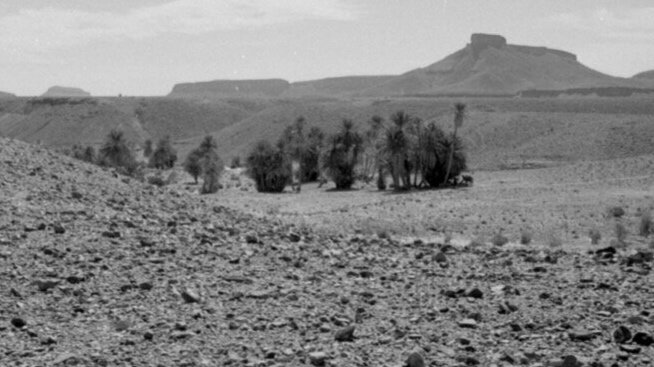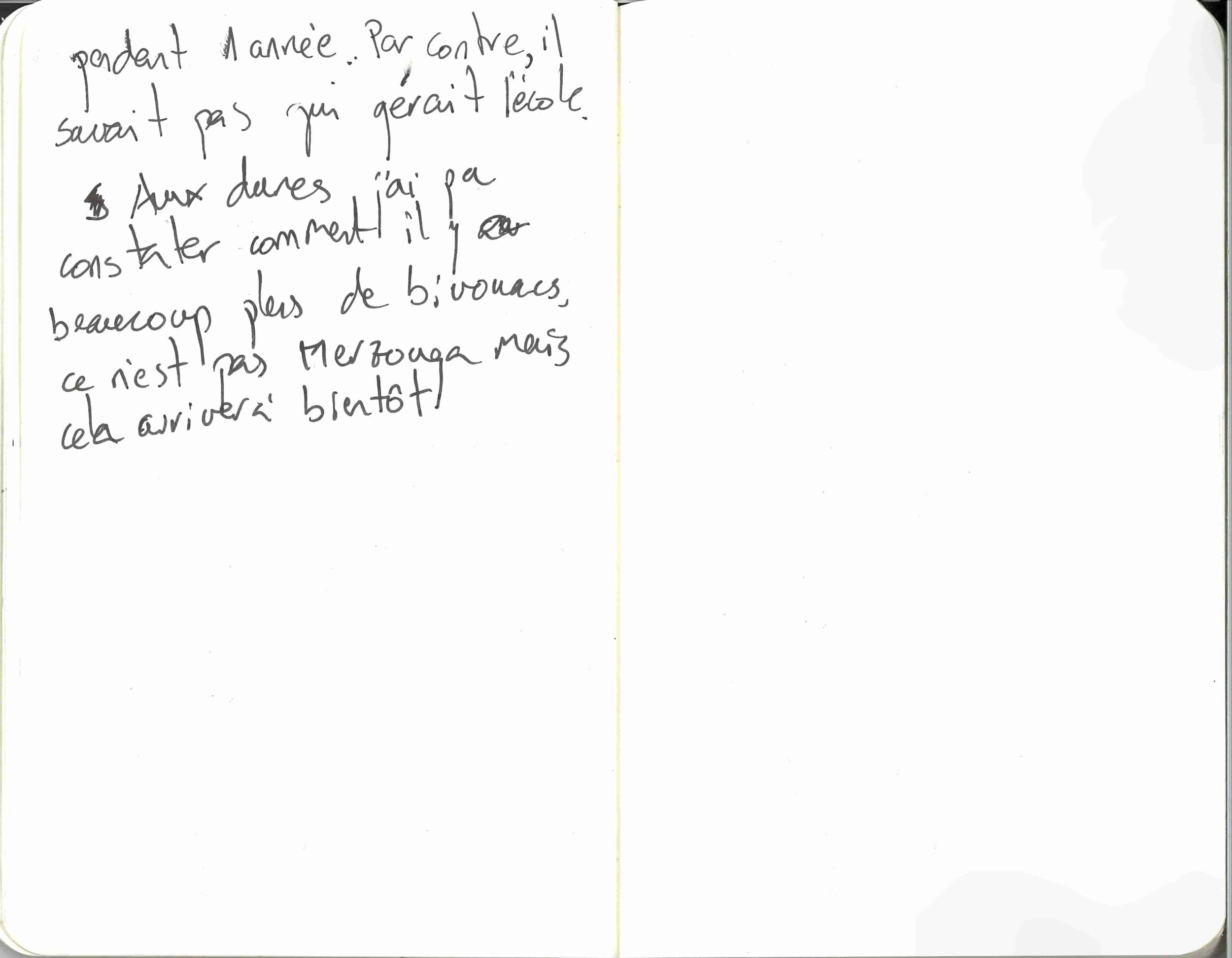qafila rabiaa
INTRODUCTION
After several caravans, I had some friends that wanted to come one day, but they were not sure to resist two weeks walking 5 hours per day. So, I decided to organise a small caravans, walking 90 km in 7 days, which meant to walk only 3 hours per day. I also wanted to do it just with Moroccan friends who live or have come to the desert, avoiding problems with the “acclimatisation” to the environment, the weather and the nomad way of life.
The caravan was organised by Marsad Drâa, with the collaboration of Caravane Tighmert, and the logistic was provided by Sahara Holidays.
TOPOGRAPHY
DAY 00
After a few days in the Drâa valley, we arrive by car to Zagora. This is the second time I organise the same "plan". We meet all in the valley, waiting to get to each other, as they did before with the caravans, not necessarily M'hamid, people told me about the ksar of ASTOUR too, or in the palm grove of Ktaoua.
Finally the night falls on our way between Zagora and the meeting point with the camel drivers, a little before the place I had proposed to Khalil. Apparently the camel drivers did not know the road I had "drawn" on the plans.
Once out of the car, the impact was brutal the Milky Way received us as if in another planet we had just landed. That's where Qafila really started.
Everyone was excited because of the darkness, the stars, the camels, in short, because of all that we were going to live together.





















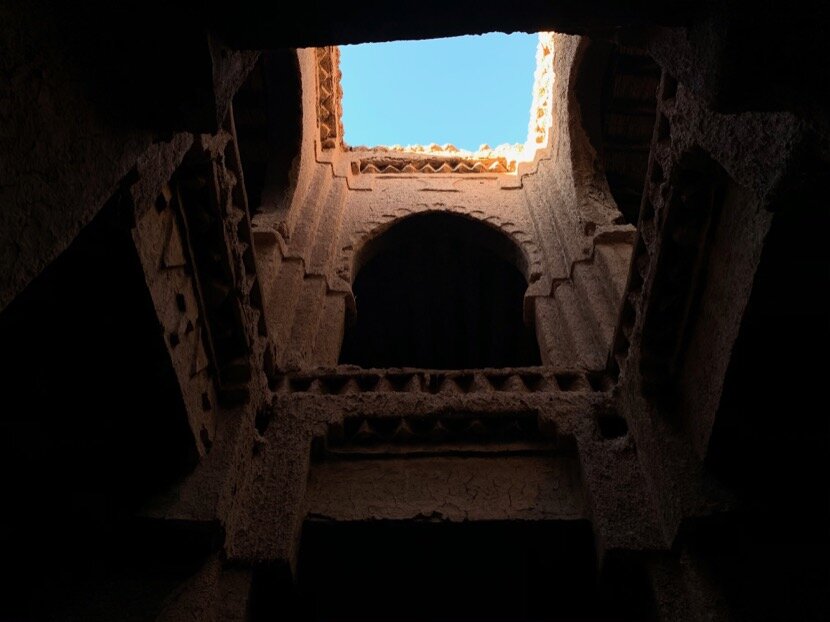






DAY 01
26.10.2019
As usual some people decided to sleep in the tent (Souad and Abdeljalil), the others under the stars.
After a calm night, a little cool, we start at 9am without knowing very well which path we were going to follow, the passage that I had spotted, or the foum that the camel drivers had taken to arrive from M'hamid. For me it did not matter, but considering the height to cross, the second option was more interesting, perhaps because I wanted to relive the mountain pass after the Madouar we did during Qafila Thania.
Indeed, the climb of 237 m was spectacular, always fascinated by the ability of camels to climb. Moreover, on the summit, the view made possible to understand the importance of feijas, spaces with a smaller scale, in width, with less wind and sand. This one connected Zagora with Foum Zguid ... Tata, Akka, Icht ... Noul Lamta.
Then we went down a small path that should bring us to a valley, the same if we had ever taken the route I had "drawn". On the other hand, the line of mountains that was supposed to be closer, was really far. Both the maps and Google Maps did not show the spaces well, or it was me. I believe that the dimensions were variable and that the plans could not represent the DIMENSIONS OF THE DESERT.
We met two "caravans" who were going to look for tourists, I think, but walking in these territories with caravans, traces of nomads (stone walls), nomads ... and no car or motorbike, was a real luxury.
I'm worried about Laila and Driss, I did not really know if they would support 3 or 4 hours of walking, with such an abrupt start to the terrain.
After 3 hours of walking (which was planned for each day) we had done only 10 km, but the need to get to a well, because it had been five days since the camels were not drinking, led us to one, after 4h. Laila made the last part of the journey on a camel and Driss was already tired, giving him a little conversation, he could forget the fatigue, besides this conversation isolated us from the territory and at the moment of descending on the course of a stream, we came across a mini oasis, with some palms and wells. The camel drivers wanted to continue but the place was so beautiful and the fatigue so great that we installed the "camp" there.
Thanks to the well I could do a laundry and take a "shower", my friends were not aware of the meaning of having a well, maybe the only one we would meet in our caravane. On the other hand, the camel drivers, the first thing they did was the laundry.
After me, the others did the same. During the rest of the day we were lying on the ground but not too tired.
After dinner, the image of the palm trees with the background stars was simply a photo montage.
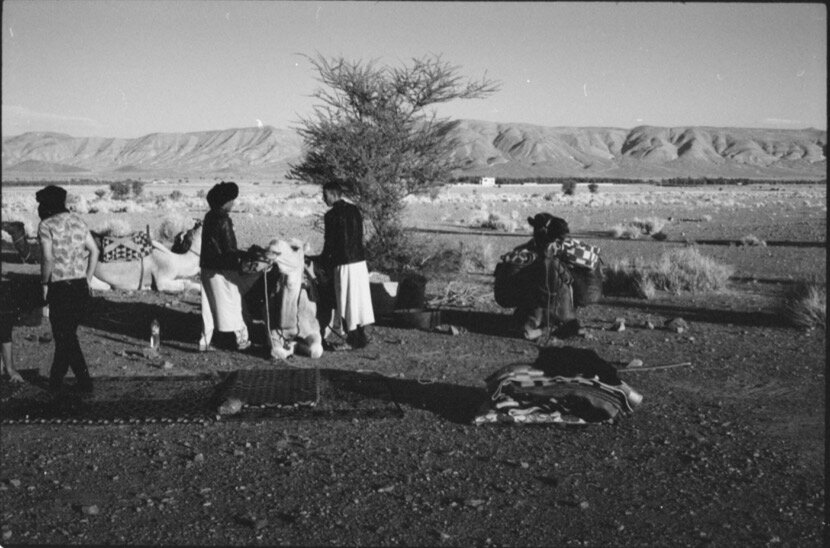

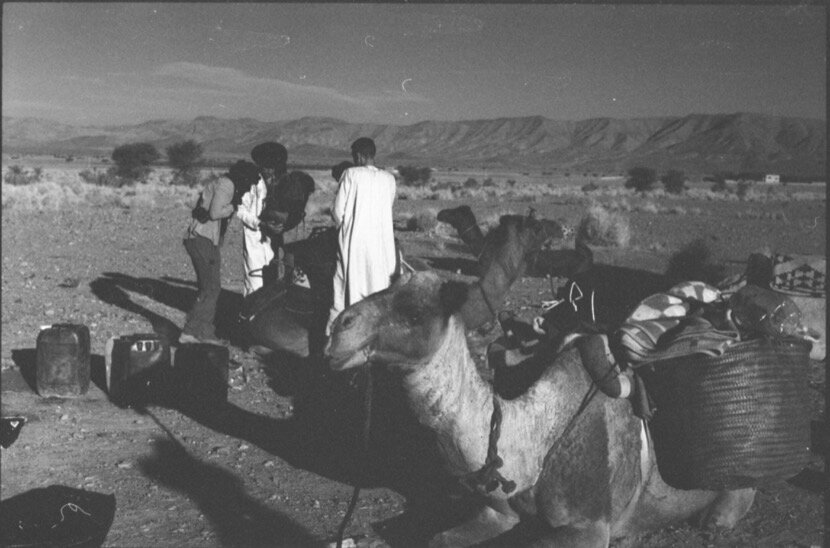
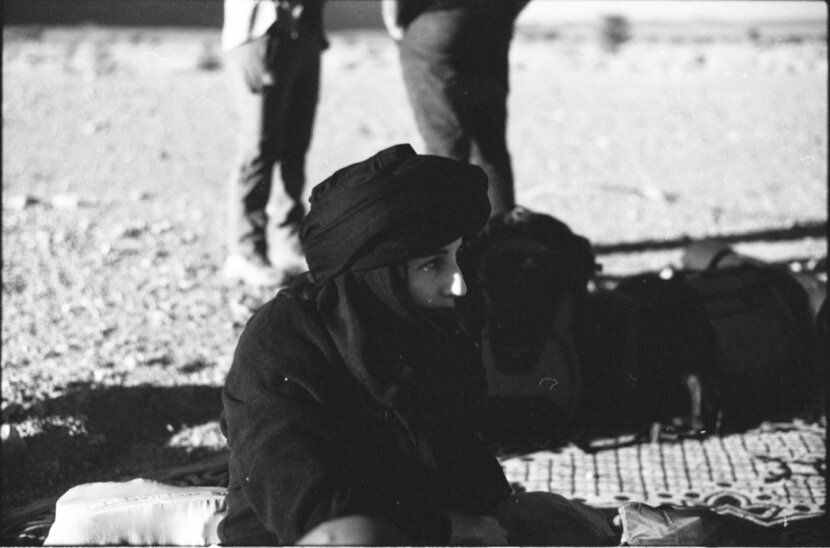
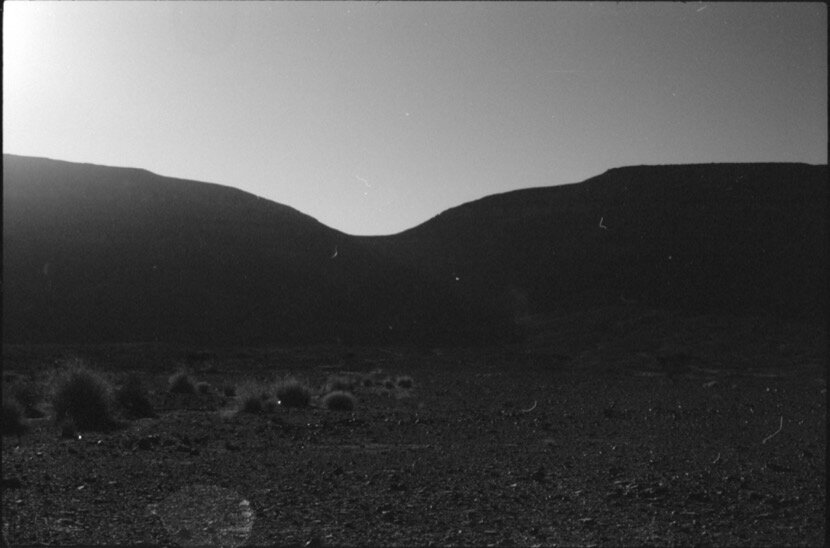
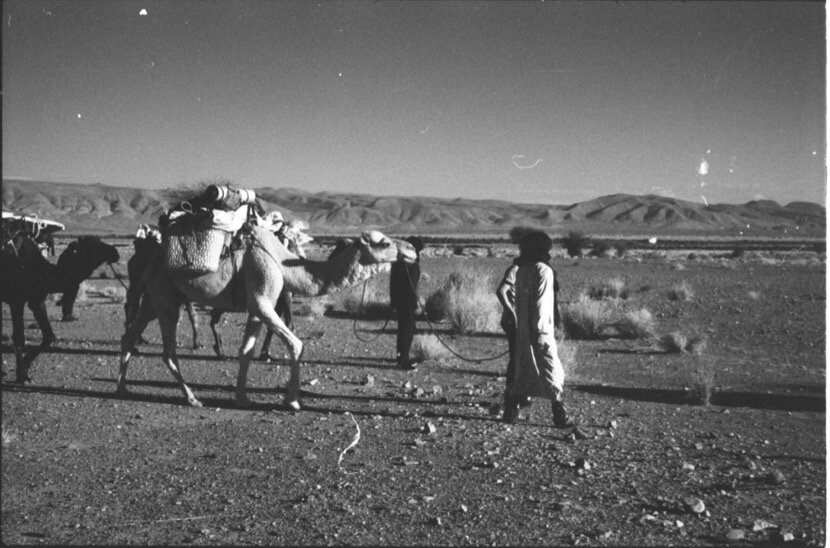
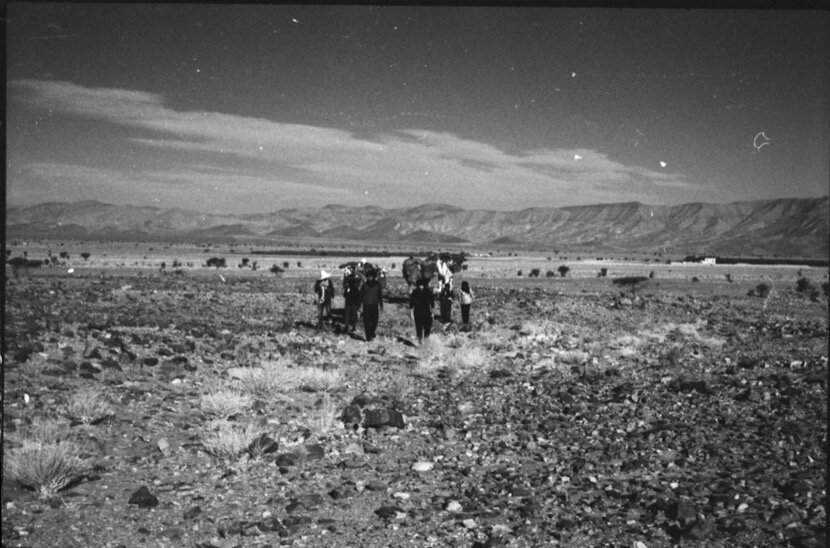
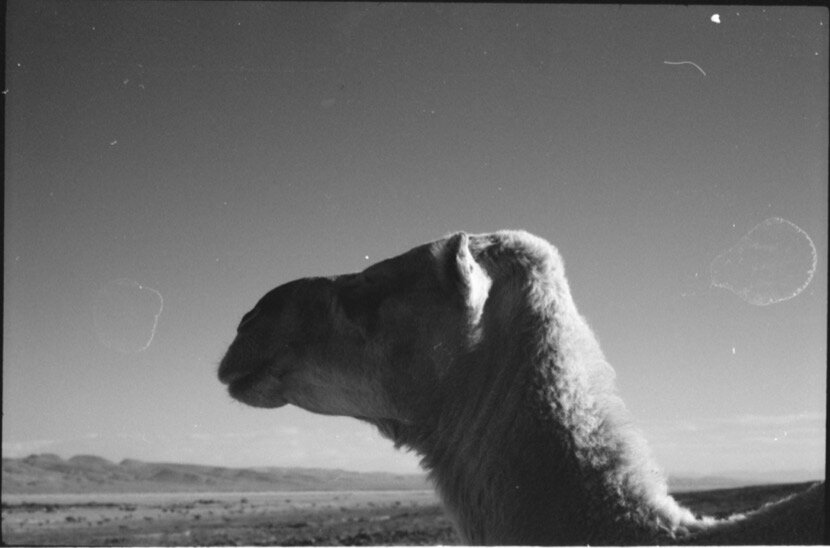

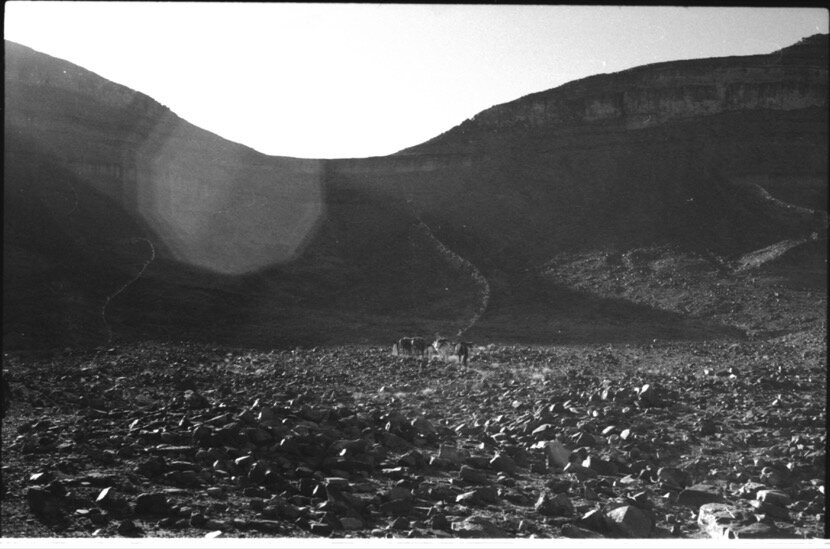

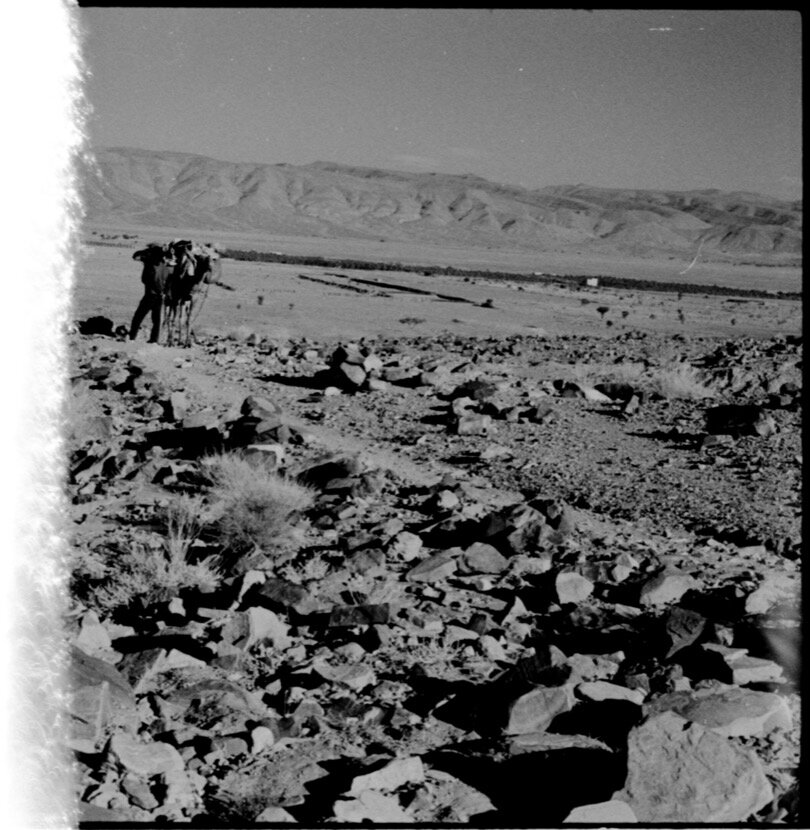
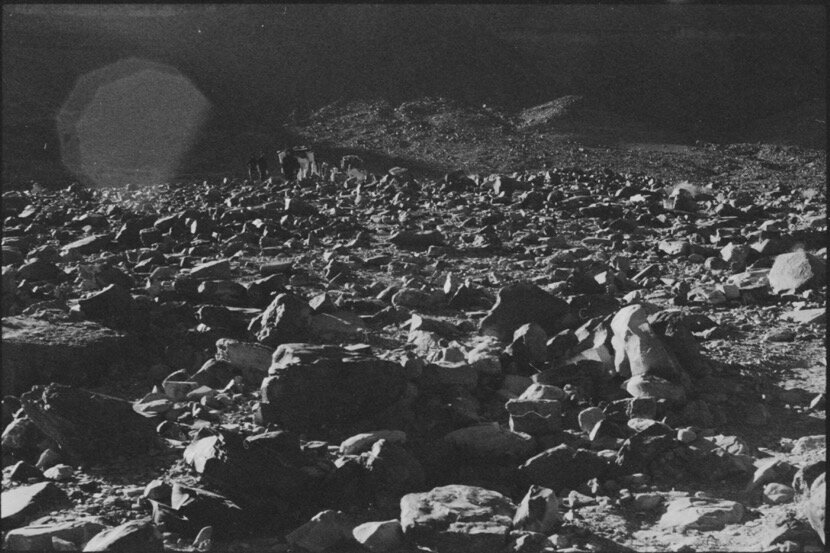
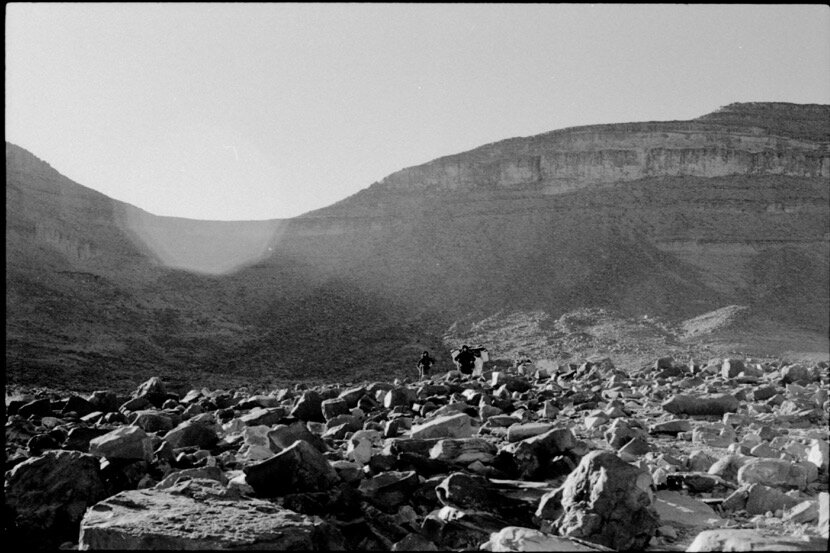
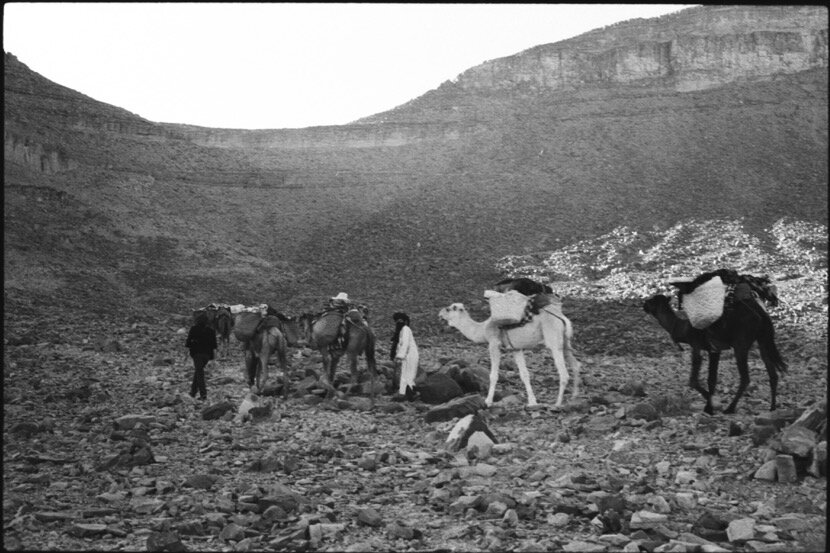
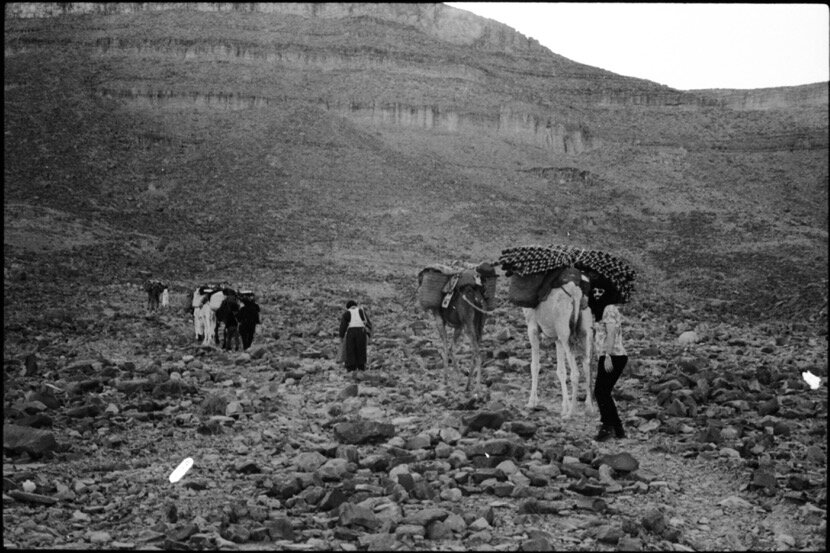
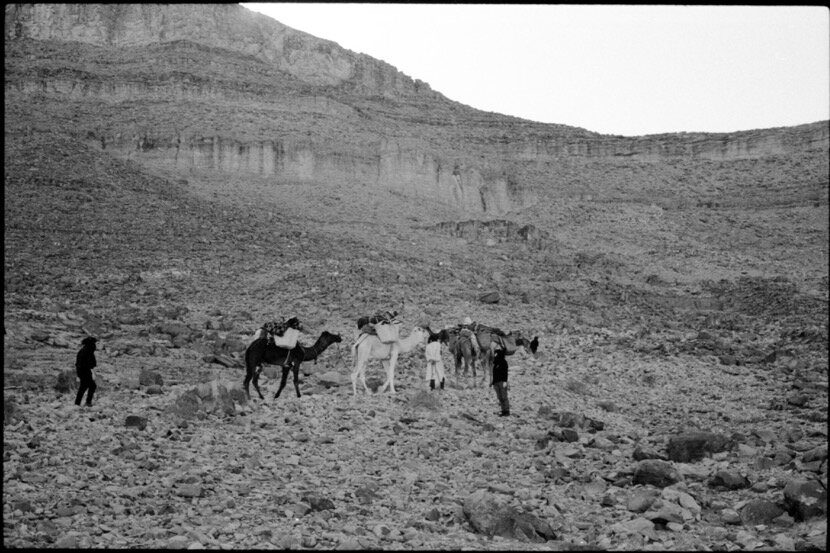
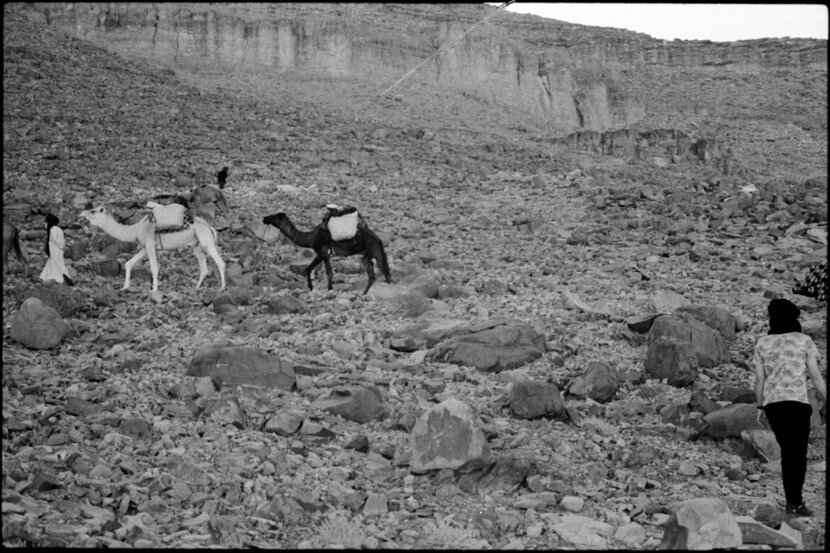
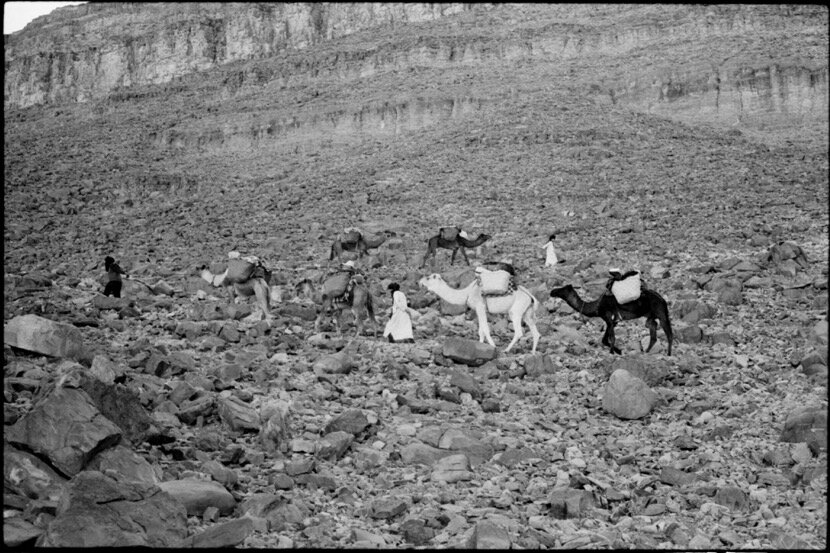
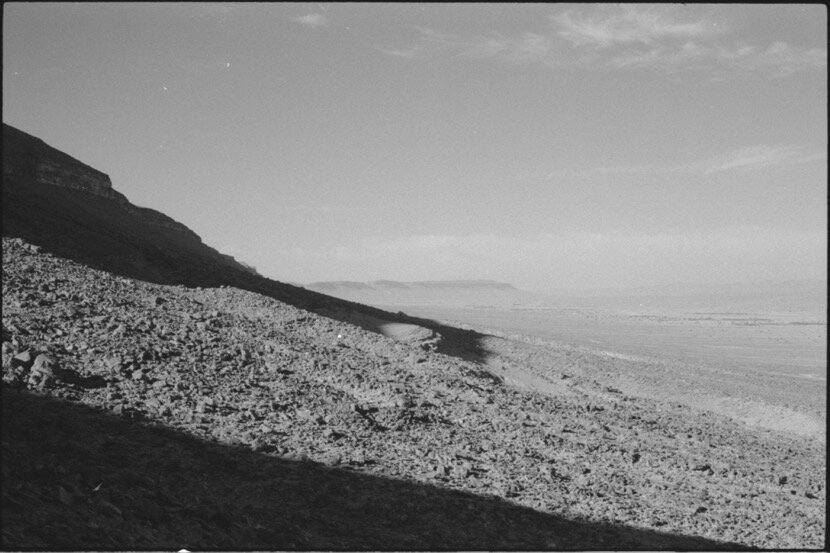

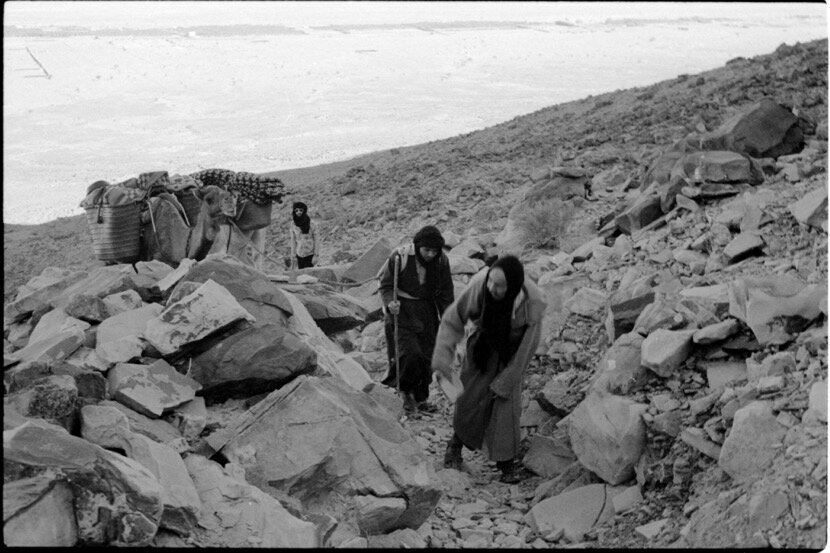
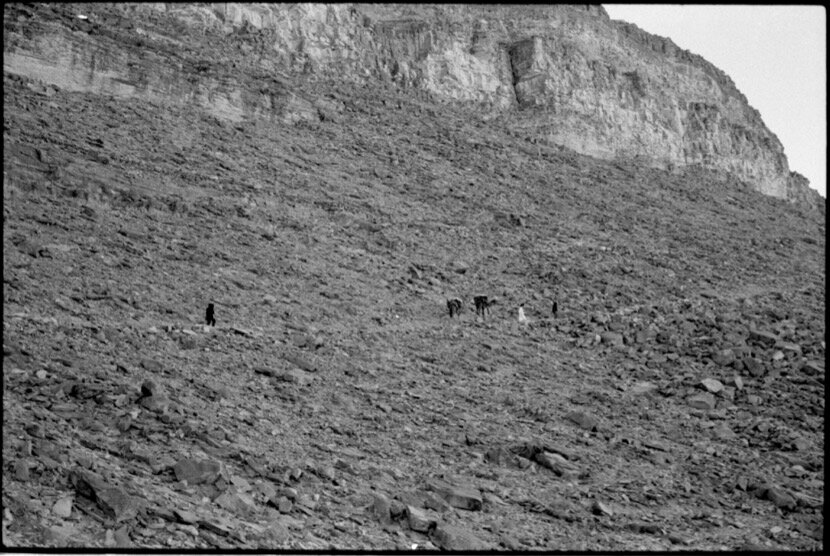

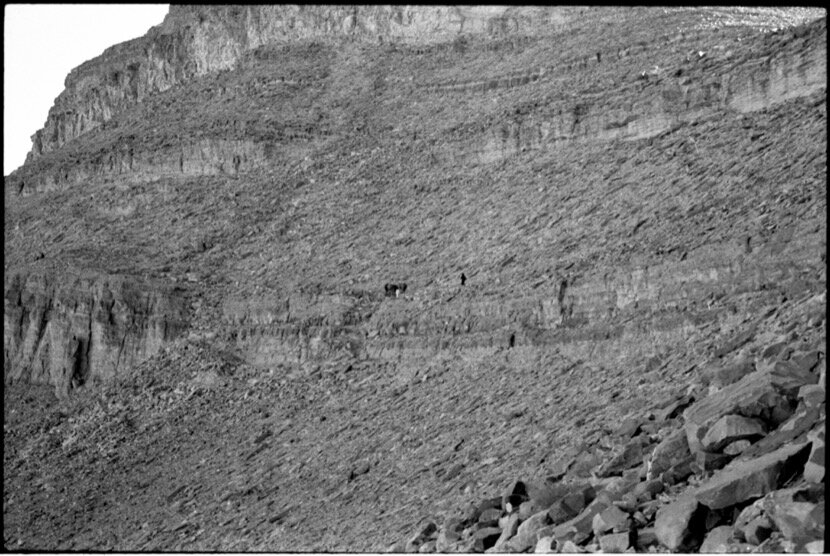
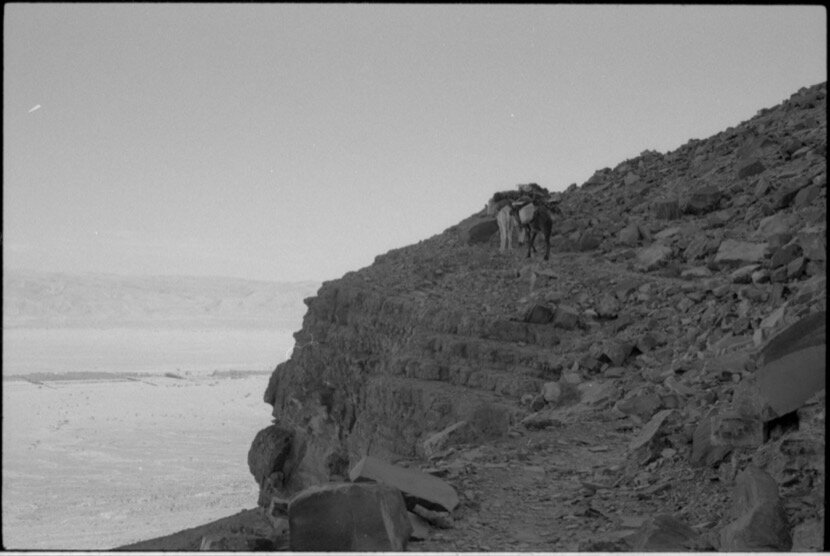
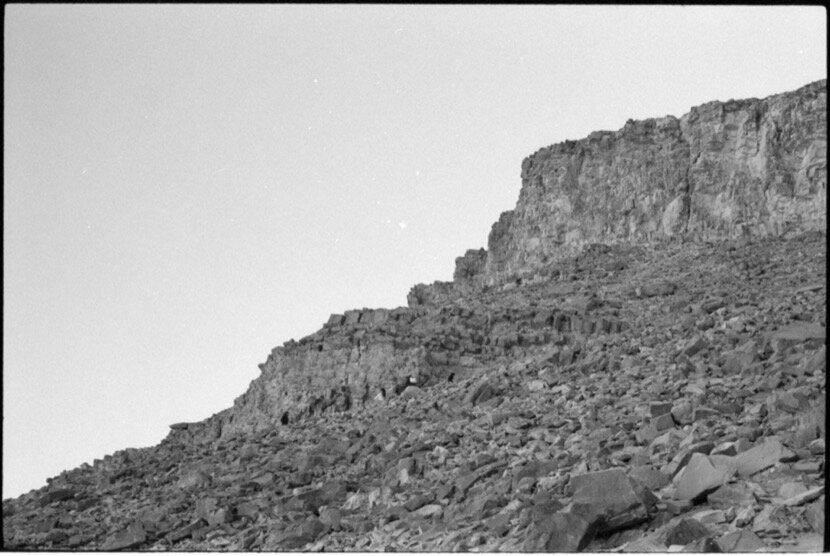
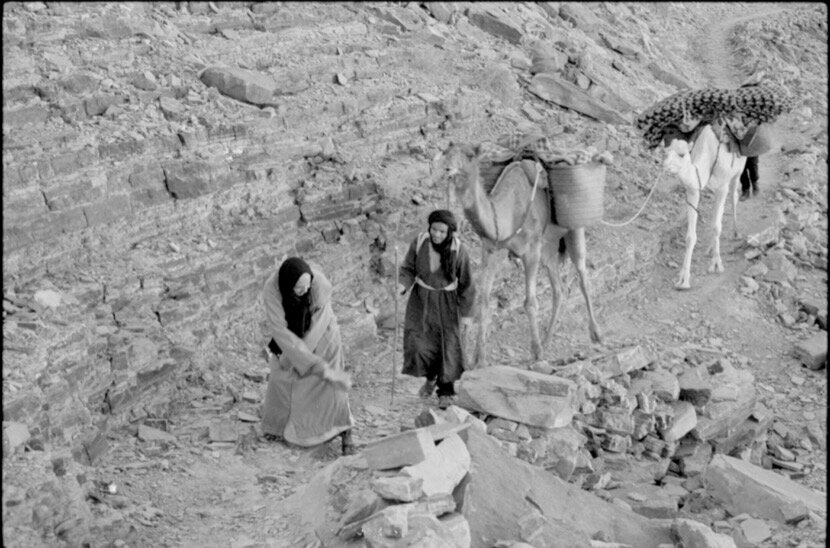
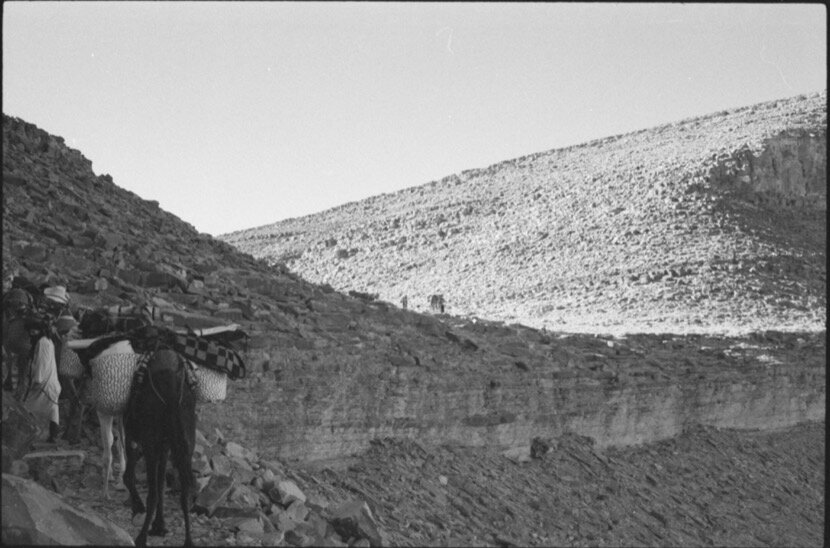

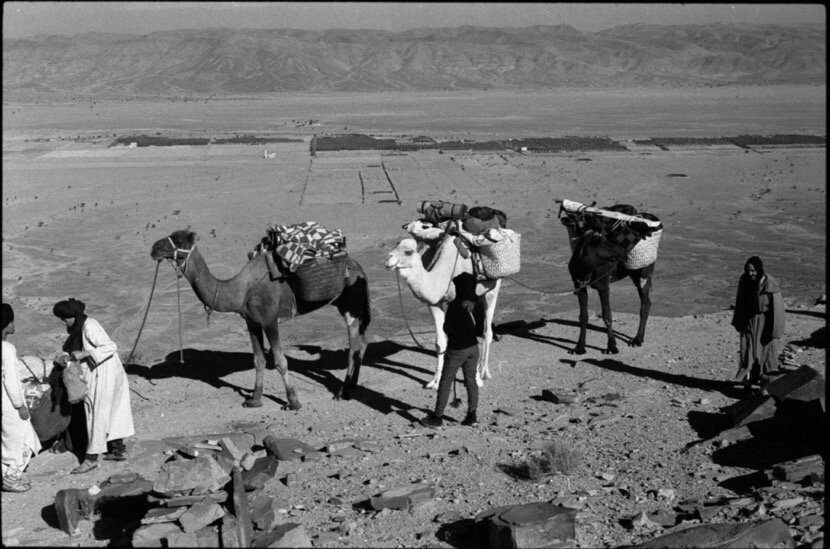

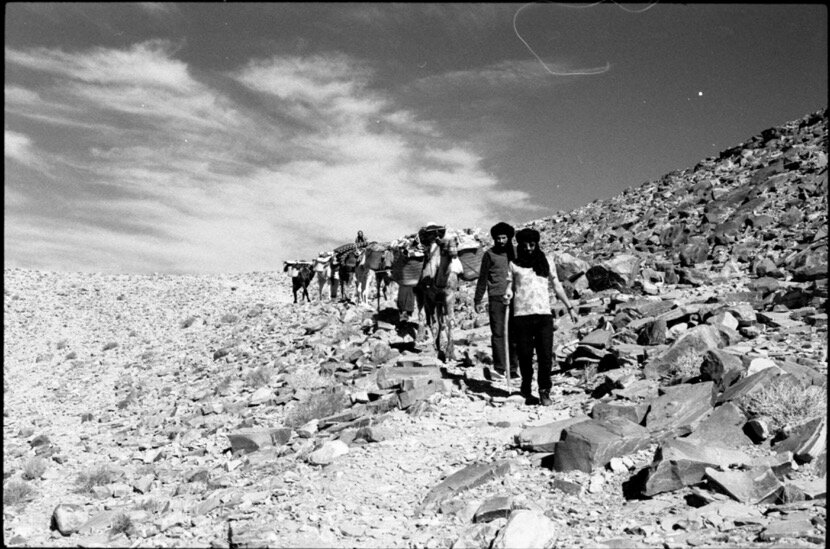
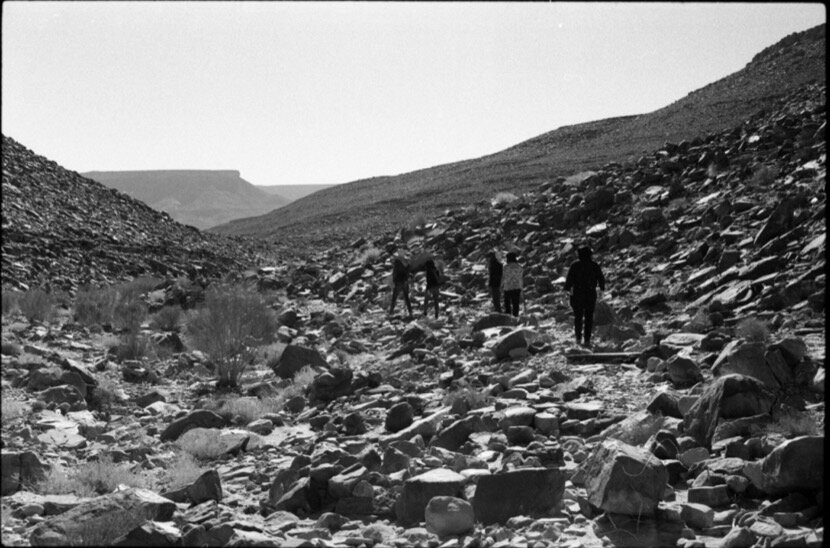
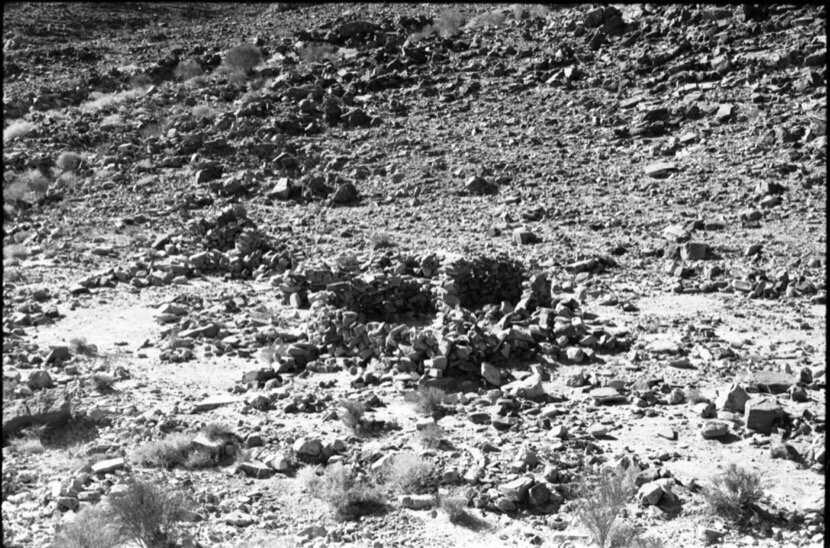
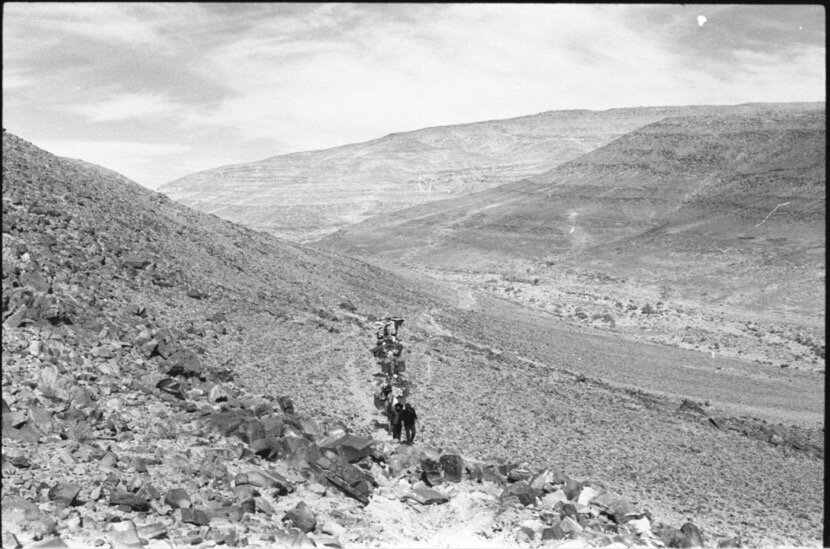

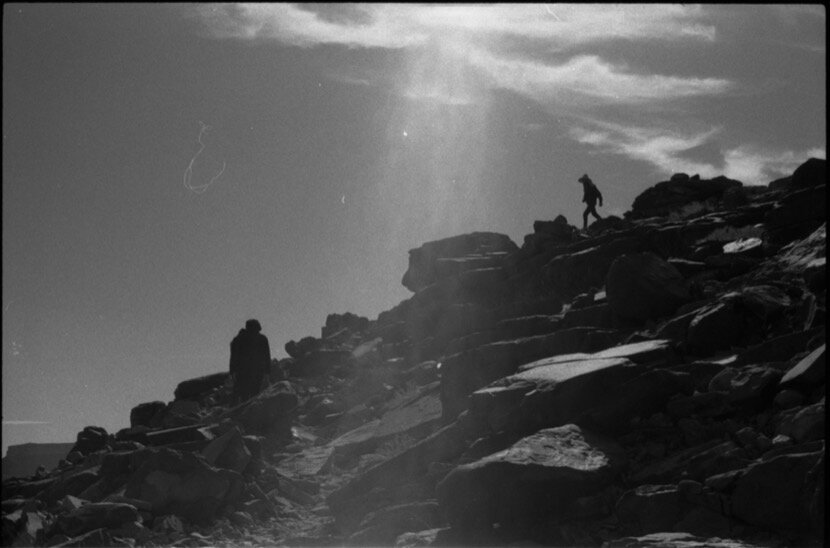
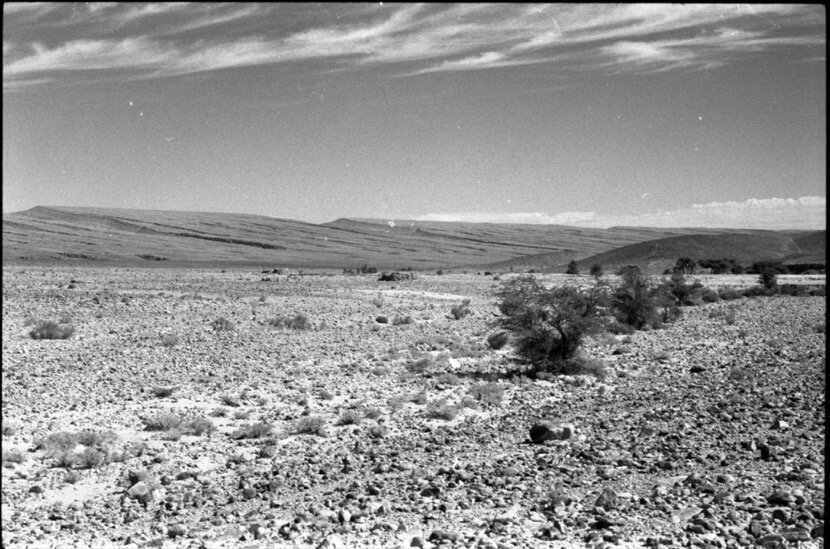
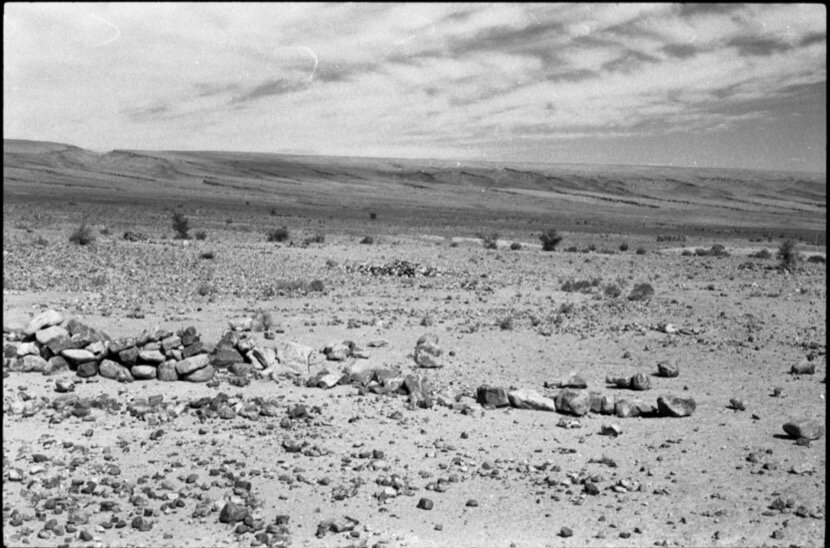


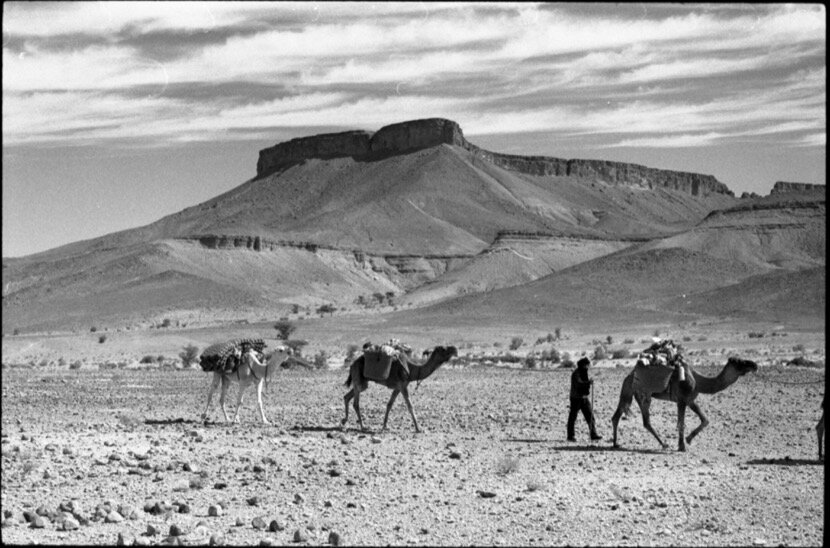
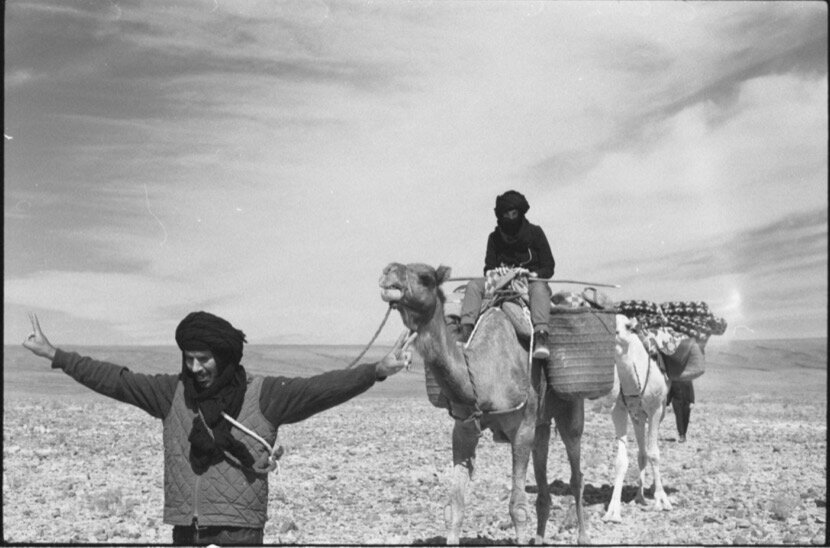
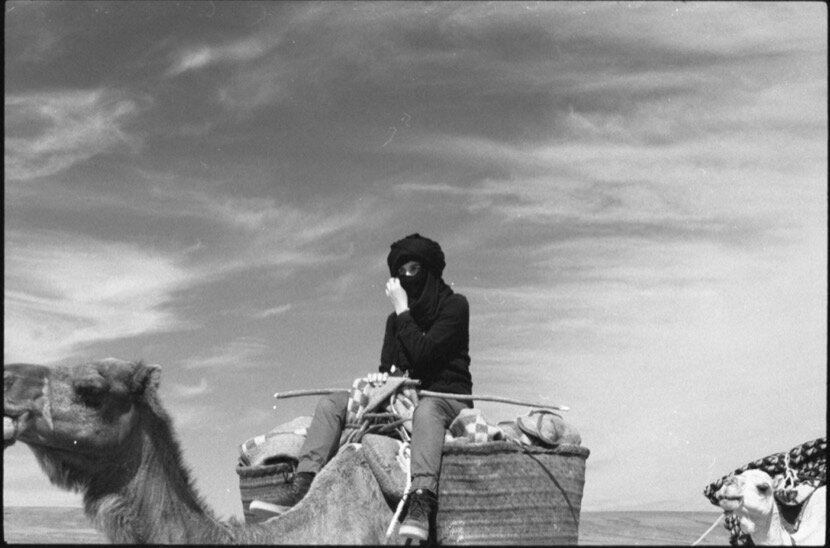
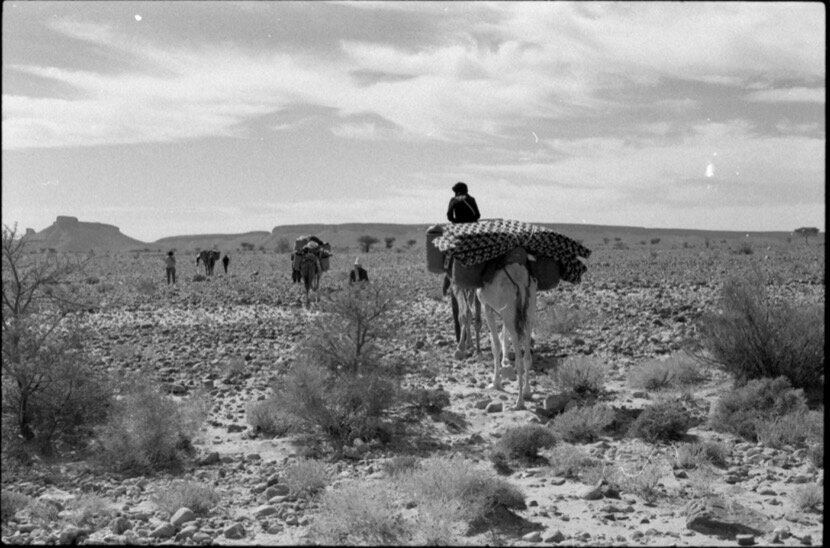
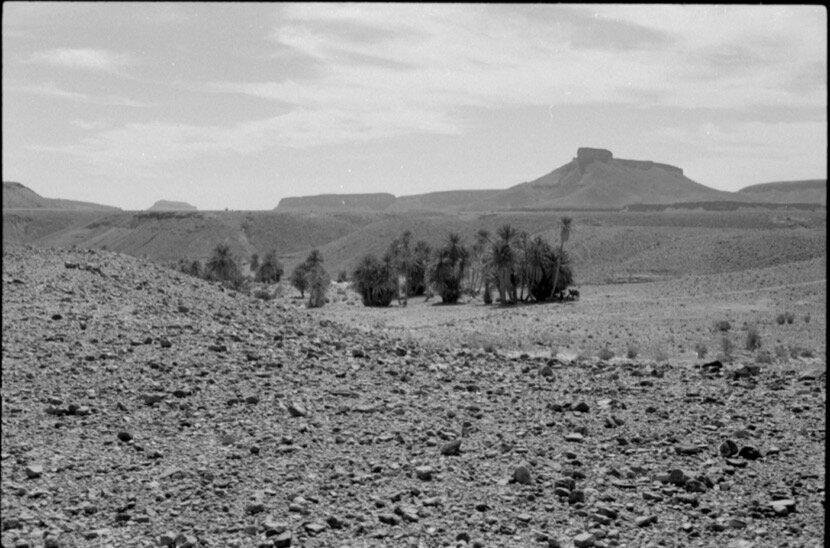
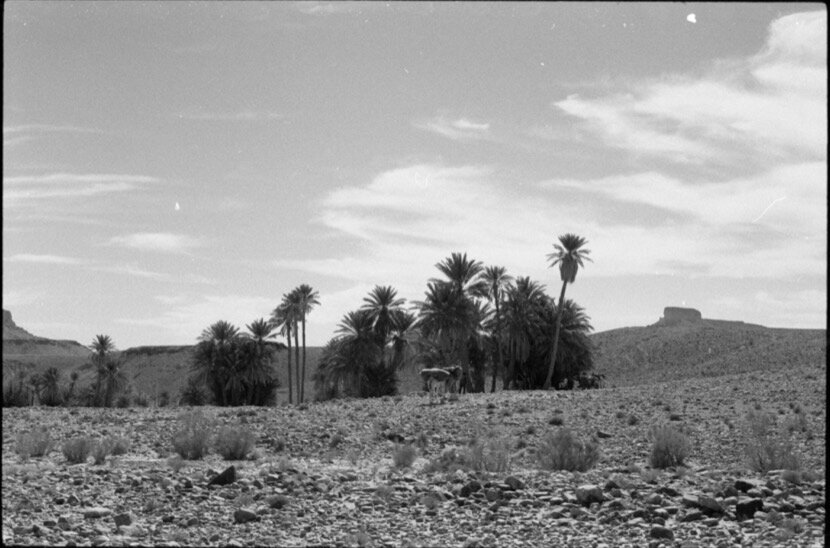
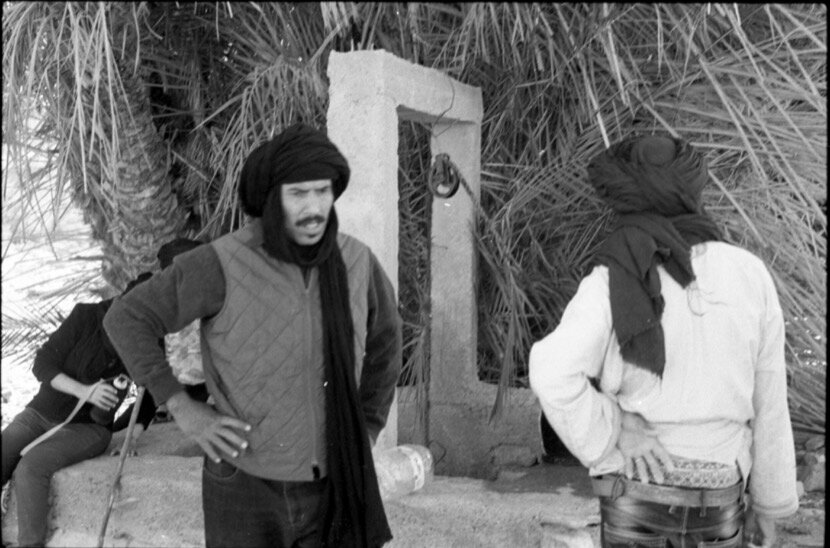
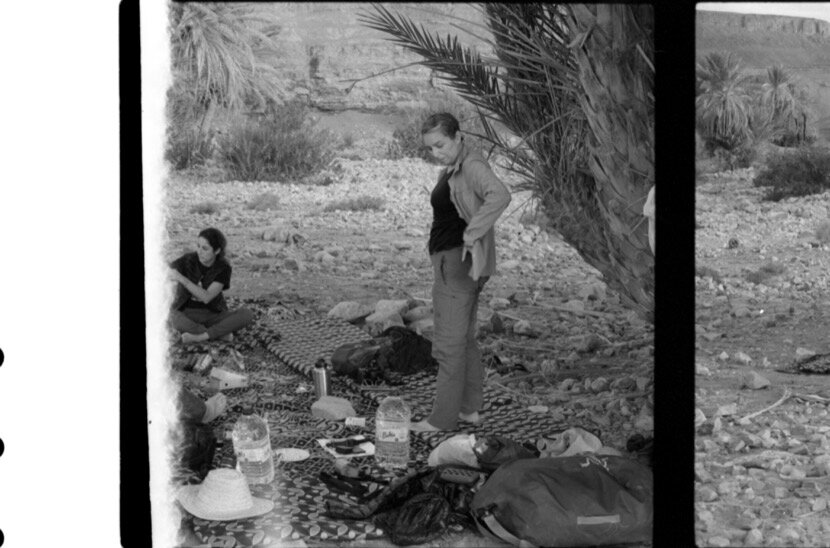
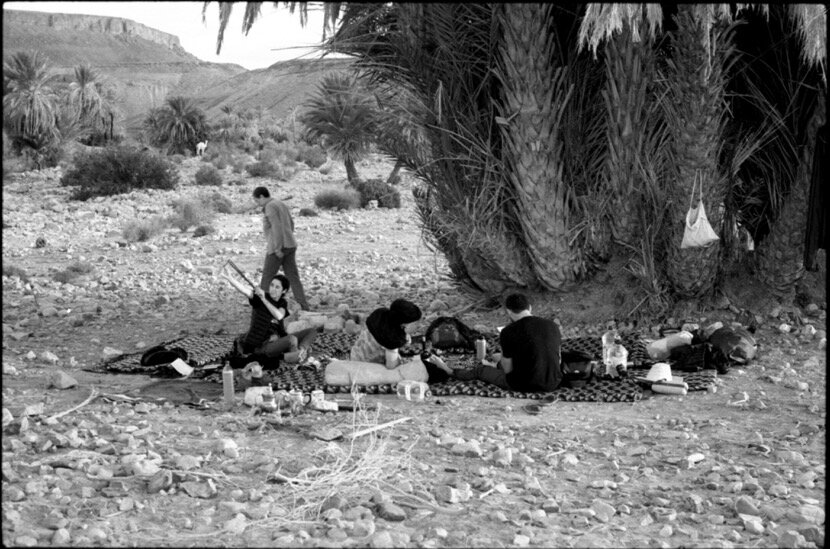
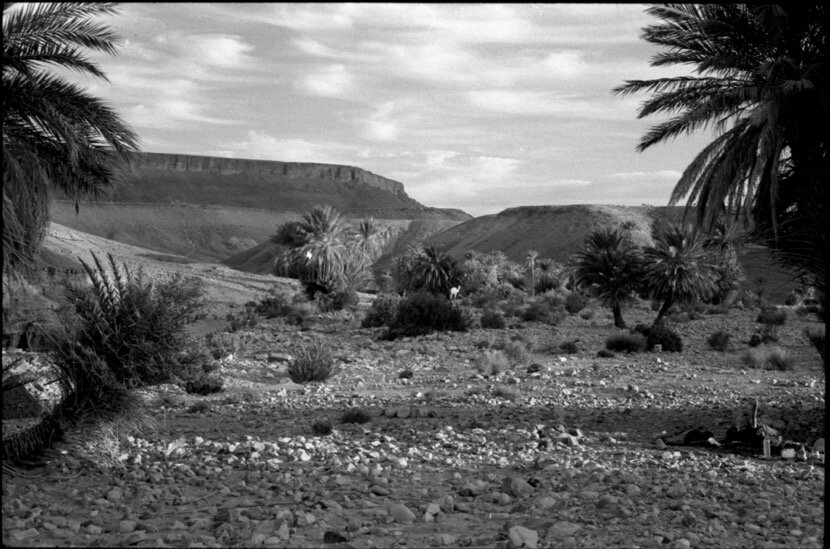
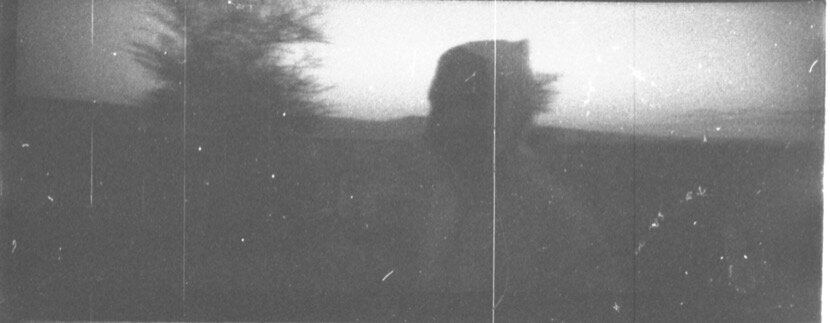
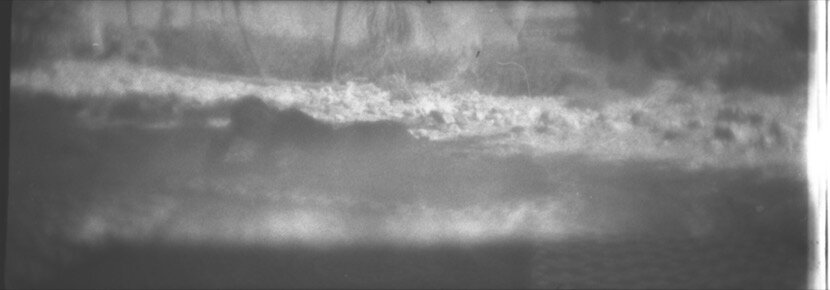
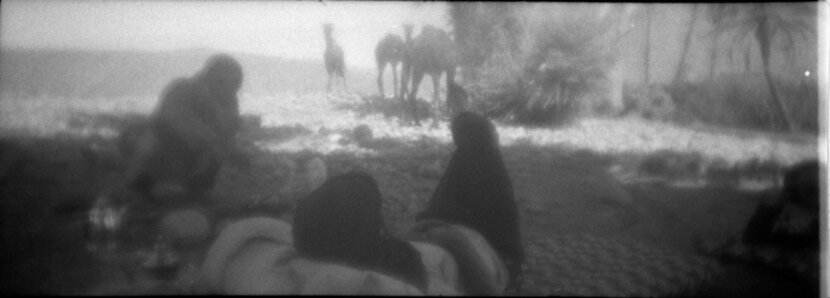

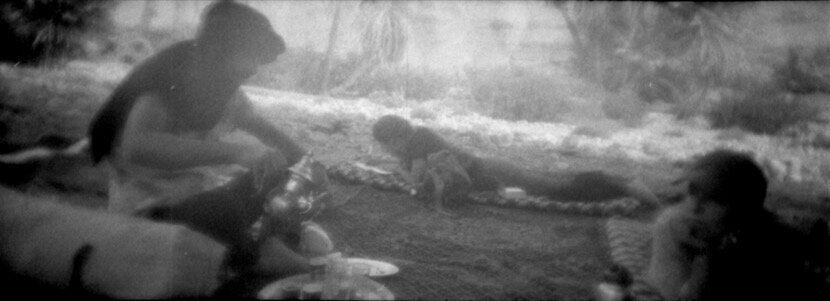
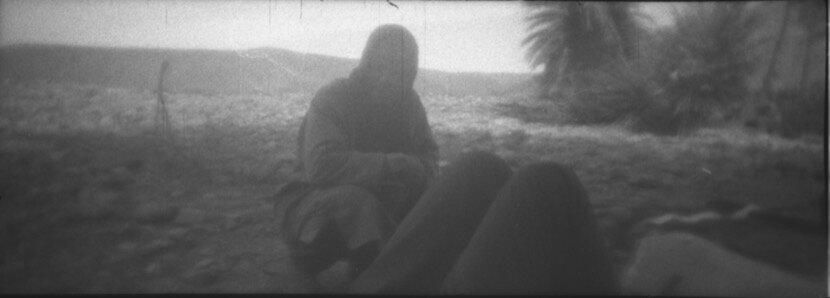
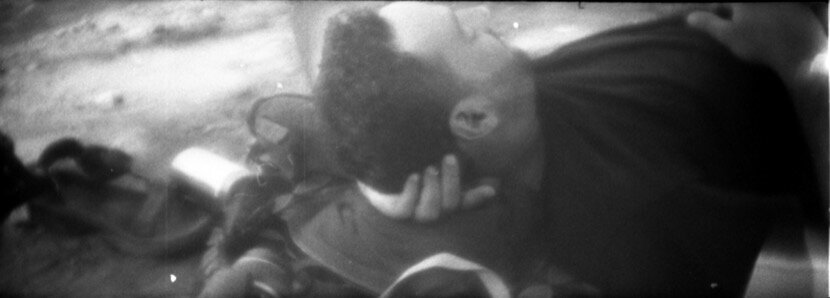
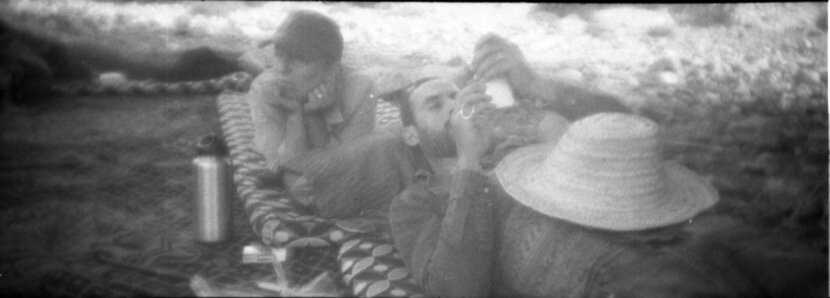
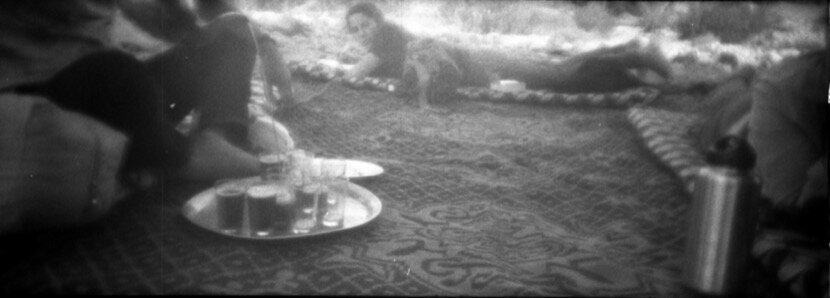
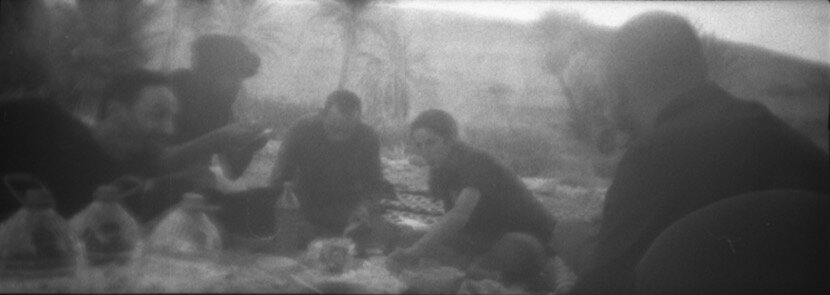
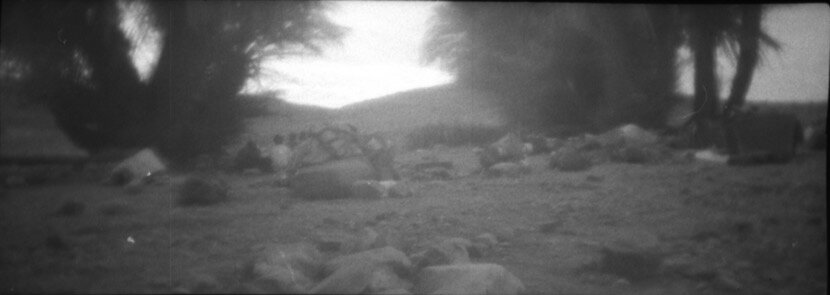
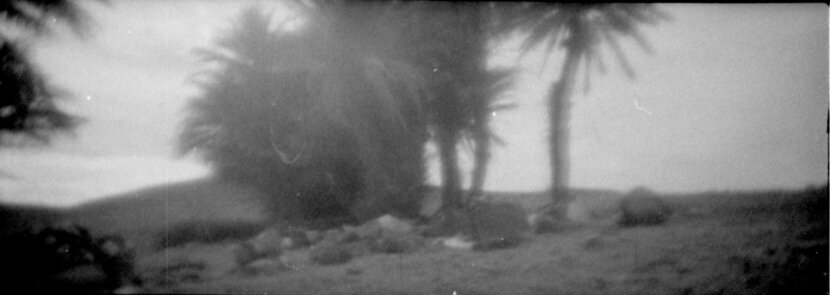
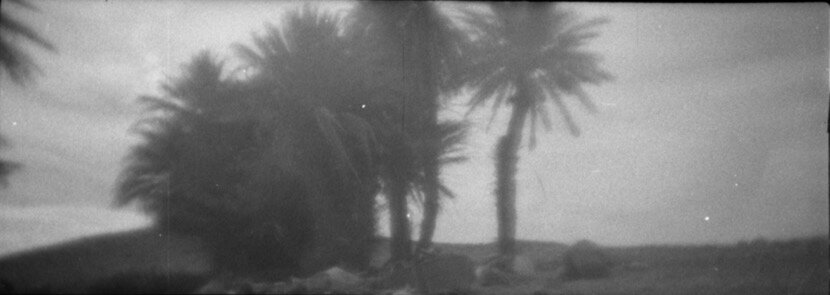
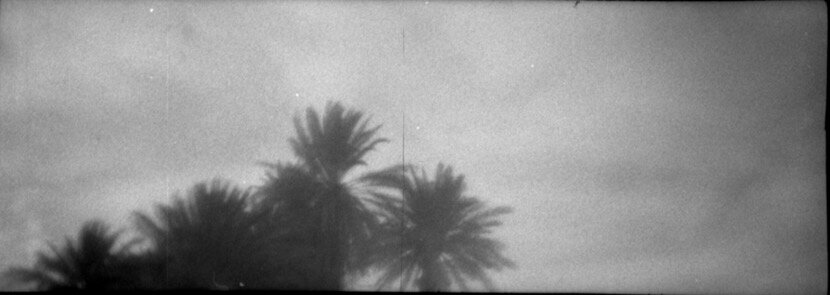
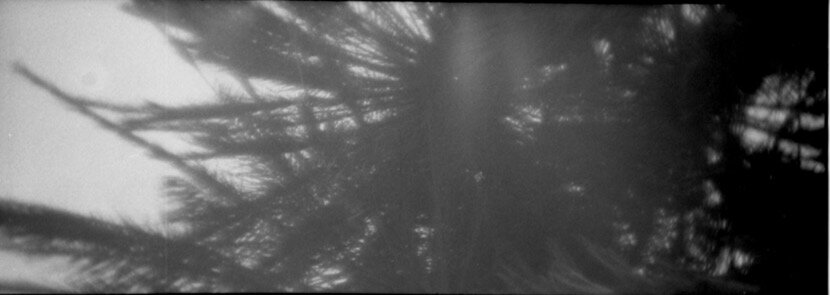
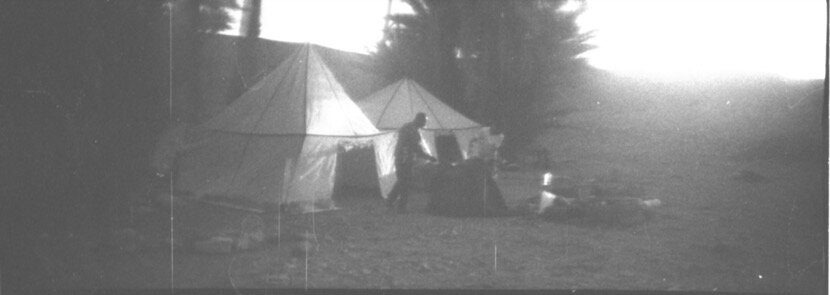
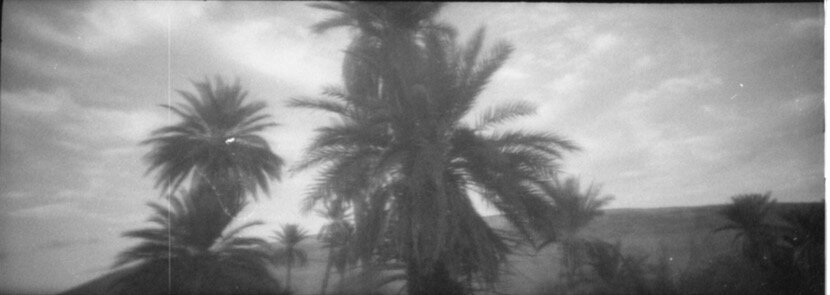
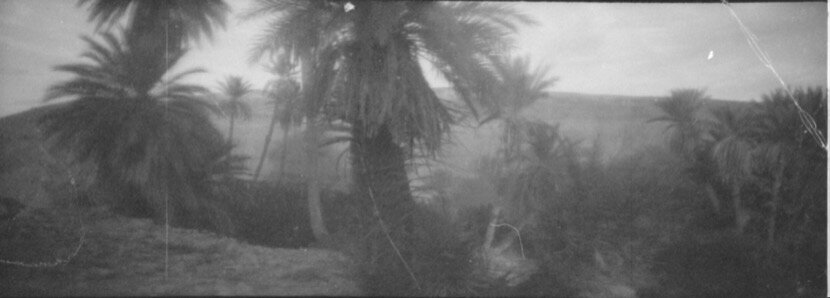
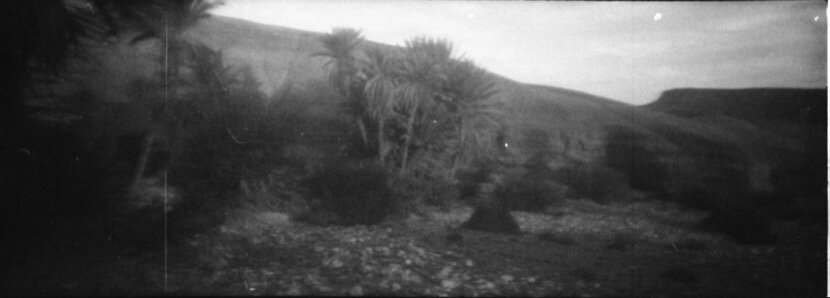
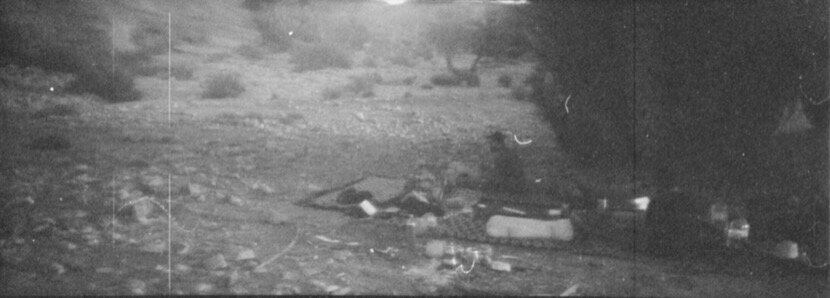
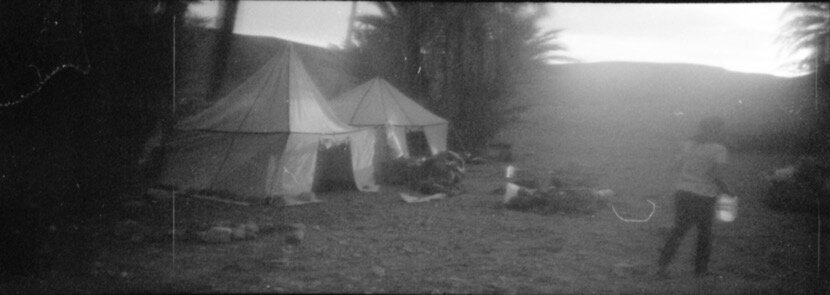
DAY 02
27.10.2019
We were lucky to have a softer night concerning the temperature, but it also means more mosquitoes.
At 9 a.m. we started walking along the river, a river course built as if it was a Roman road, Driss told me. It was incredible. Sometimes the "walls" of the bed of the river could be 10m high and then the profile of the mountains that formed the valley. There were even "natural pools" in the middle. At a given moment, everyone began to sing, taking advantage of the acoustics.
This river reminded me that a valley can host other valleys and that spaces could become very complex. Since the previous day we did not know where we were, I was a little lost, without knowing exactly the way. Besides, the explanations of Wali and Ali were not too reassuring, especially when deciding where were we going to stop, each one said a distance (translated in time) to find a good place. Finally, after 15km we settled between acacias and next to the river and a small cliff. The only thing that I do not like very much is the tents they put up on both days. Today a little bit forced by the lack of shade.
On our way we saw a lot of stone walls used by nomads but almost at the end we passed by a "fitted out" tent by the nomads. Everyone was so happy about the trip!
Ali and Wali, wanted to continue another hour, even 4, but it seems to me that Khalil did not explain them that we would walk 15km a day, that is, between 3 and 4 hours. Everyone was ready to continue but faced with the uncertainty of the two "guides" about how long we needed to get to a good place, I decided that it was better for people to want to continue, rather than to make them suffer for 1 or 2 hours more, taking into account that fatigue is not proportional to time and that muscles could be felt tomorrow or the day after tomorrow.
Once rested I was worried because Wali and Ali did not understand the maps and again, the time required to get to the dunes and then to M’hamid seemed to me excessive, based on the plans I had and what I had measured on Google Maps. In the end, we have superimposed on the plans the narration of their journeys and now it is clearer that we will have to walk 3 hours on the day of rest, which is not a problem for anyone. Hopefully, tomorrow we will see the dunes from afar, but to tell the truth, I prefer the landscape of mountains, valleys and pebbles, especially if there are small roads that make the function of highway. The only “desire” to get to the dunes comes from the fact that there, you can see the celestial dome.
Until now, all my friends are happy with the landscapes, camels, walking, camel drivers, stars, silence, the absence of the Internet, the absence of foot injuries ...
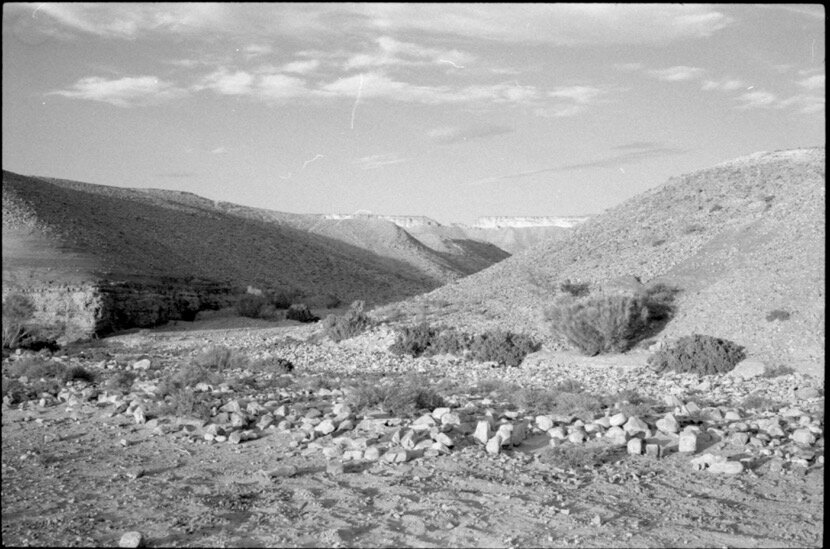

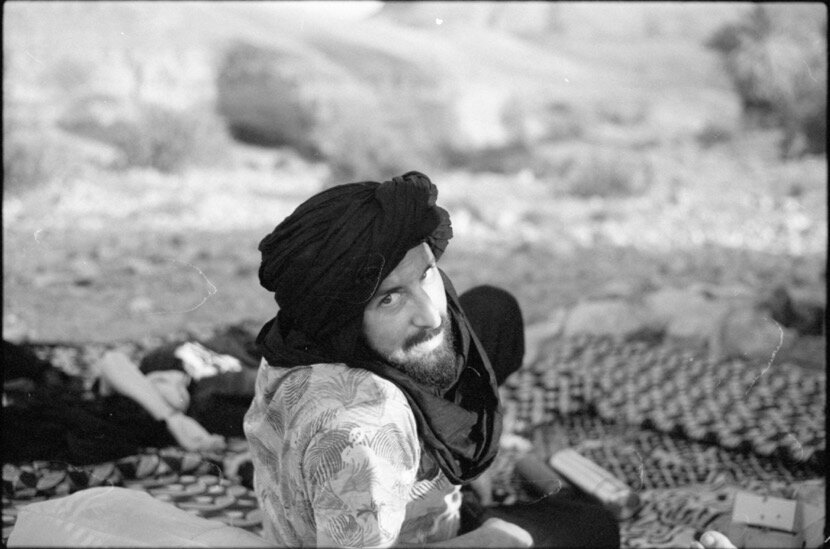
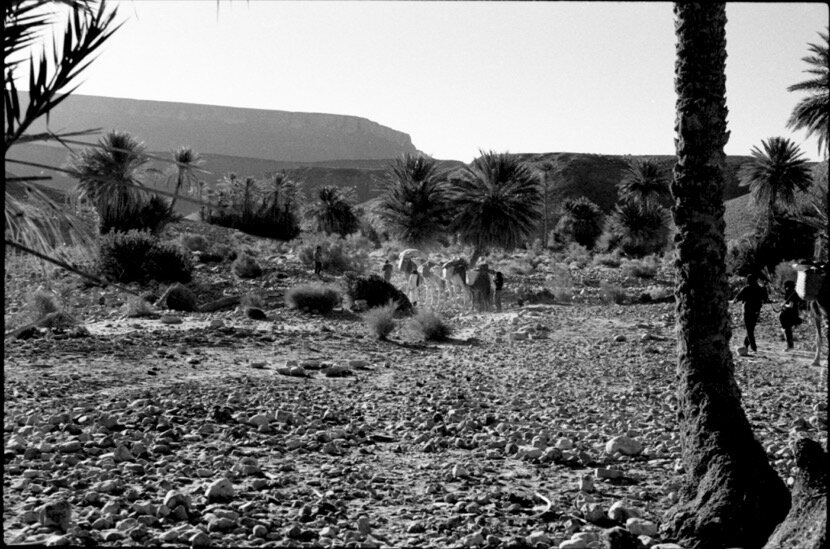
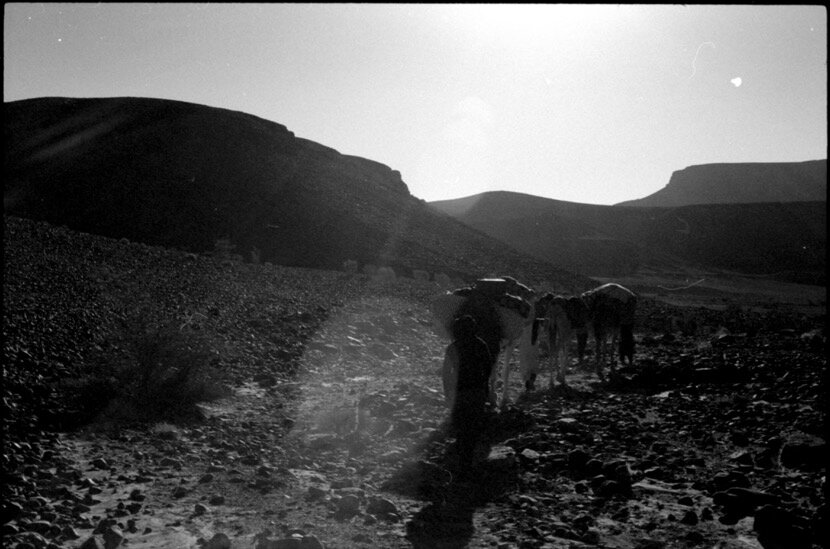
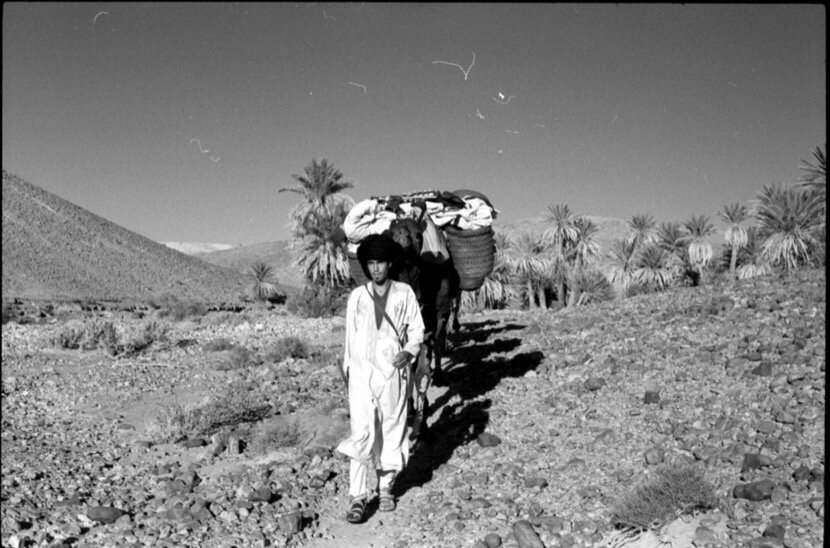
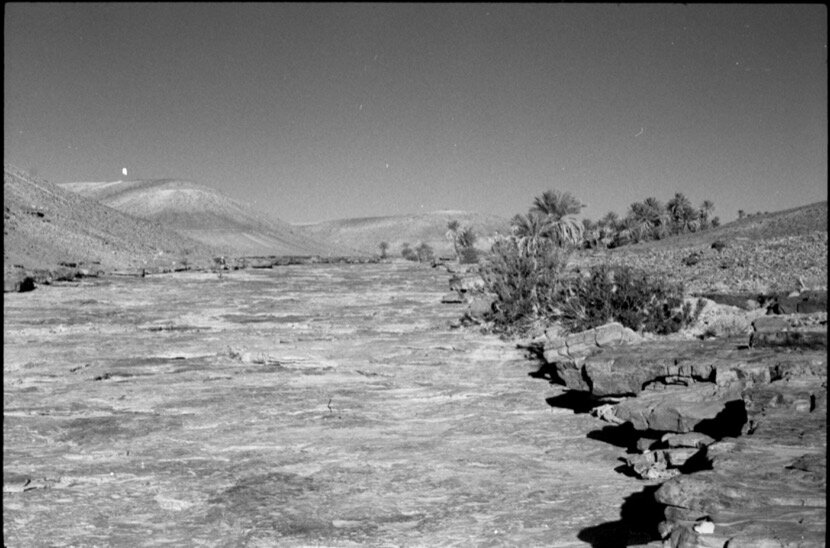
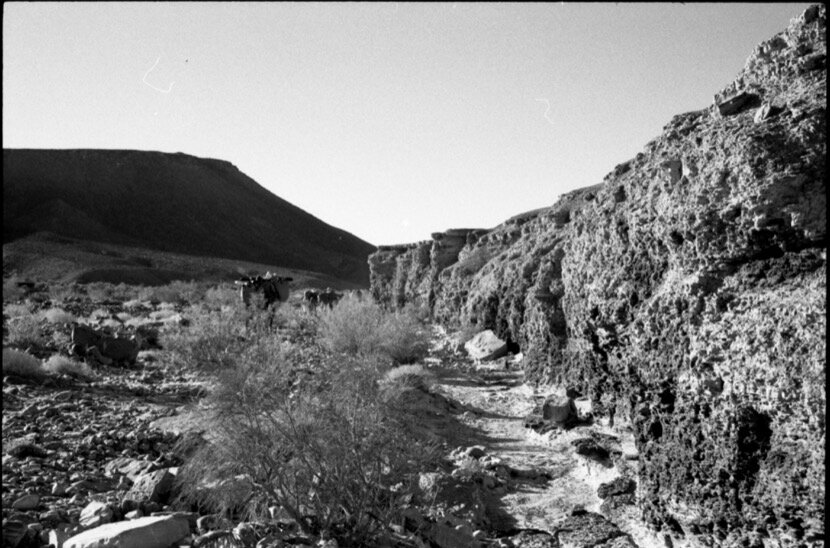
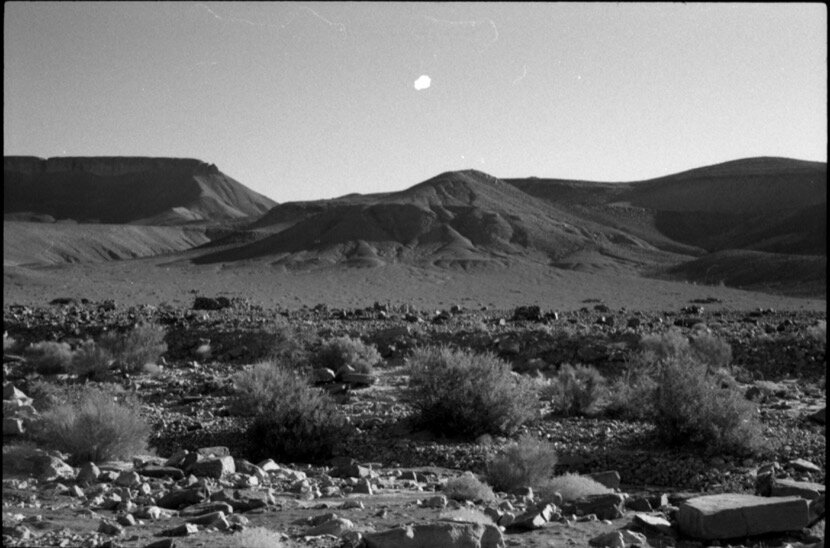
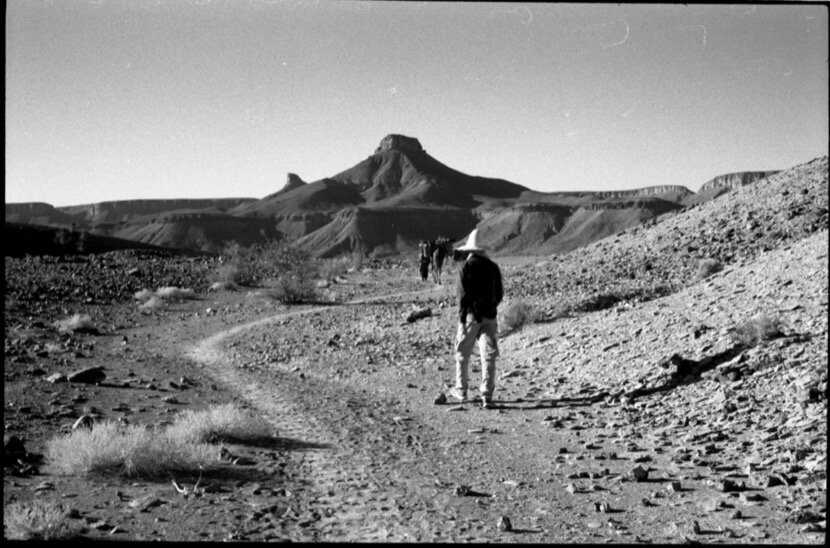
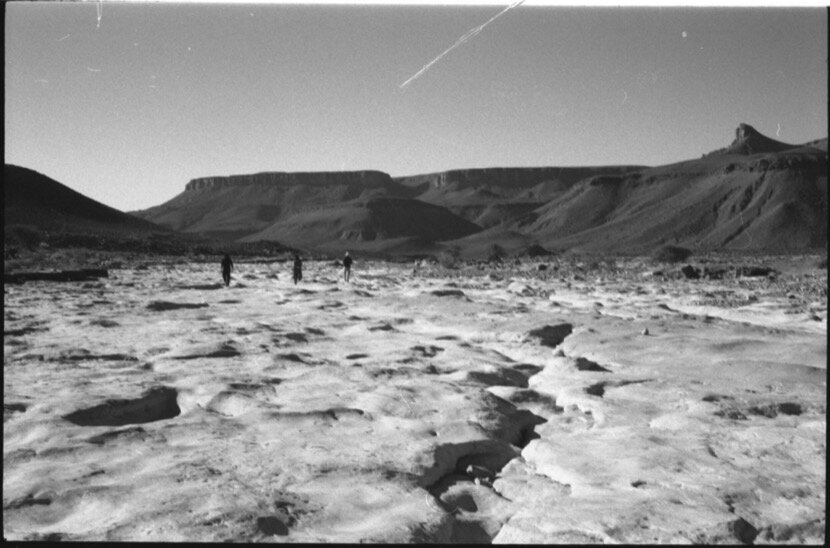

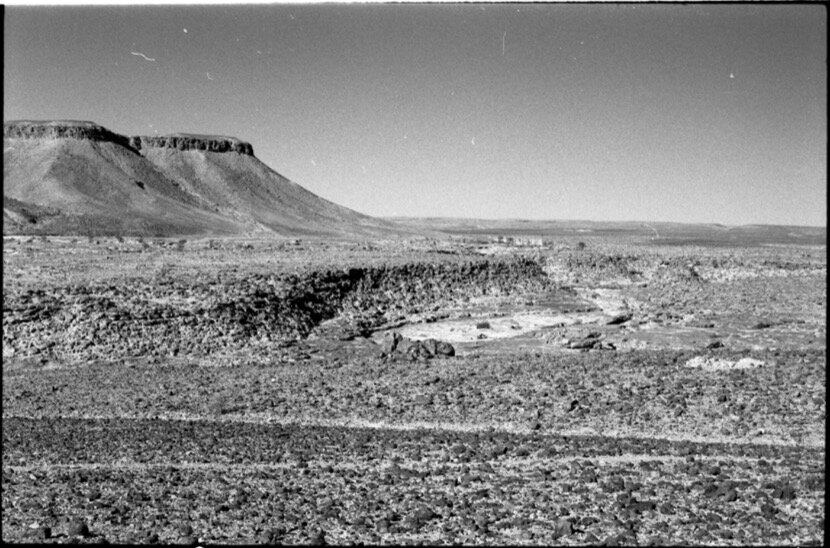
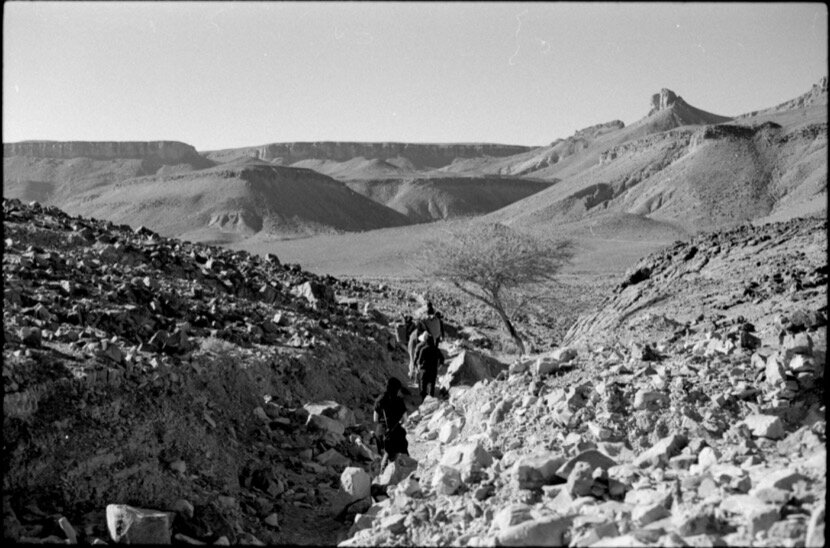
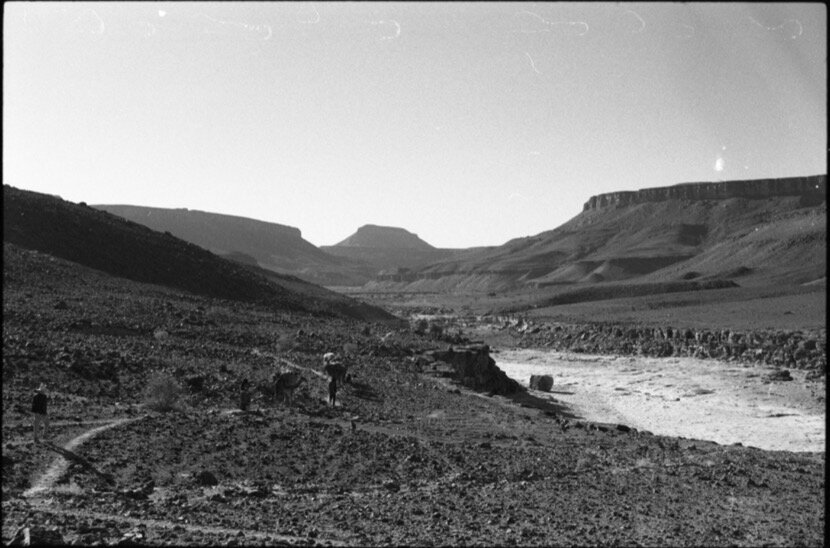
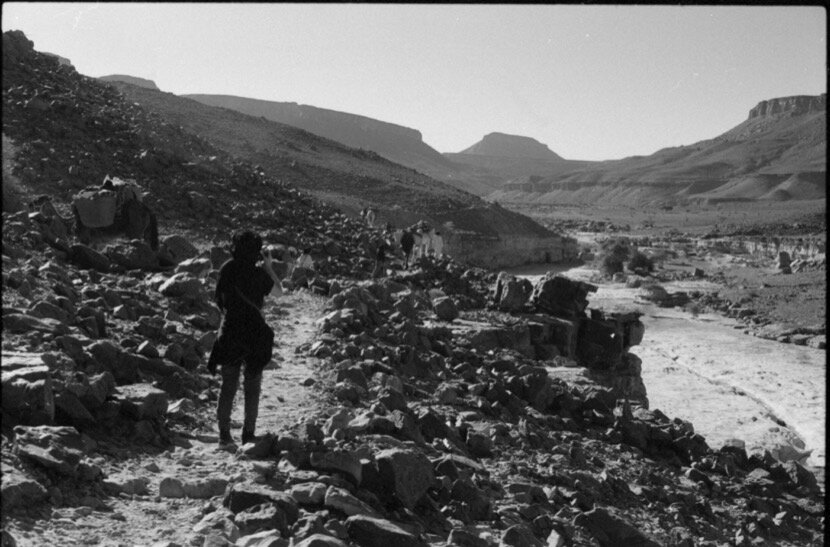
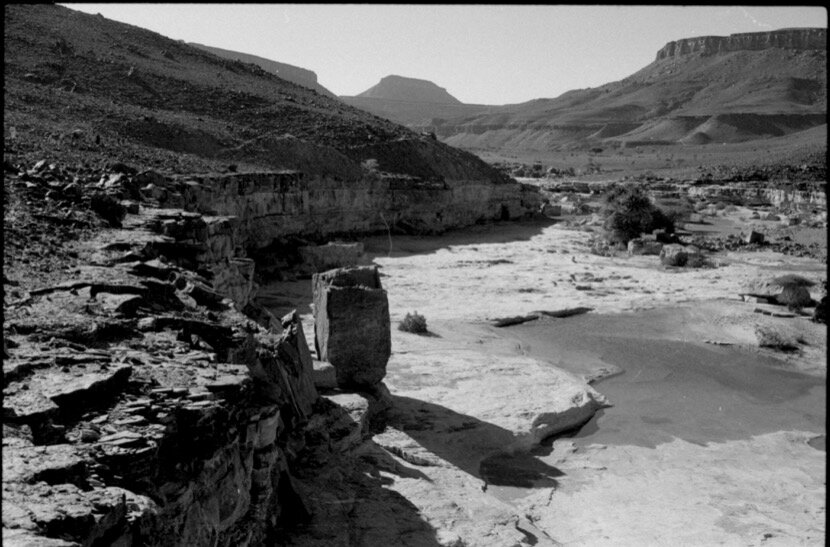
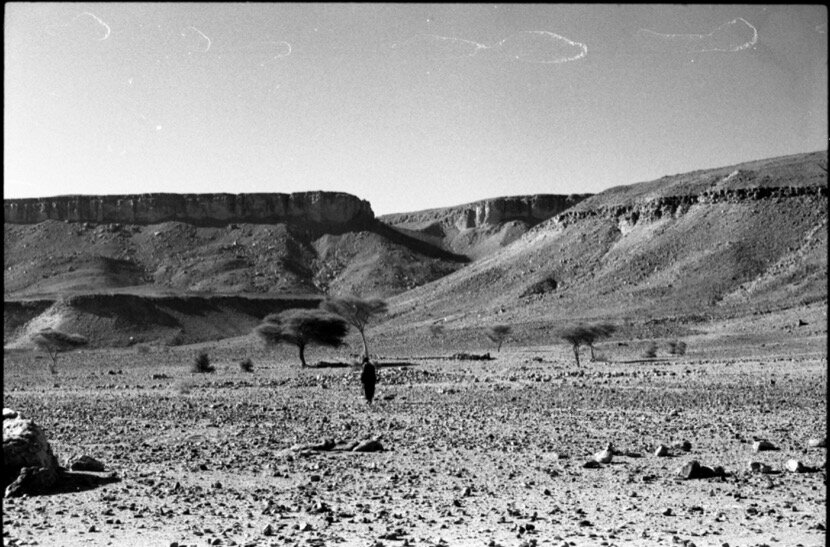
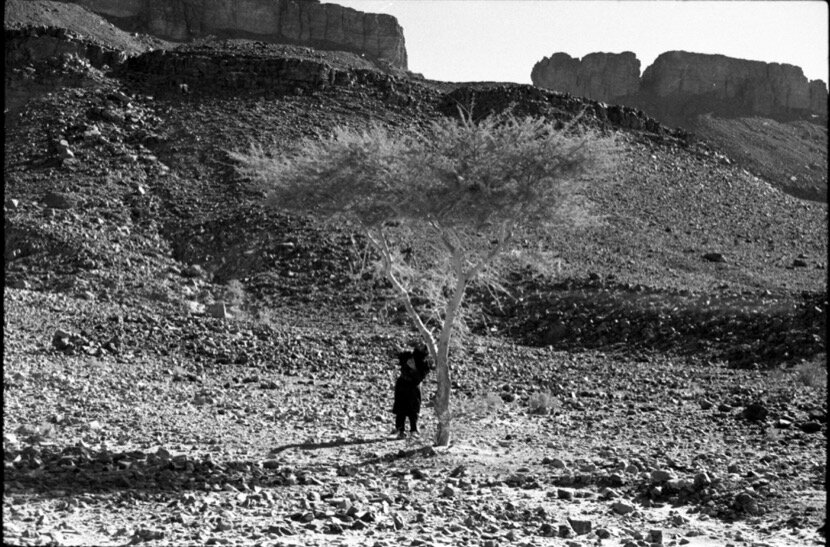
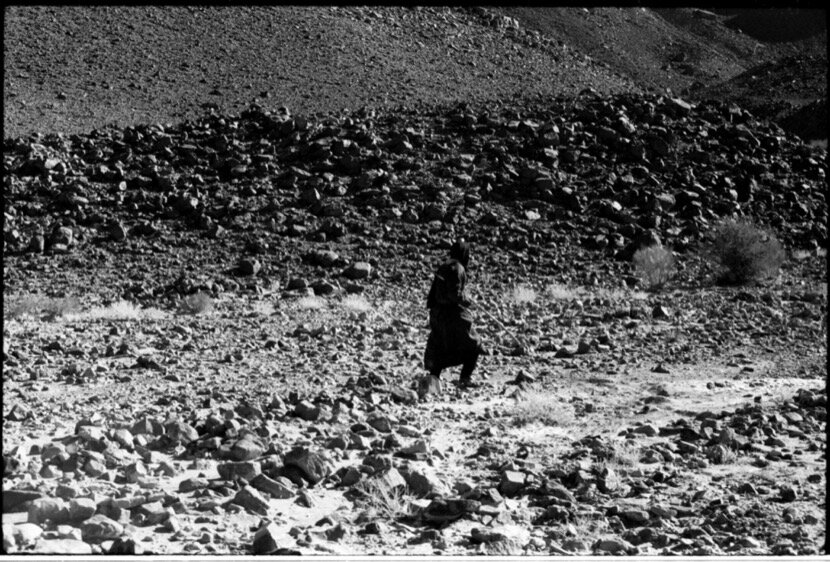
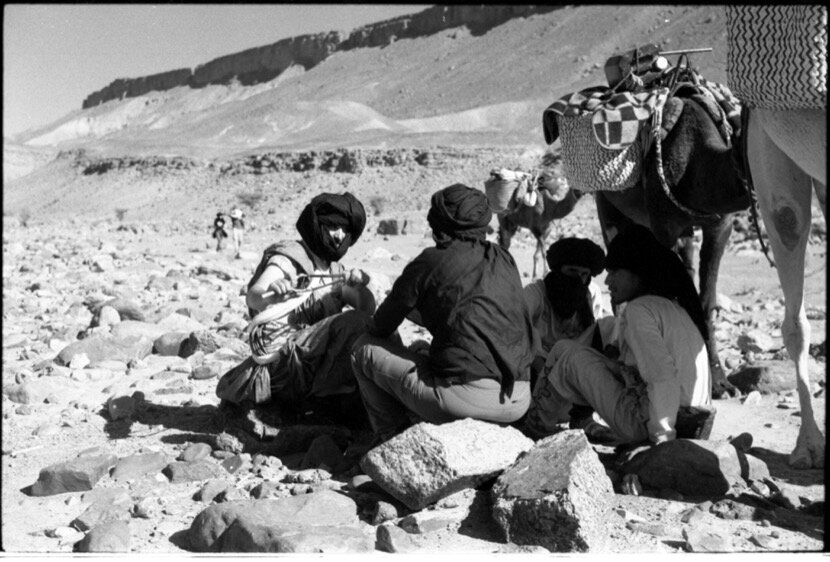
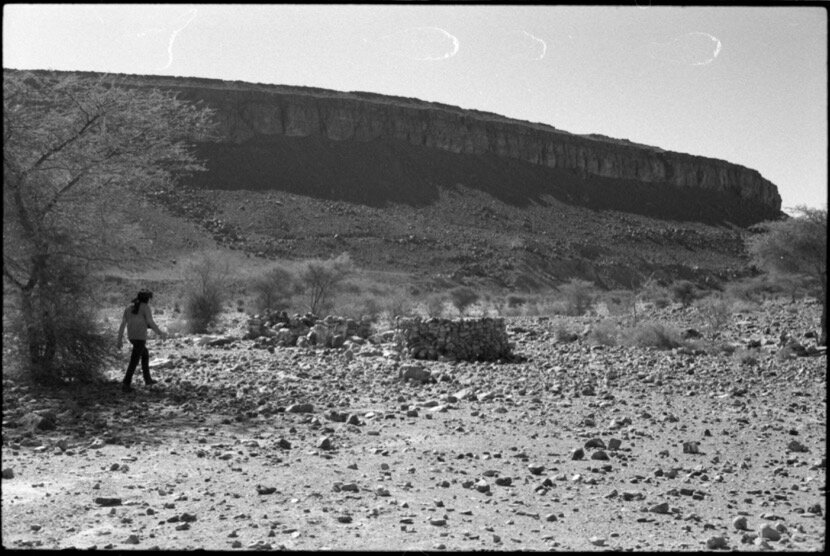
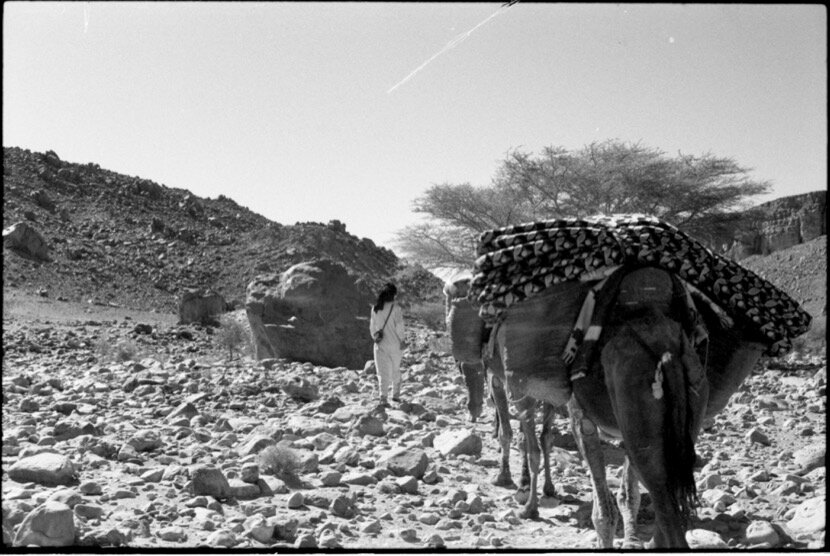
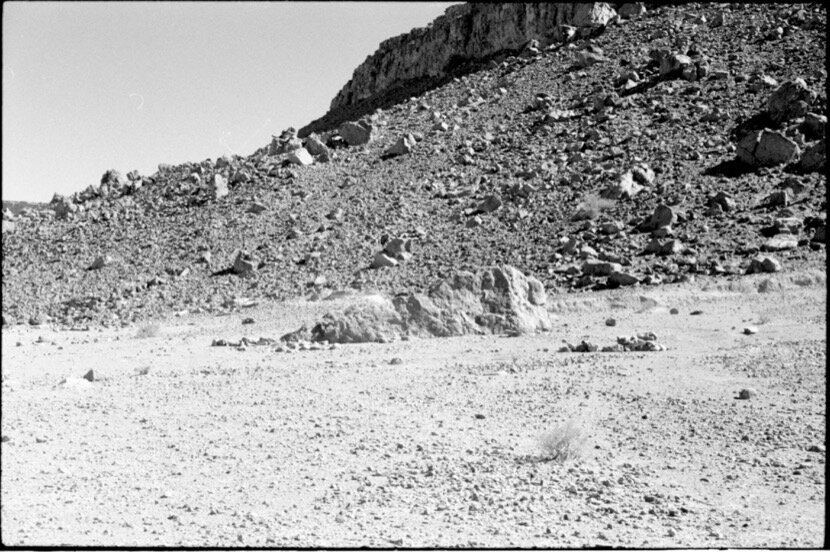
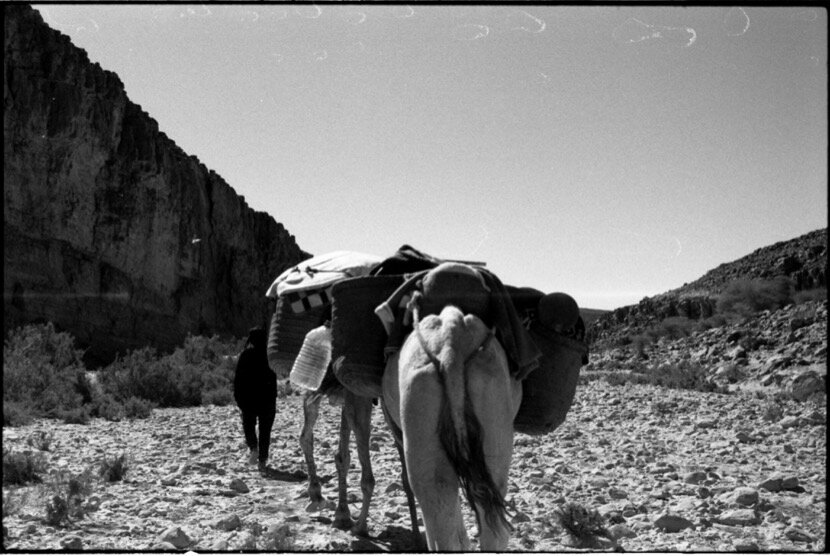
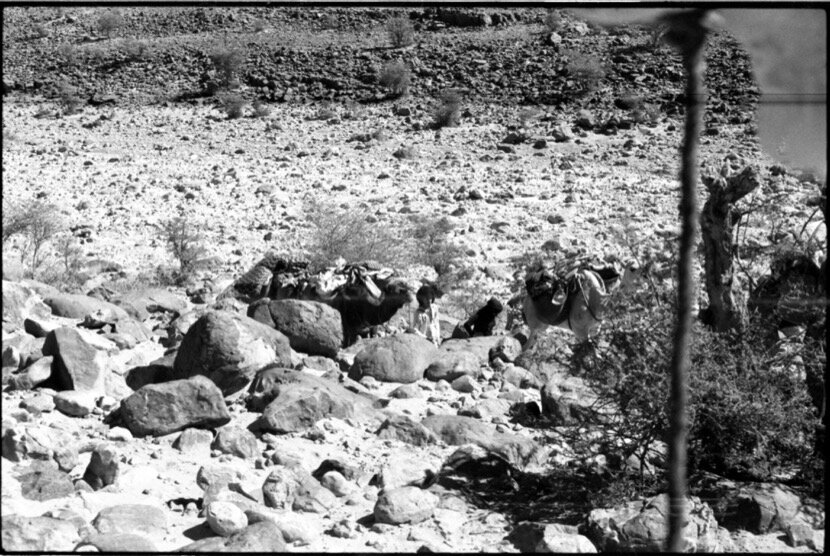

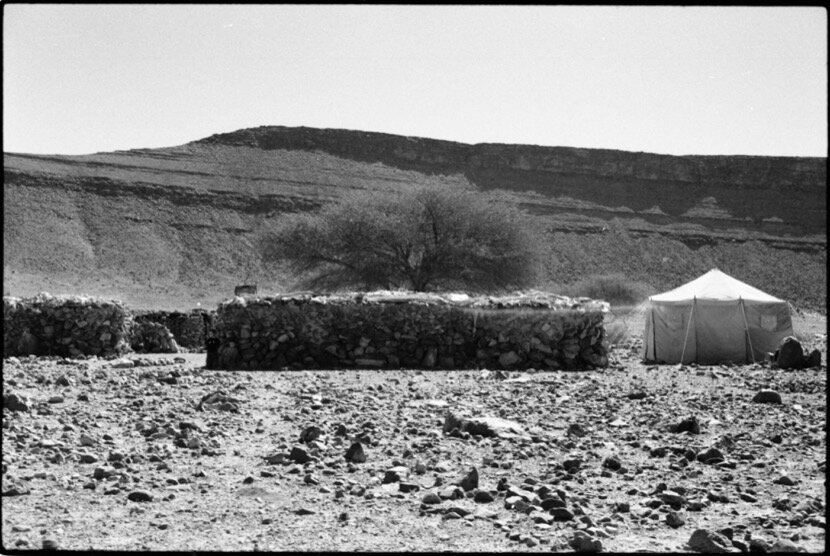
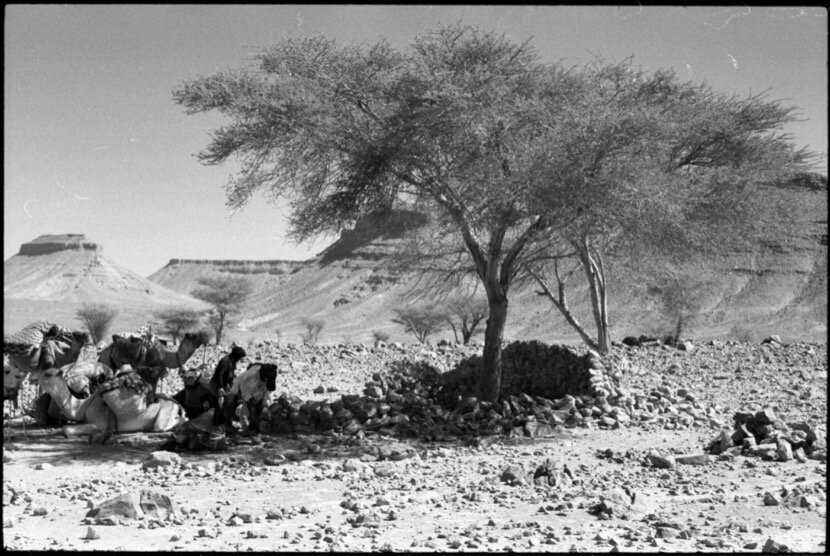

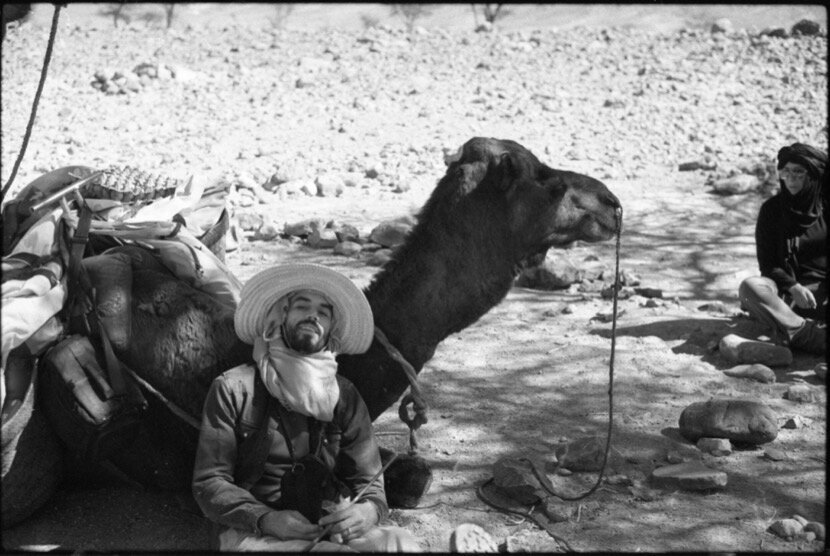
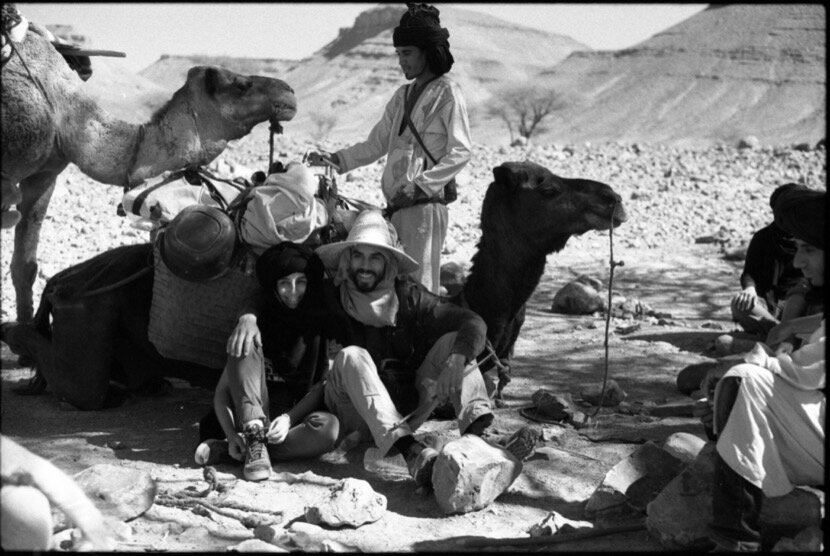

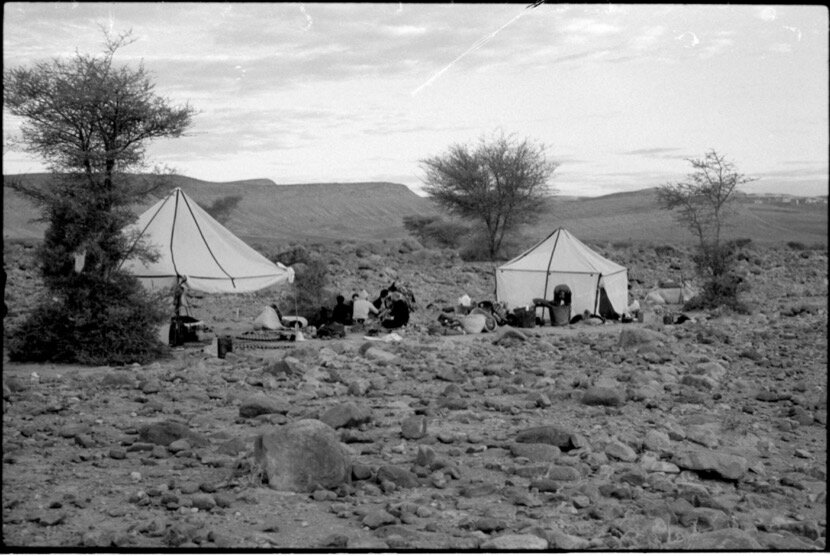
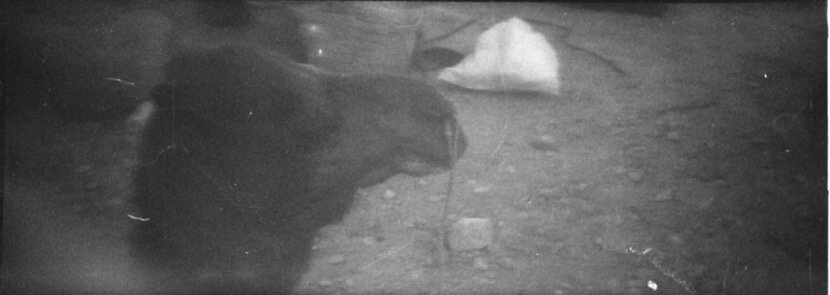
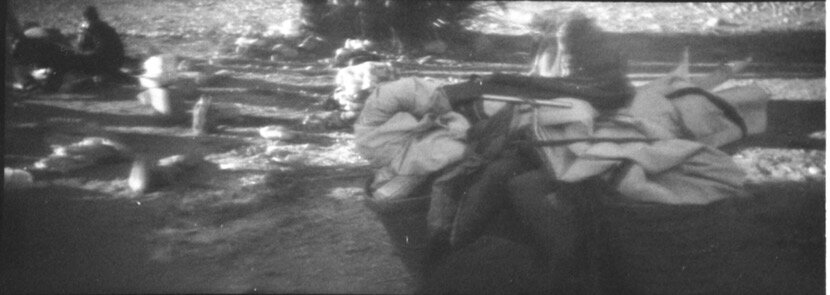
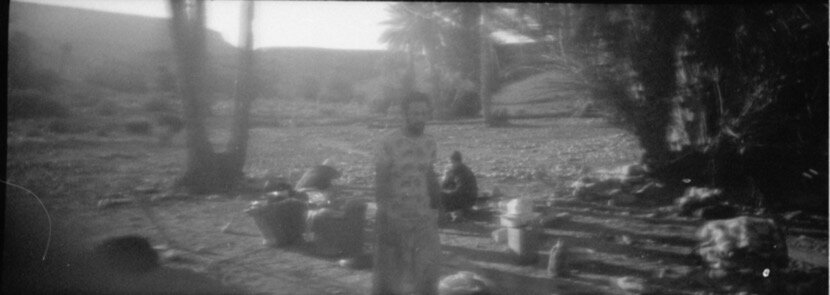
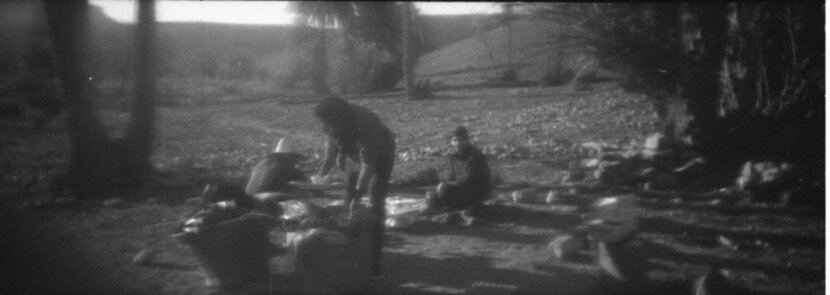
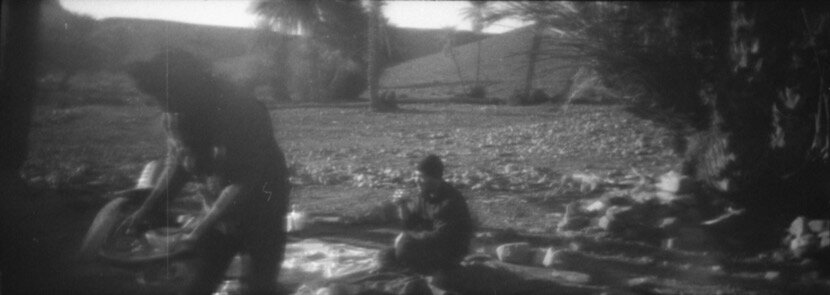
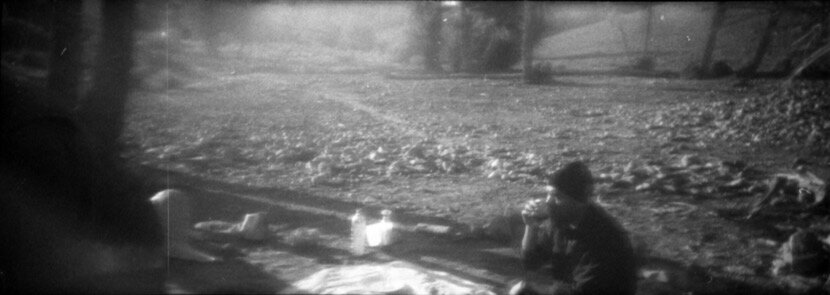
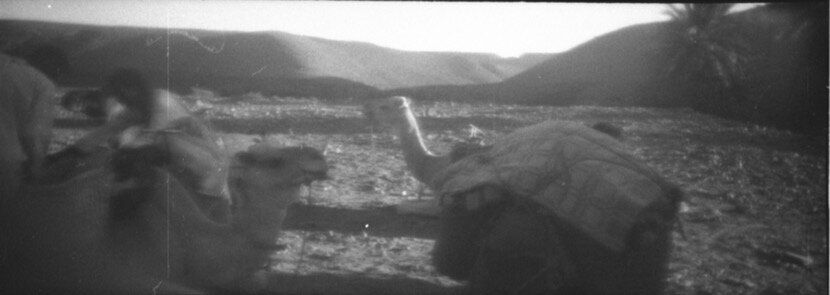
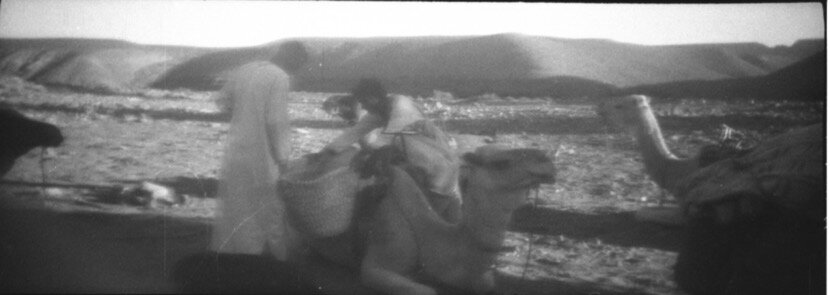



DAY 03
28.10.2019
The night was "disturbing", the spider that had come towards me, while I was writing on the carpet, worried me, according to Ali the bite is like the one of the scorpion and the fact that it does not hide and even worse, that comes to you ... In the end I thought that even worse things could happen in a city.
Once again at 9am we are on the road and after the wadi, we are markets on a pebble field, without trees, but with a small path that has made a nice walking.
During the whole trip I tried to position myself in relation to plans and to the geography. After 2 hours, we arrived at the antennas, and the hostel was finally the "sacred" oasis, which I had visited in 2013. Fortunately the day before, I decided not to continue because Ali and Wali did not agree on the distance till this place because in the route there was not another place with trees. But in the morning, Wali had told me that we had 7-8h to arrive at Erg Chegaga, but after the break at the oasis to take some water from the well, it took us only 2 hours, to settle down between the bivouacs (and the dunes).
On the way we saw a school for nomads, with 2 classrooms, an office for the sheikh and a house for the gardian, who told me that it's been 2 years since anyone uses the classes, but 3 years ago, children stayed for 1 year. On the other hand, he did not know who was running the school.
In the dunes, I could see how there are so many more bivouacs, it is not like Merzouga but it will be soon.
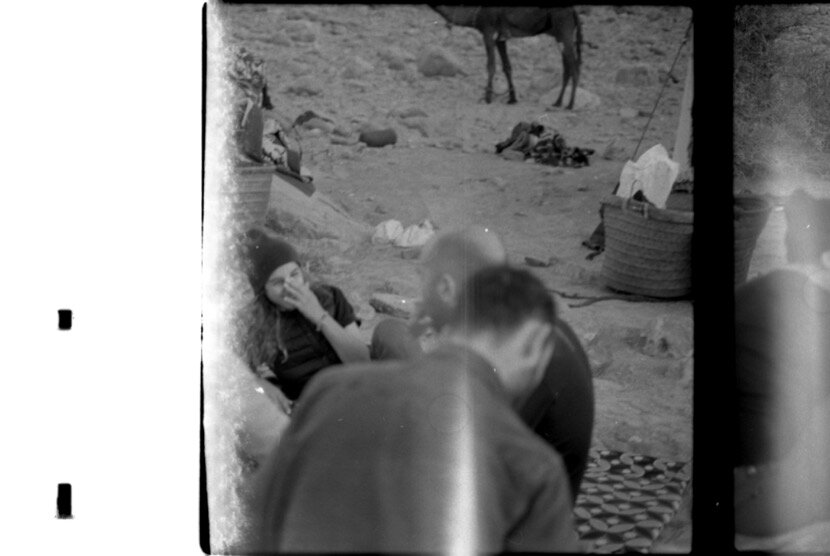
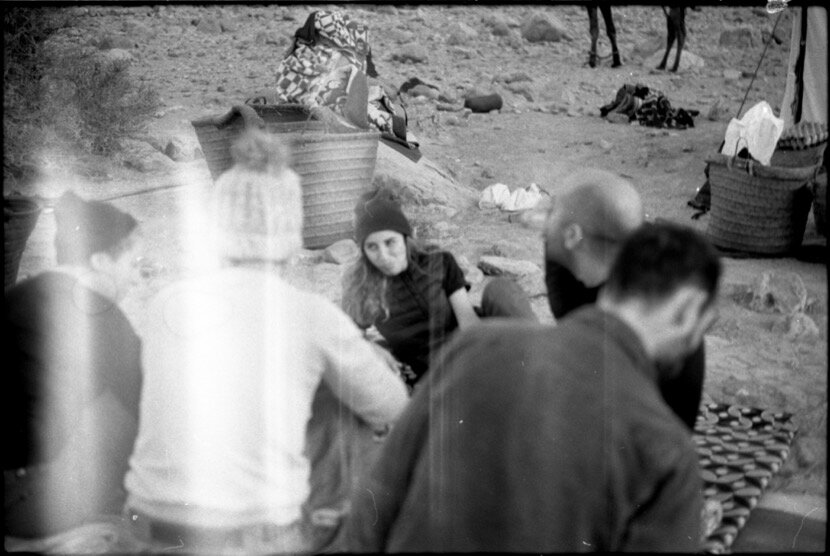
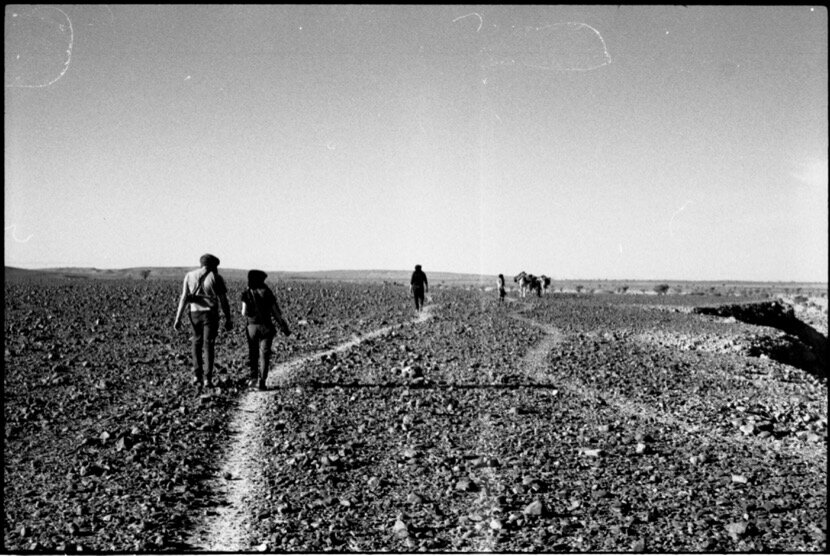
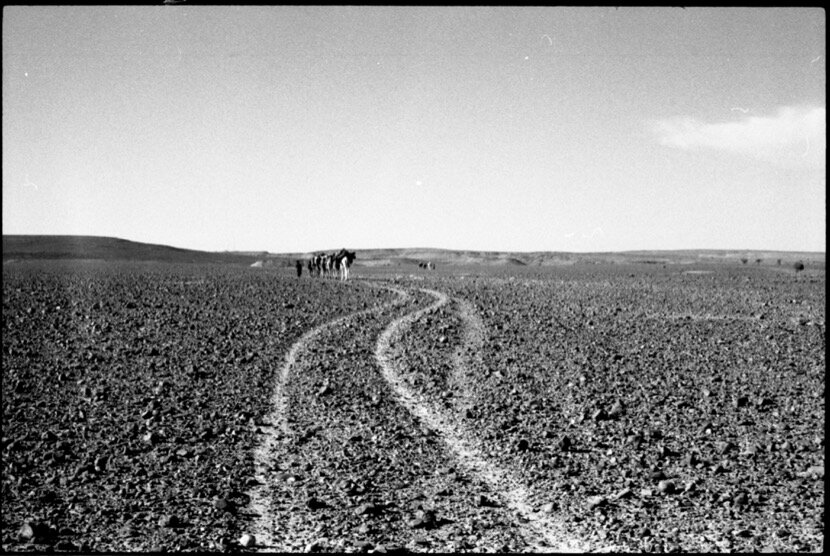
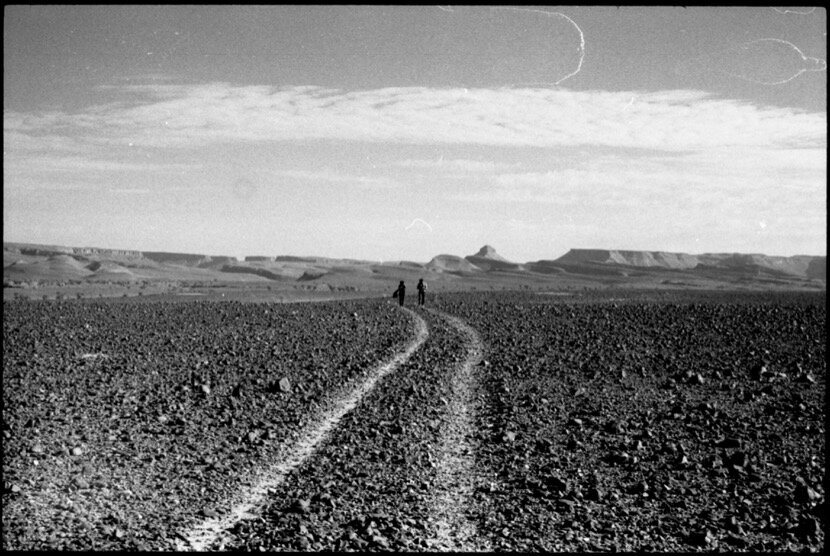
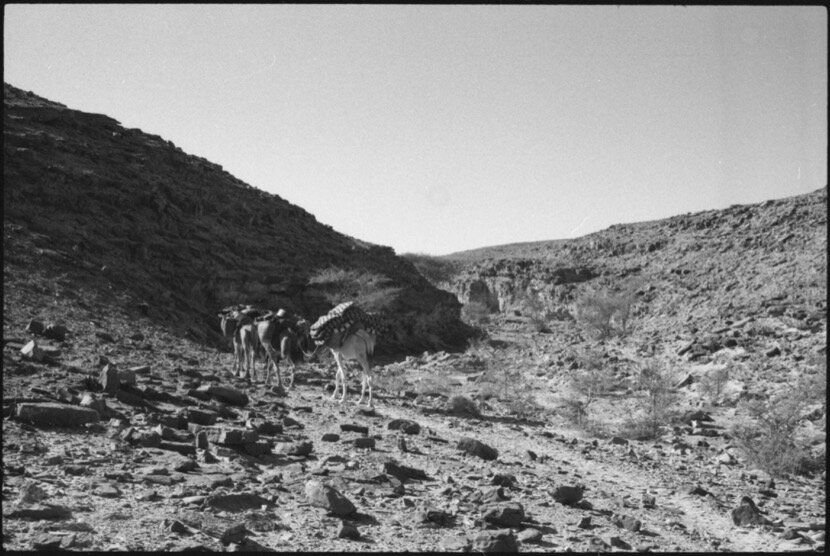
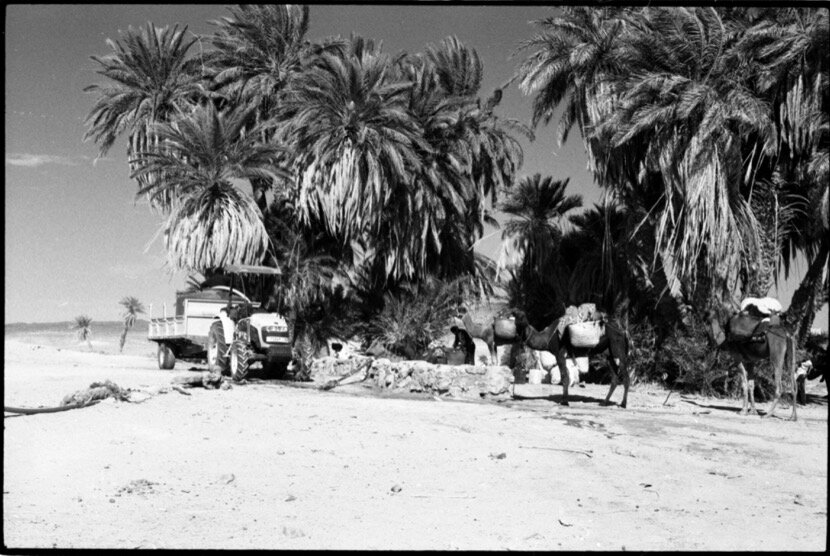
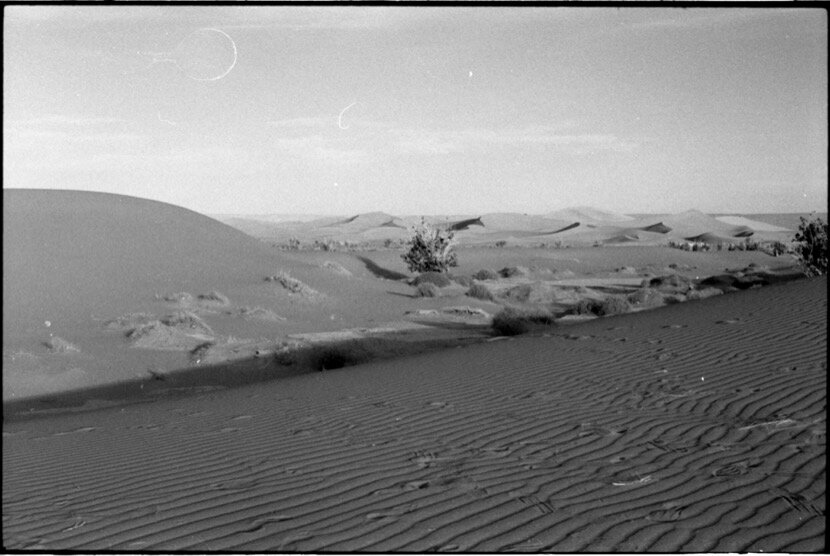
DAY 04
29.10.2019
According to Wali we were 64 km away from M'hamid and that forced us to walk 16 km each day, including the rest day.
In the morning we realised the accumulated fatigue and we left at 9h30, shortly before, Abdeljalil appeared with a goat that we carried all day, with screams. Souad and Driss talked a lot with Abdeljalil because they did not want to kill it, without coming to understand that goats are a staple food for some nomads.
That day we saw 3 types of landscape; dunes, pebbles, sand, and my friends quickly understood what I was saying about the dunes, which I hate.
In theory, we had to do 16 km, and once we did them, we had 2 options, to get closer to the sand (dunes) and look for a tamarix tree or to go to a bivouac next to a dune, but we had to continue 30 minutes. As usual Youssef and Abdeljalil wanted to continue, without asking the advice of others who were already tired, because of the heat and the sand, finally, with the excuse that we needed a lot of water to prepare the goat, we headed for the bivouac, but Laila and Souad rode on the camels. I was worried about Ahmed, who in the morning had a problem with tendonitis in one foot.
The situation at the bivouac was weird, I did not understand why we were there. During Beyond Qafila Thalitha we also bought a goat and we ate it anywhere. Was it because Ali had worked there that they proposed it? He did it in good faith or did he have a commission? This type of situations, lack of confidence, I do not like it at all.
After the meal at the "restaurant" (with our food), I told myself, what are you doing here, in a room? I went outside in the shade (cooler than inside) and then I went with Driss to climb on a dune and stay in the shade. One hour later, Laila arrives from above where she also took a nap. The 360º view was beautiful, and the sunset too, especially since there was no one around us (within 10 km), and no cars were passing by.
In the end, the location of the bivouac was not bad, far of tourists. However, I imagined the route to follow the next day and I do not like it because there are only small dunes, a kind of sea.
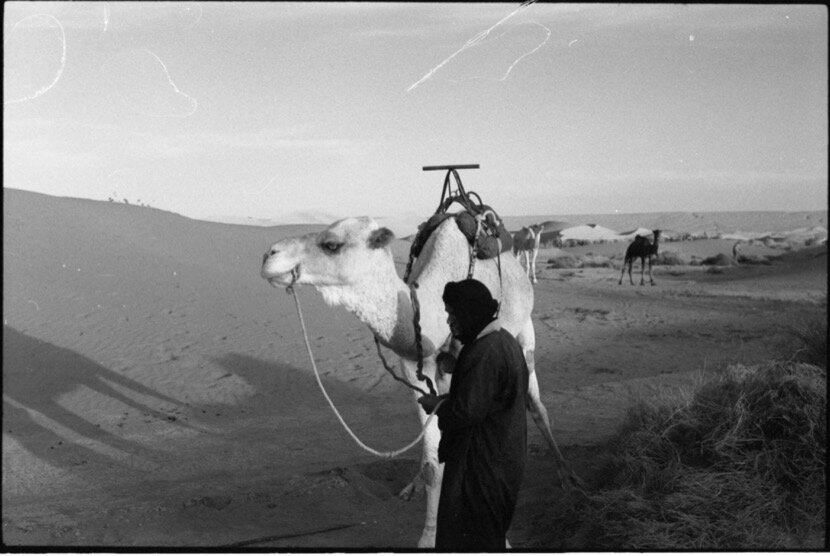
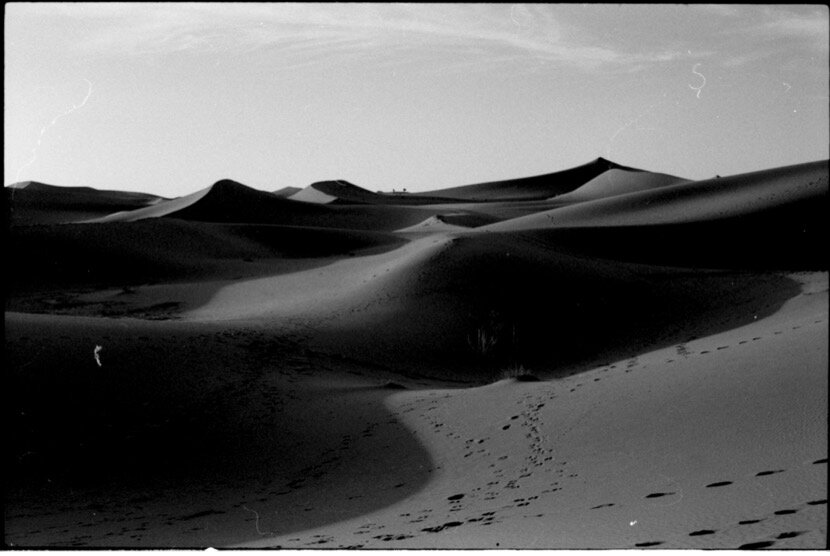
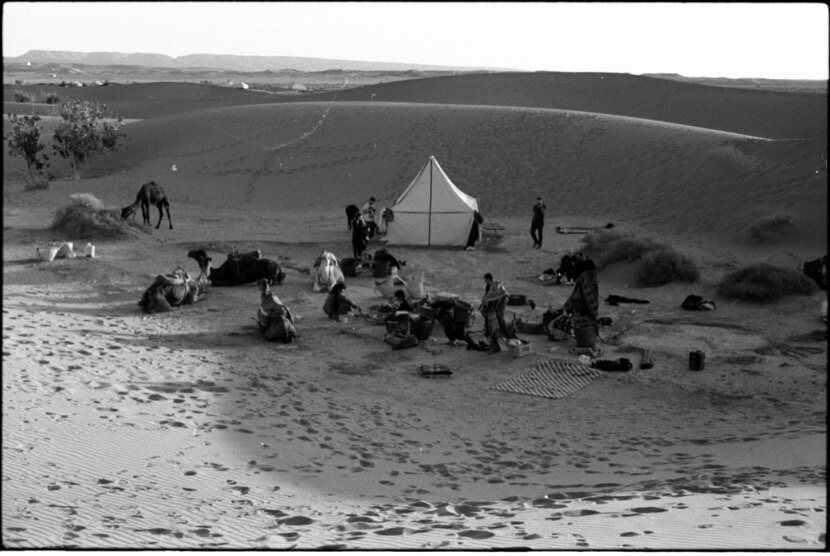
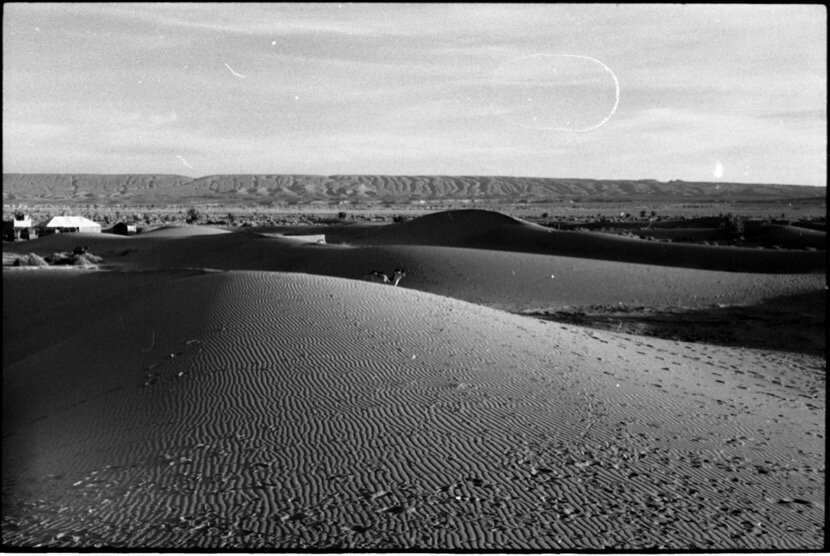
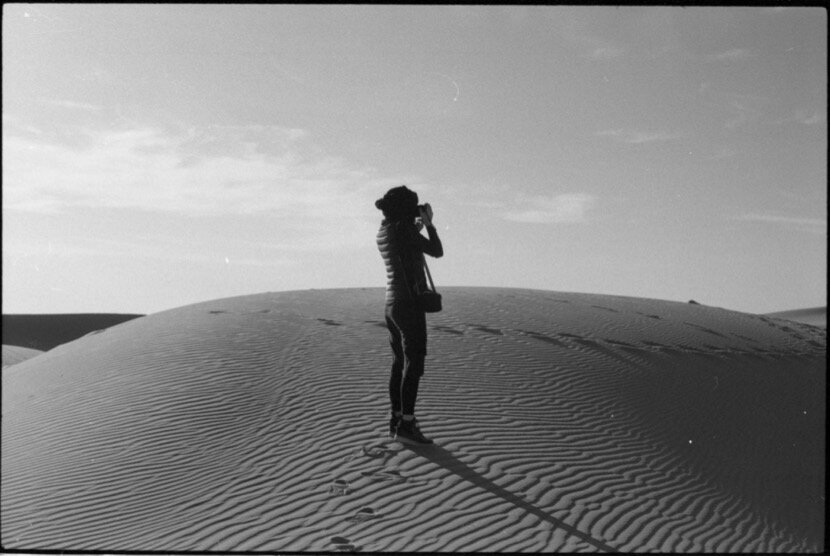
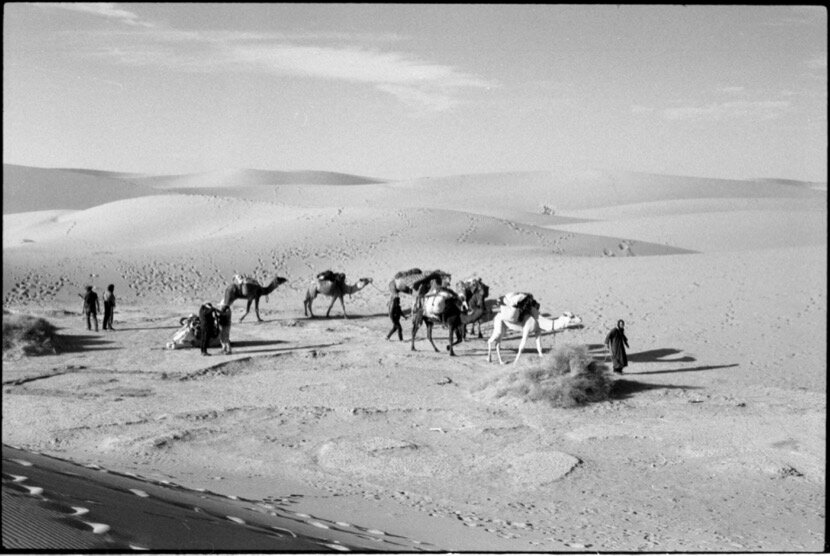
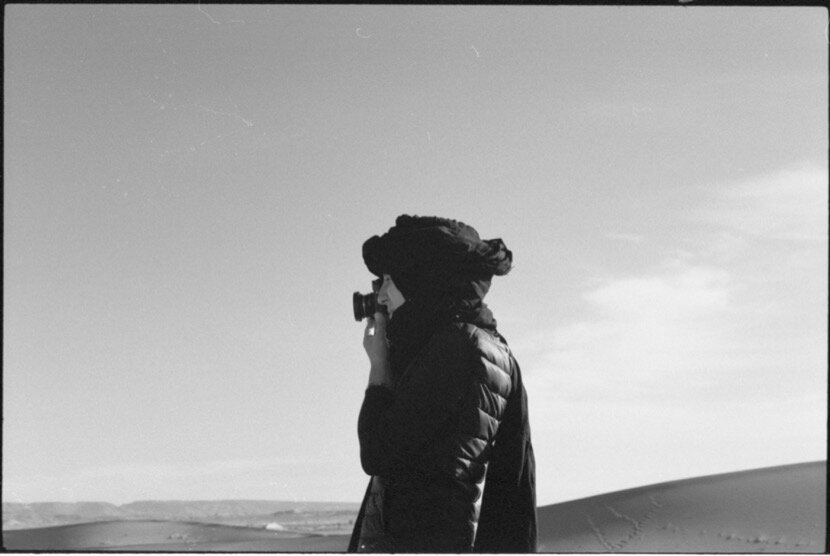
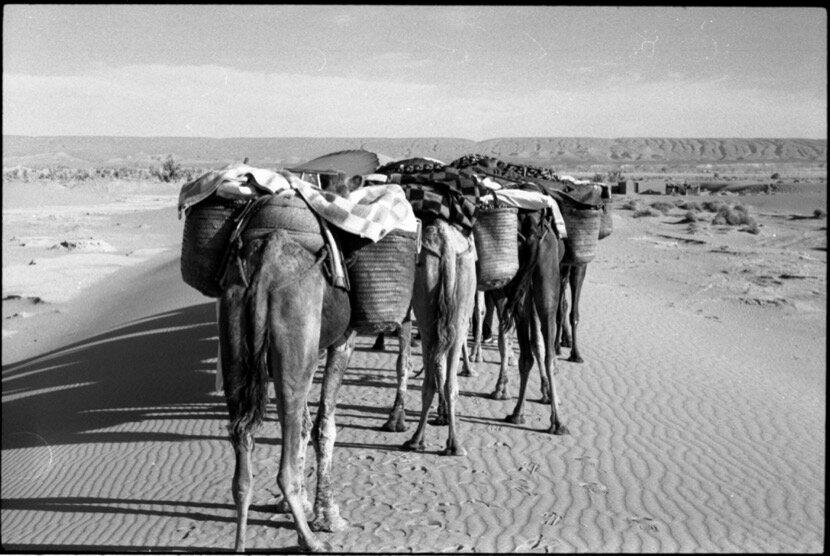
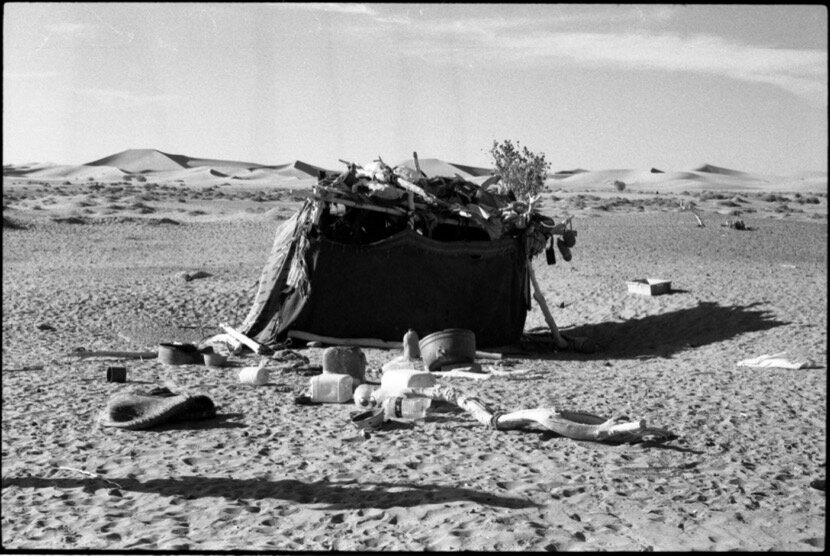

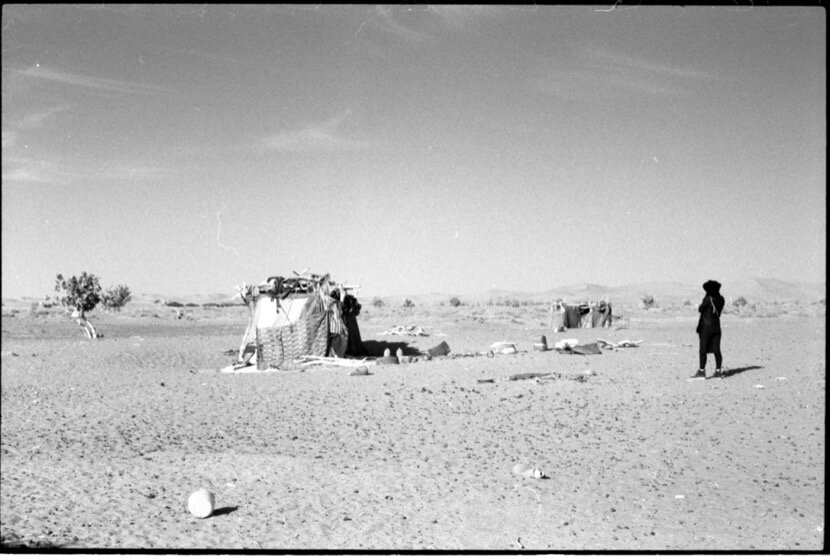
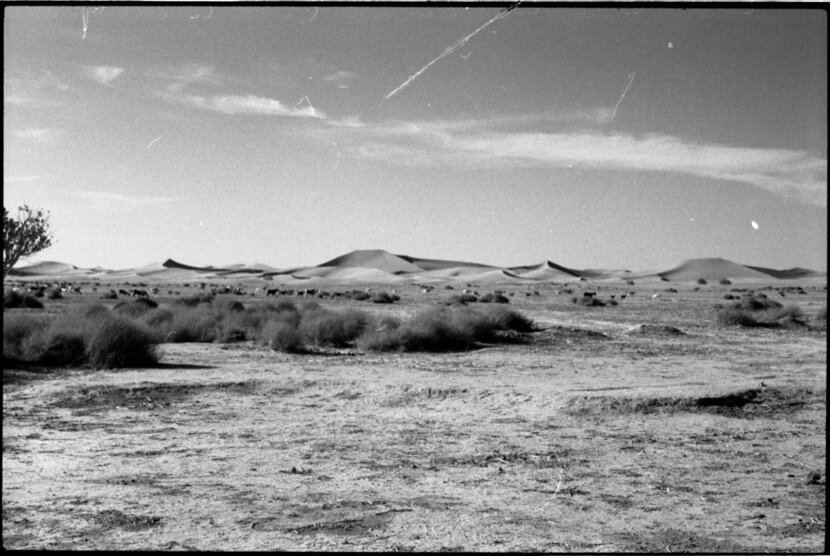
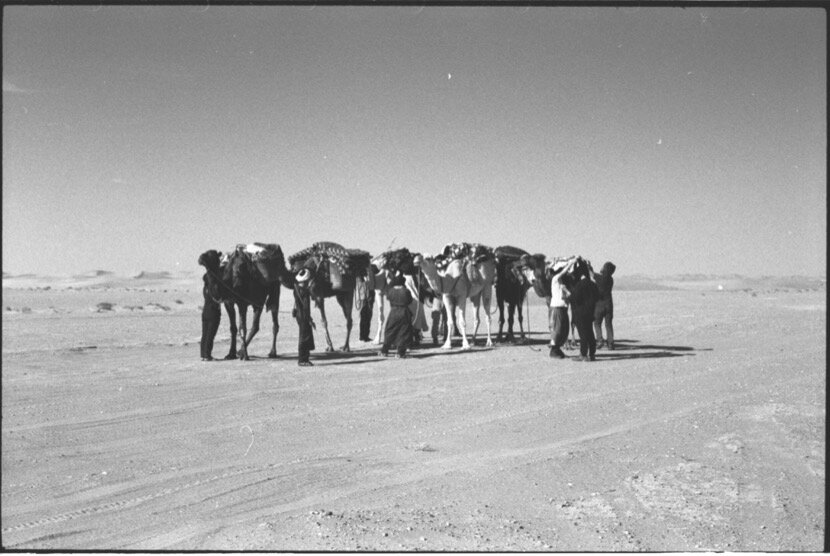
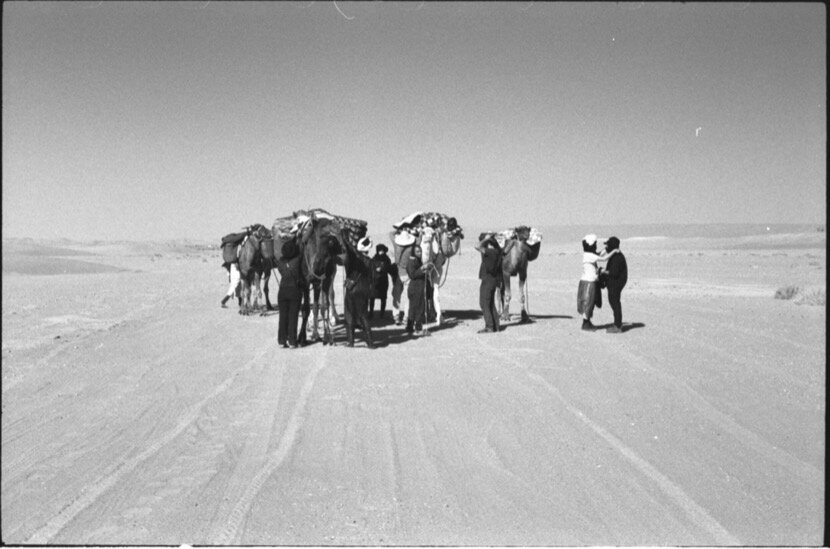
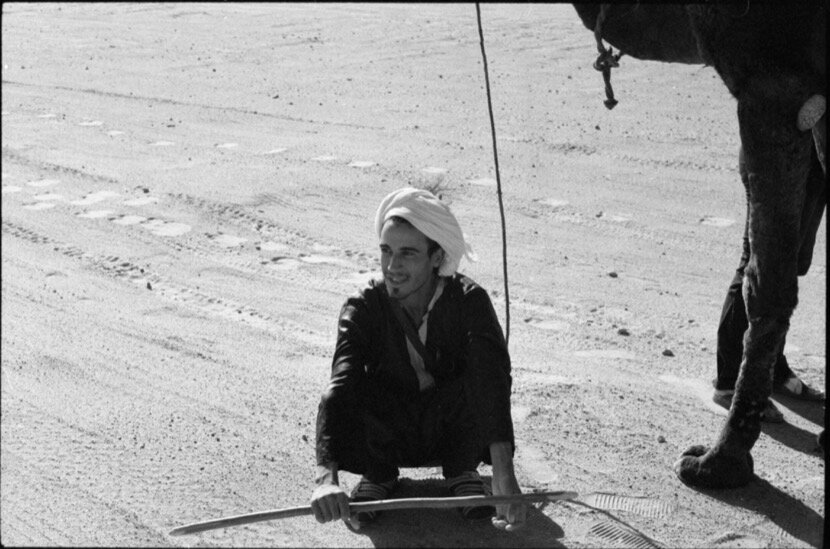
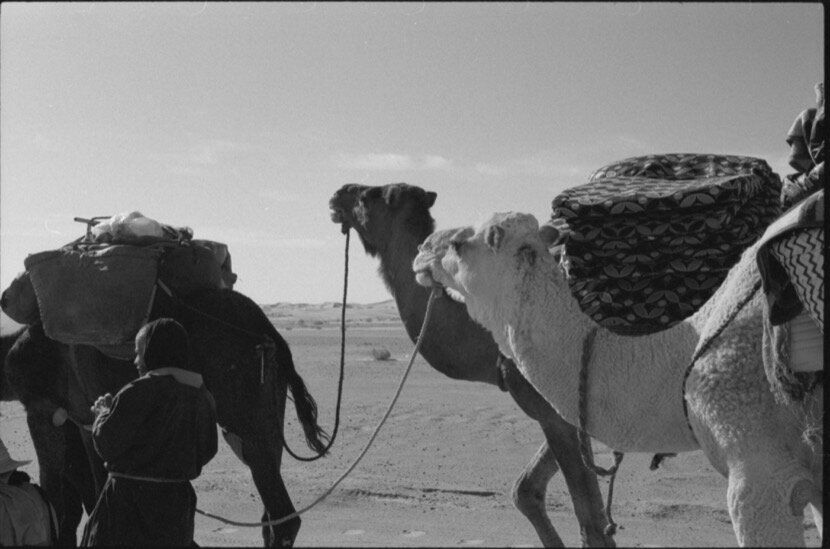
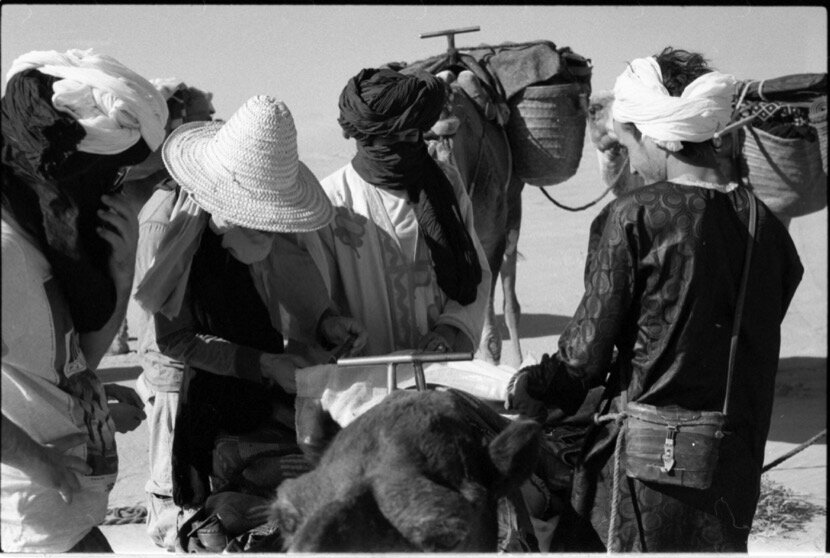
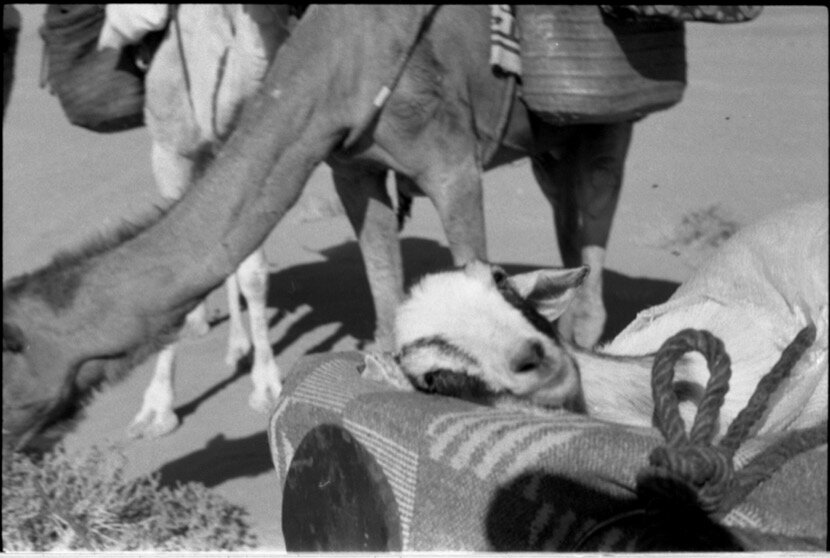

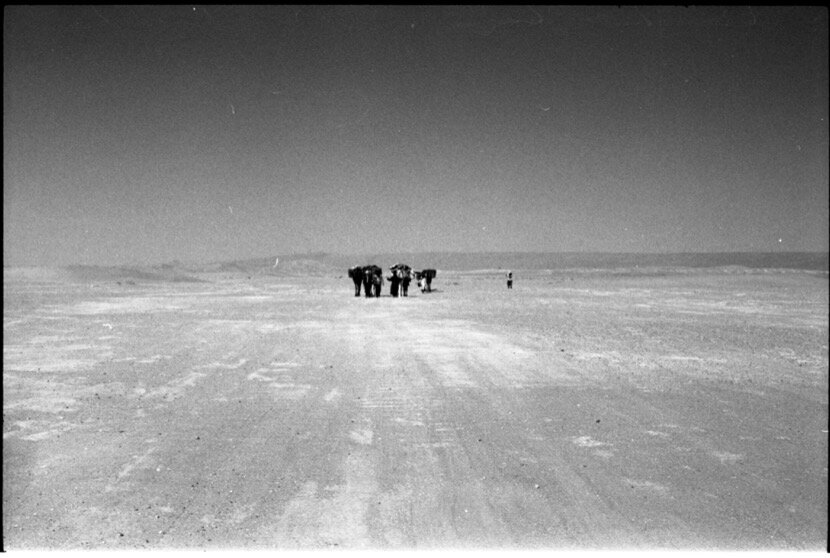
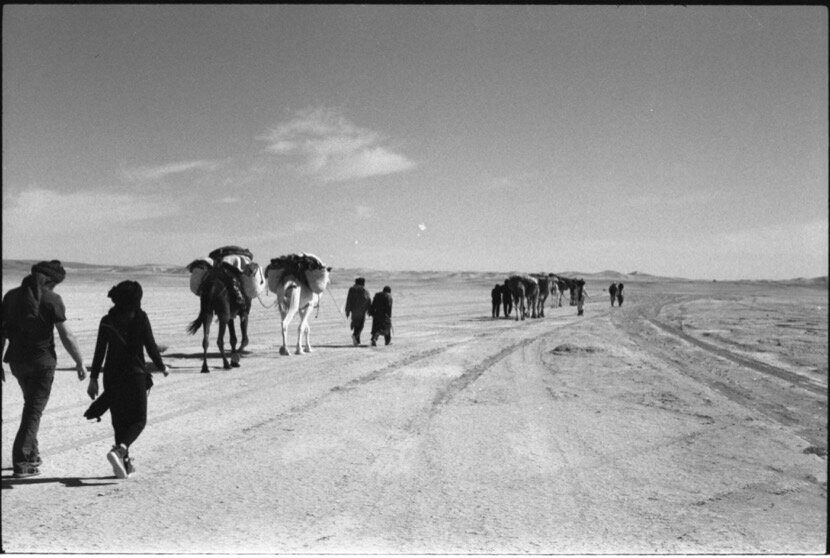
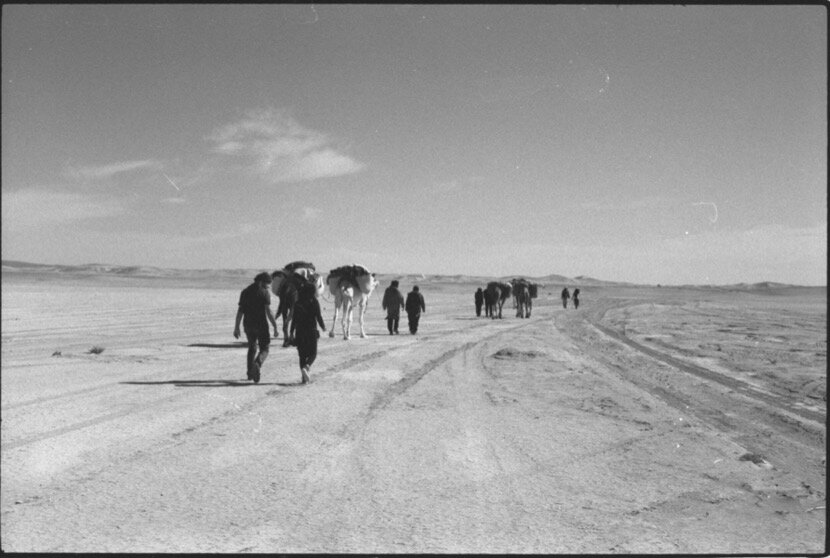
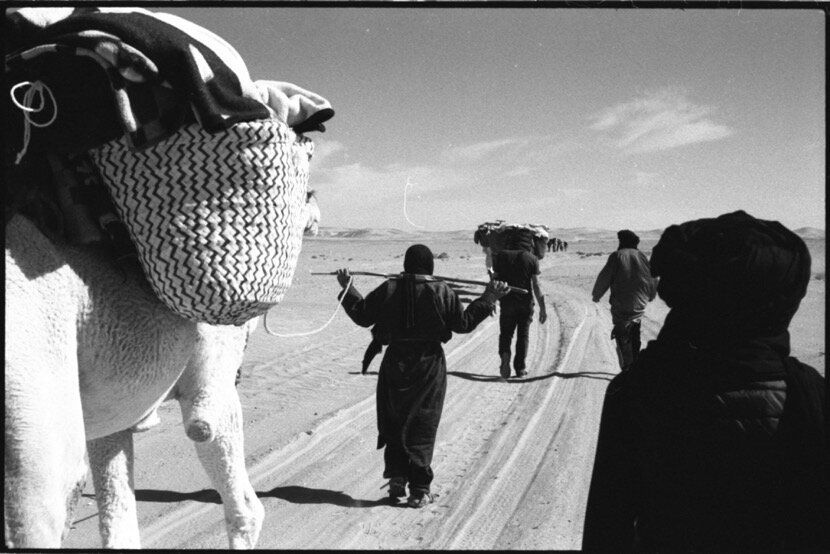

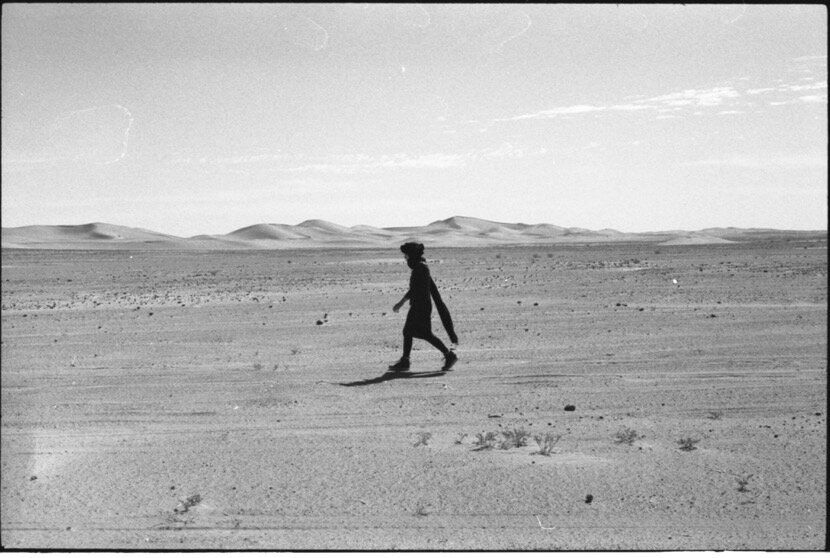
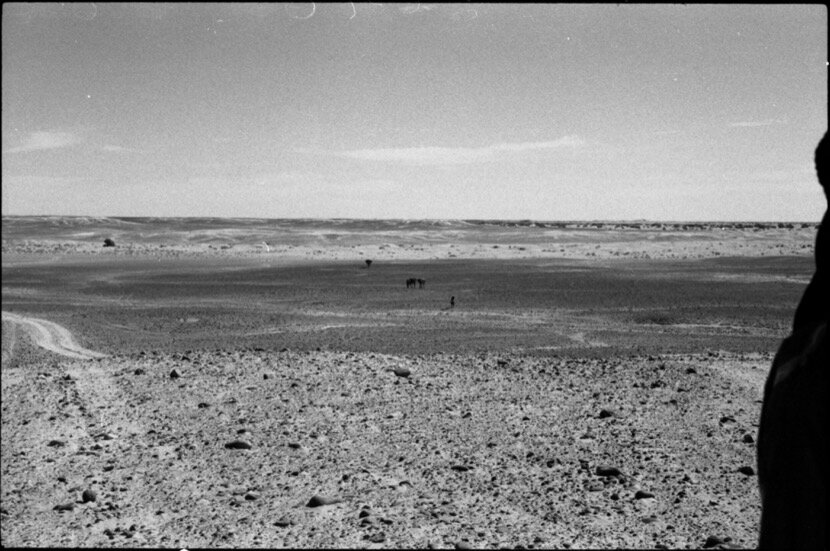
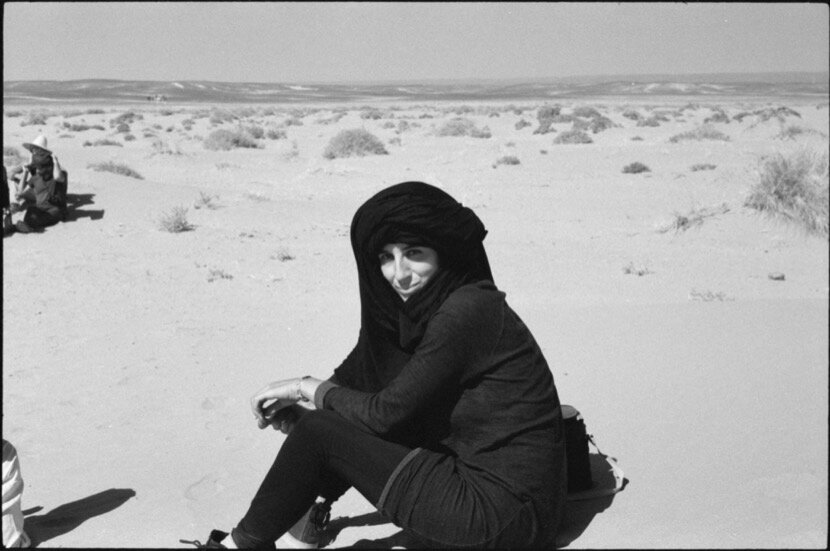

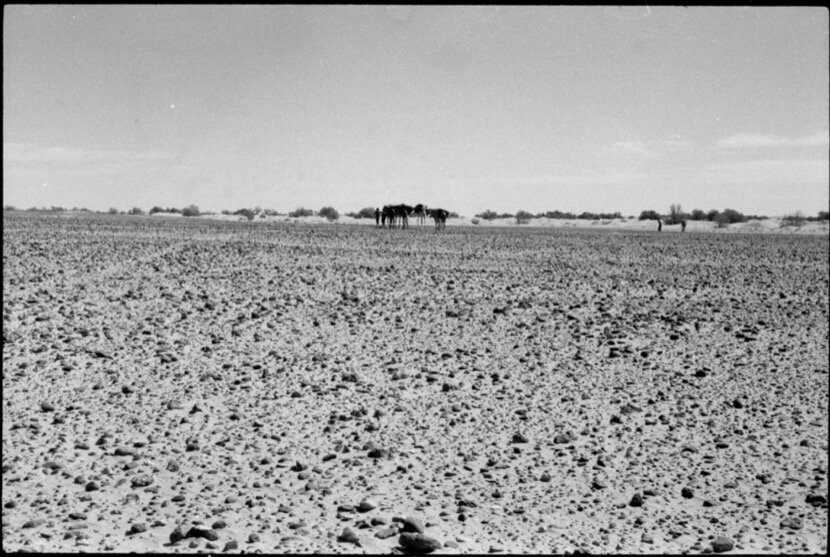
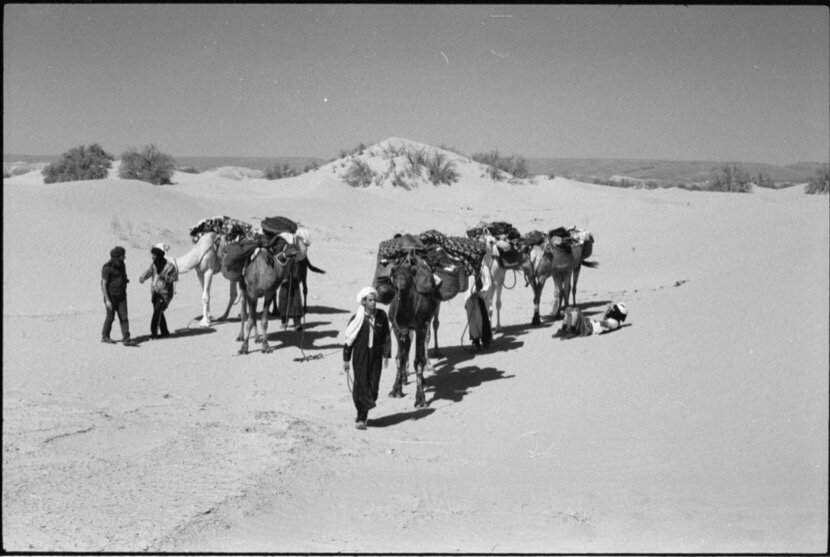
DAY 05
30.10.2019
For the first time, I was able to look at the celestial dome and the memories of the first night at the nomads in 2013 came to me at a glance. But also everything that was "triggered" later, related to nomads, in particular. Even if there was another camp behind the dune, we had the feeling of being alone.
At 9h15 we started to get around the dune to get to the track. On leaving, Ahmed told me that Abdeljalil was already left, crossing the dunes. I thought this way was going to be more difficult but shorter, but also that since our camp we could see the track. After an hour, already on the track, we did not know where Abdeljalil was. First, it was Ali who went on the dunes to look for him, then, once regrouped in the well, Wali also left. We started to worry because, according to Youssef, he had not taken any water with him. Besides, he told no one what he was going to do except Youssef. Some wanted to continue, saying that he will join us later, I said no, we do not move from here and if Ali or Wali never find him, we will take the camel trained to be rode, to make a broader search, and at the limit, we will call an 4WD car. Half an hour later Wali saw him and waved him to the track.
That's what can happen when you leave someone alone in a rugged terrain without visibility like the dunes.
Today we saw 3 types of landscapes; dunes, pebbles and sand.
I checked the time and especially the kilometres, because we had agreed to walk only 15 km, after looking at the plans that we were 35 km away from M'hamid, according to the indications of Mokhtar, to the place where we were, to the rivers we passed… but in reality we did not know exactly where we were. Mokhtar said we were 8 hours by walk away from the city ...
At some point, messages ring in my watch, since all day I used the phone to take pictures instead of the Leica to avoid problems with the sand. With the Internet connexion I searched on Google Maps the exact distance to M'hamid and what was my surprise that we were only 18 km away and not 35. This situation made us all happy because it gave us the opportunity to stay a day off, or to stay the last day near the city just one hour away.
Once we made the 15 km, we looked to our right the small dunes and trees (tamarix) but getting closer, Mokhtar showed us the tree where he was born, automatically Laila said we had to spend the night there, it did not matter if Wali, Souad and some camels had moved away. This tree was going to be a perfect opportunity to question Mokhtar, his life, his family, his travels. He has his family in Erfoud and sometimes he goes to Smara (by car), a region he likes.
To tell the truth, the two tamarix surrounded by sand, created a very pleasant space, even with wind.
During the evening, it was necessary to decide whether to stay and make 16 km the last day or to walk and get closer to M'hamid ... In any case my friends were getting sad because Qafila was coming to the end.
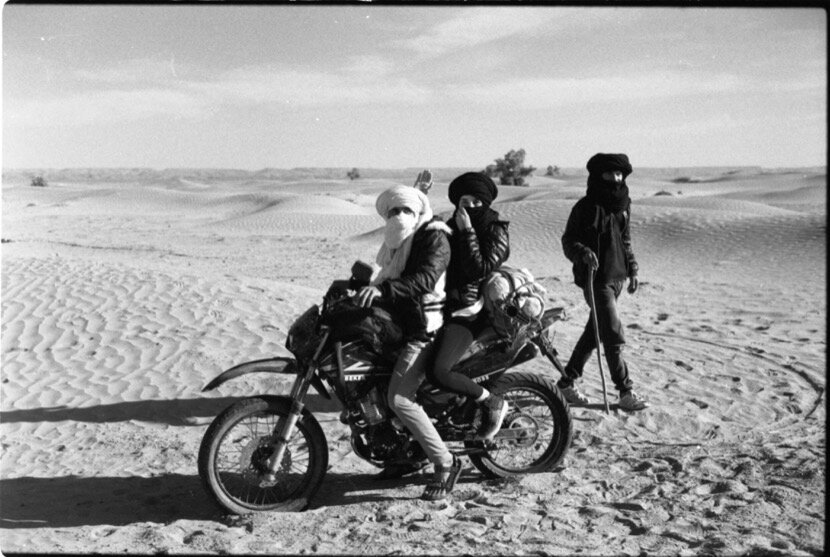
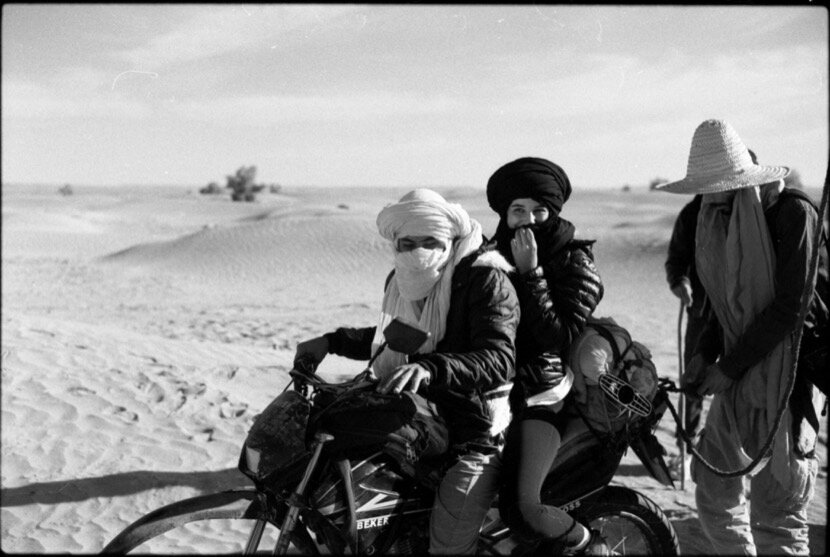
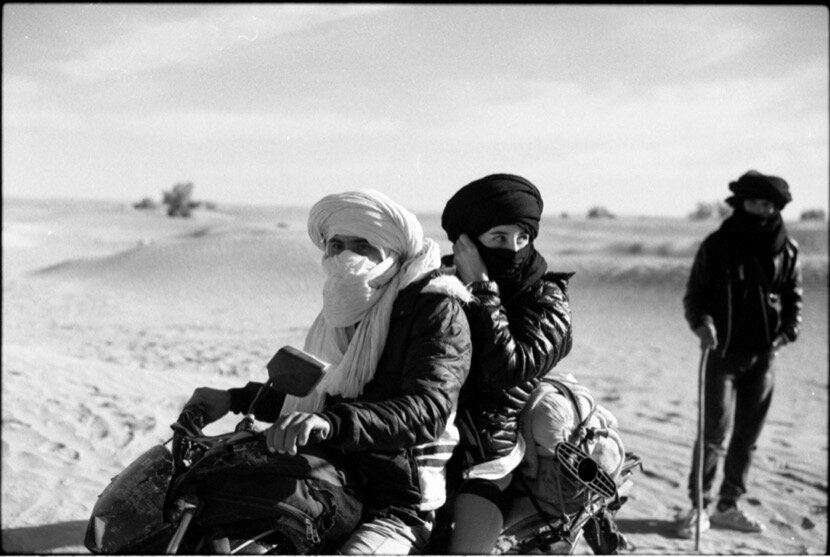
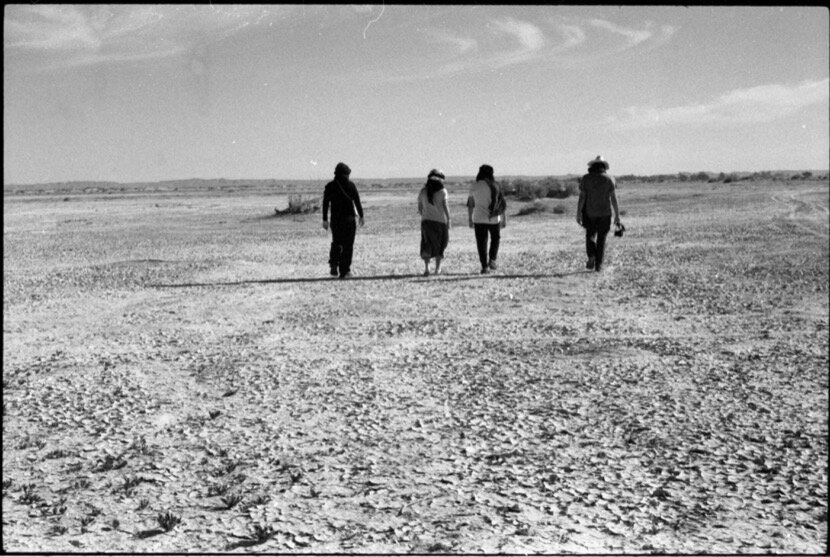
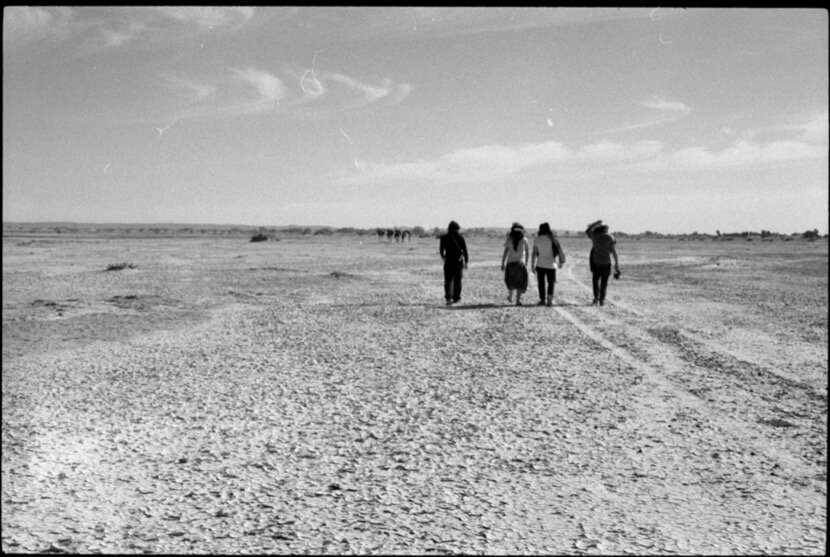
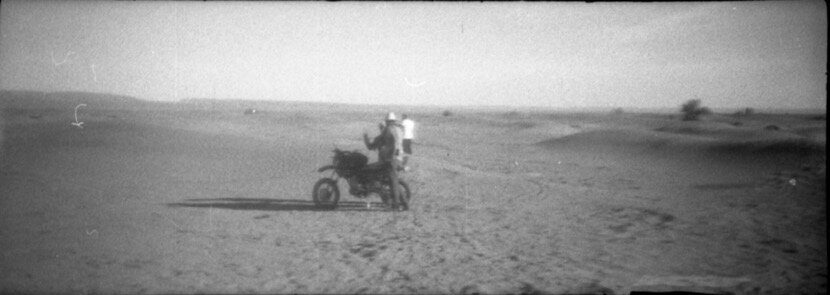
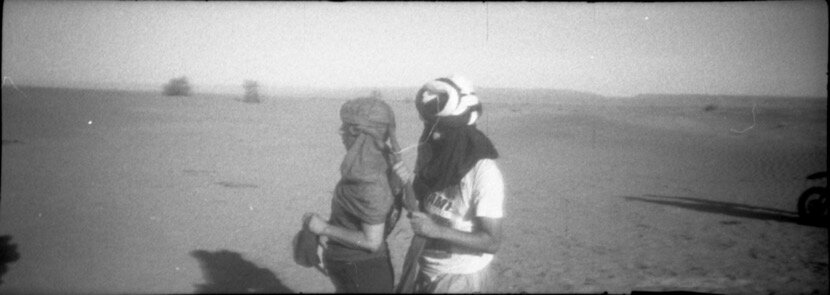
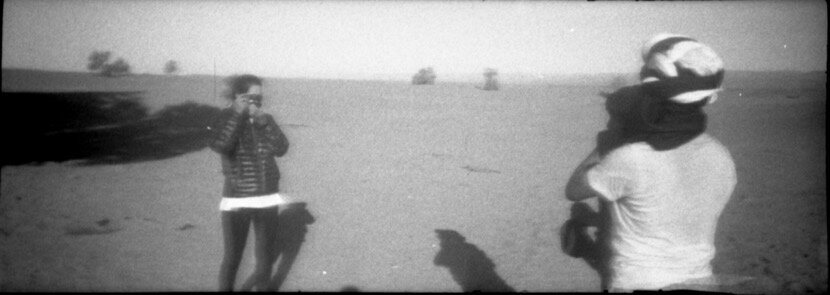

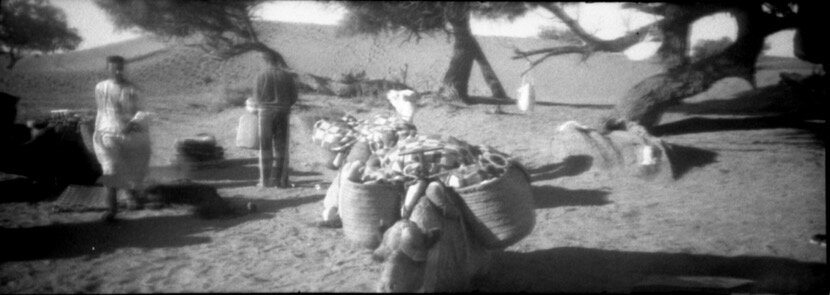
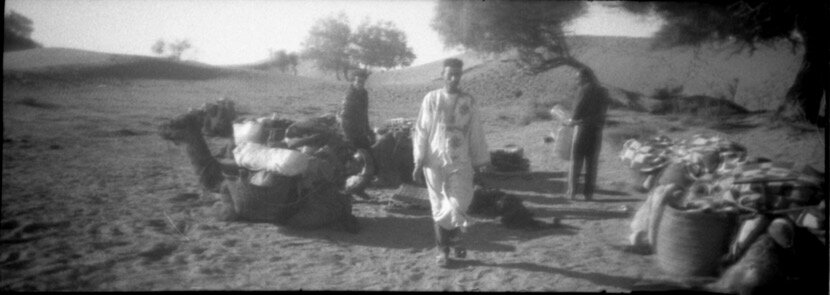
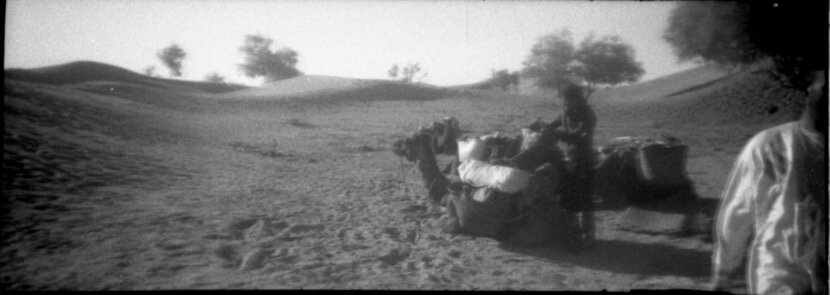
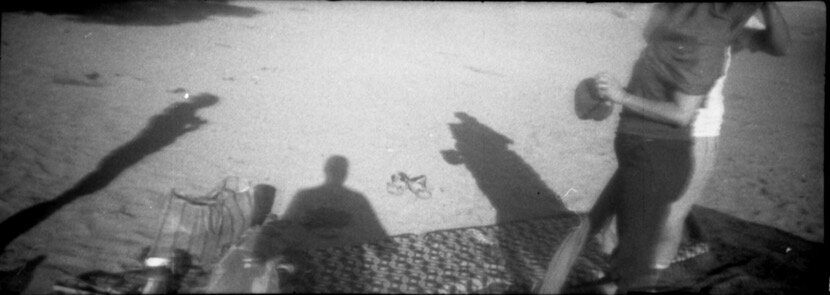
DAY 06
31.10.2019
I decided to test the location that "our" camel drivers use to sleep on the dunes, on the crest. At the beginning of the night a motorcycle arrived, crossing the dunes, it was the "delivery". As on the 2nd night, we used someone who makes the delivery in this region, anywhere, anytime. This time, he arrived alone, without a “navigator”. The motorcycle is well equipped, even with a sleeping bag since he stayed to sleep with us. The idea of sleeping on the crest is good if there is no wind, but it was funny to see everyone on the dune.
Initially, the original plan was to get closer to M'hamid and stay at least 5 km away, in order to do not listen too much the cars. In theory we were going to walk 2h-2h30, Mokhtar was going to fetch water with a camel and Wali on a motorcycle to M'hamid. Only Hassan and Ali continued with us.
Even if we could see trees from our position, it was not the oasis, because there were no palm trees, but we went through a grazing area and we lost the vision on the “tête du peloton”, Ali who was at the end, left us his camels and started running towards a car, as if there was an emergency, as the car did not stop he continued until someone on a motorcycle and smoking in a tree, meanwhile we move away finding ourselves in the middle without knowing where to go.
After a quick walk, Ahmed and I caught up with Hassan and we waited for Ali almost 30 minutes, without water. Suddenly, Said Razgui and Wali appeared with water, also Mokhtar. We had done 10 km and Wali wanted to go to a place 1h-1h30 away, which did not make sense because we moved away from the city almost 10 km, according to Google Maps. Finally we stopped 30 minutes later, in an area with small dunes and with tourists in camels, and 4WD cars. We saw the impact of proximity to the city, with dirt, it was the worst place we stayed, but the sunset was nice, also sad because it was the last one. But if someone was sad, it was Driss who had changed his plan and had decided to stay with us leaving at 5am with Wali and his motorcycle to catch the bus of the CTM.
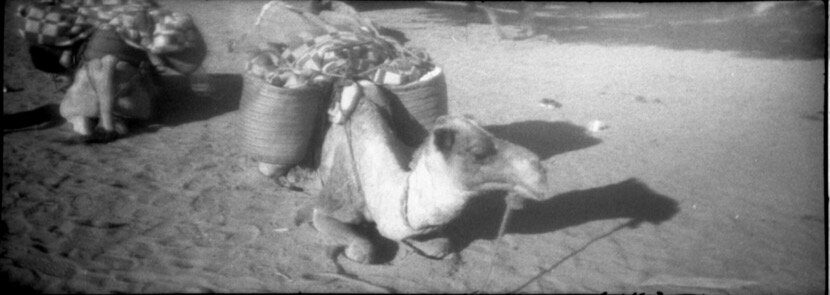
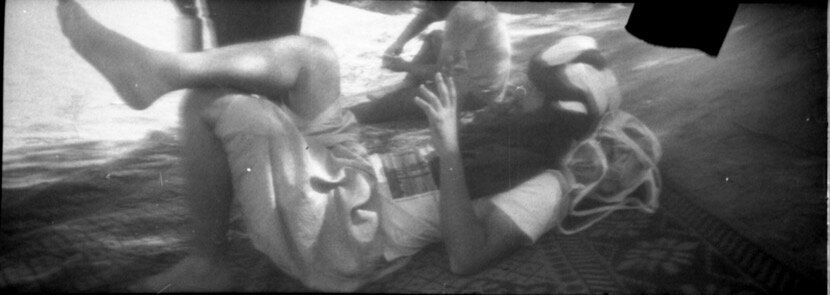
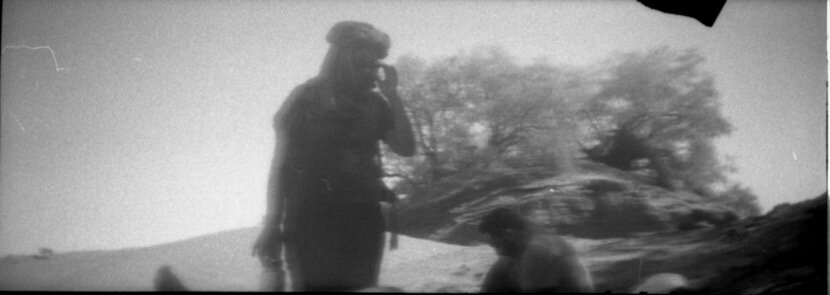
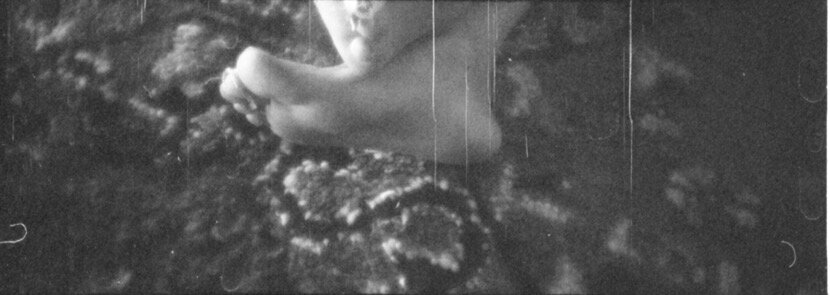
DAY 07
01.11.2019
I do not know why but when we woke up we were all next door, like sardines in a tin can. The cause was not the cold, maybe it was related to having shared this experience together ...
We had agreed with Ali and Hassan to have breakfast later and leave around 11am (we were only 6km away). It was nice to eat on a dune, despite the heat.
The journey was slow, sad, relaxed because we all knew the way (the city was visible) ended up in Wali's house, next to wadi Drâa, where he also keeps his camels.
This is where we had the last tea, the one that would close QAFILA RABIAA, episode 1.
FESTIVAL TARAGALTE
As we did in 2017, we use Taragalte Festival as a departing/arriving point, so we could attend it. I tried to explain that it is an opportunity to live what a Saharan port could be. Of course, the musicians from Mauritanie, Mali, Niger, Algeria and Morocco did not come by caravans, but the cosmopolitan ambience is amazing.
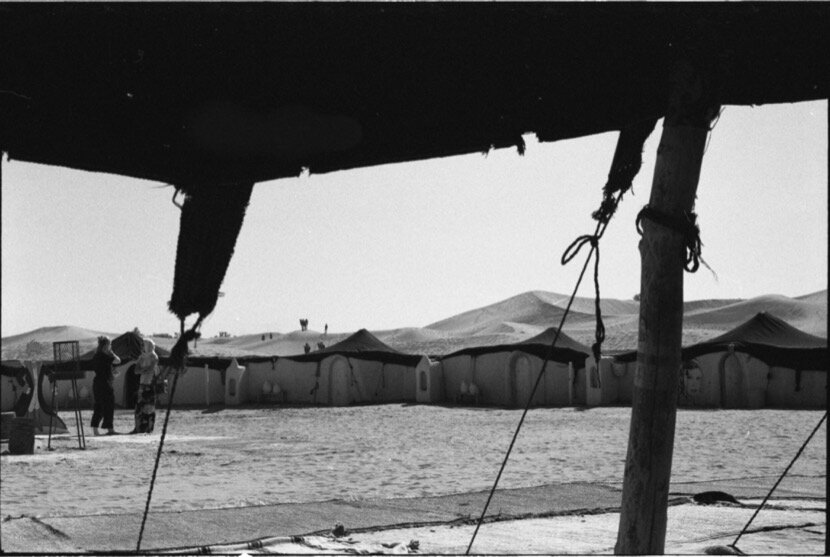
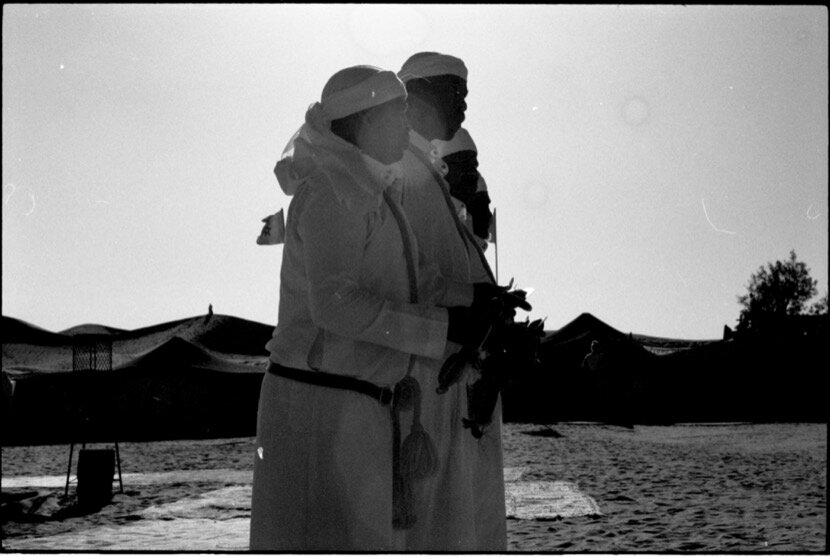
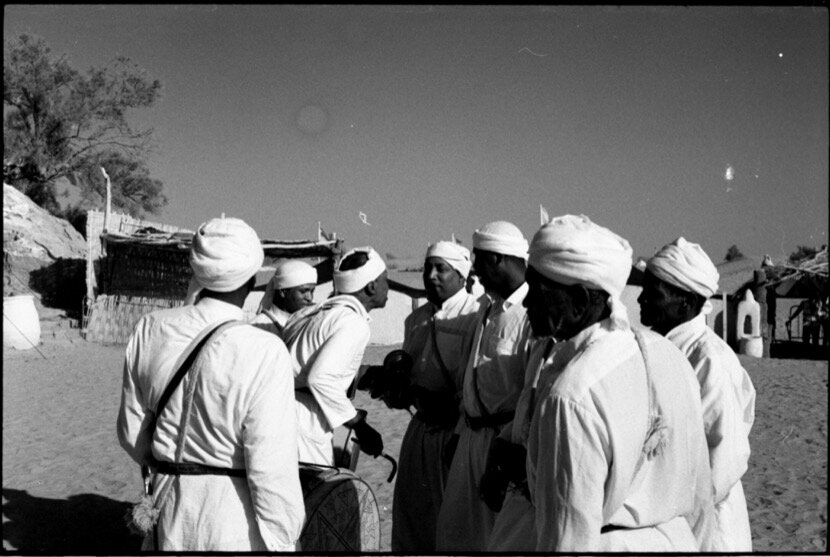
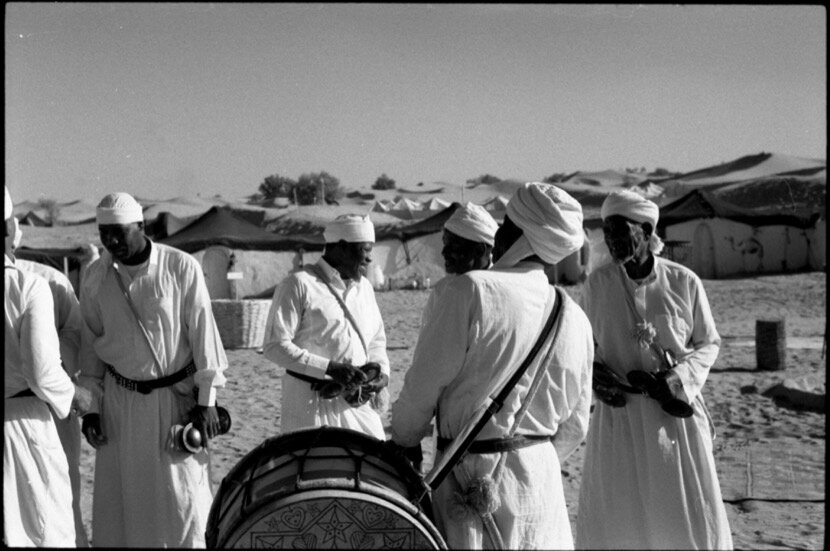
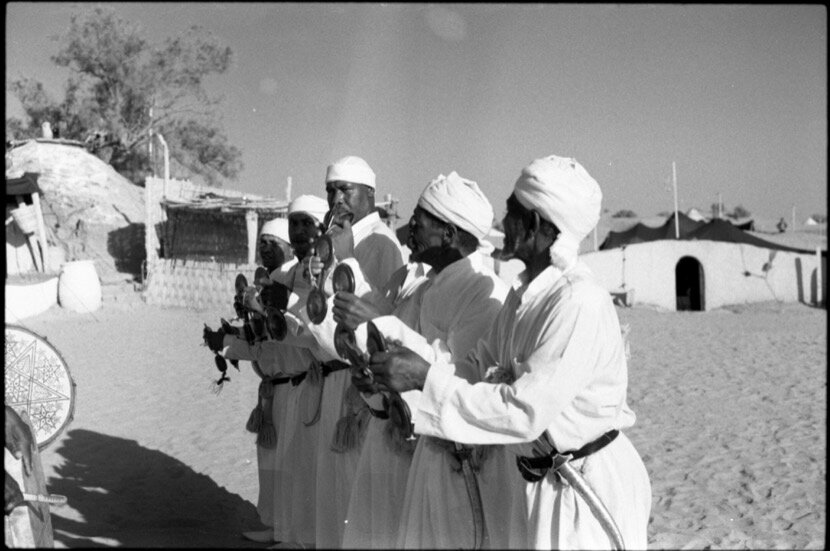
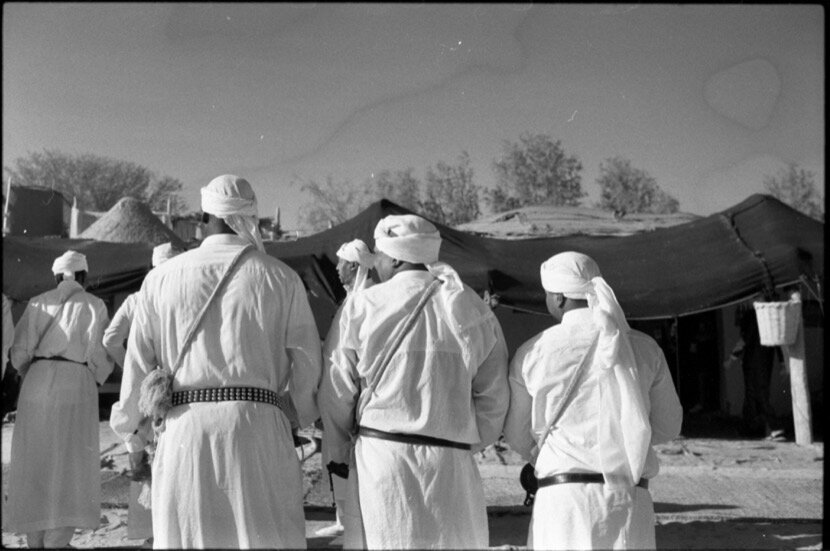
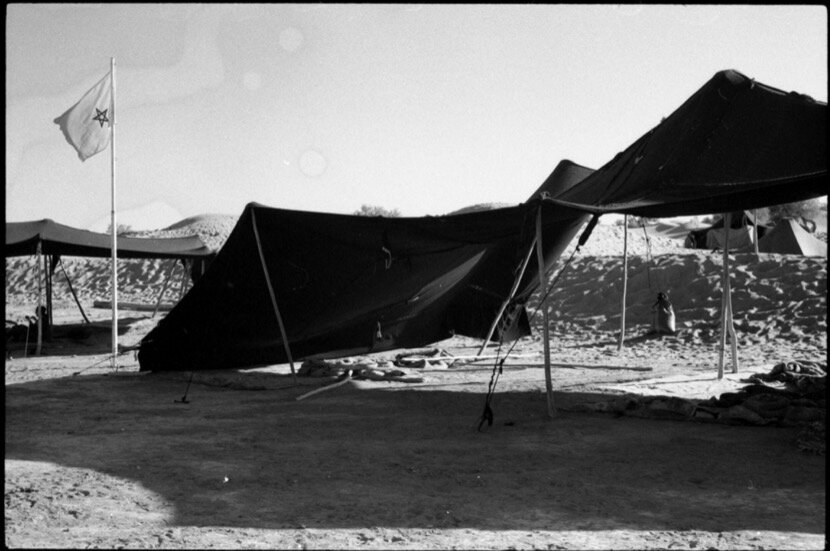

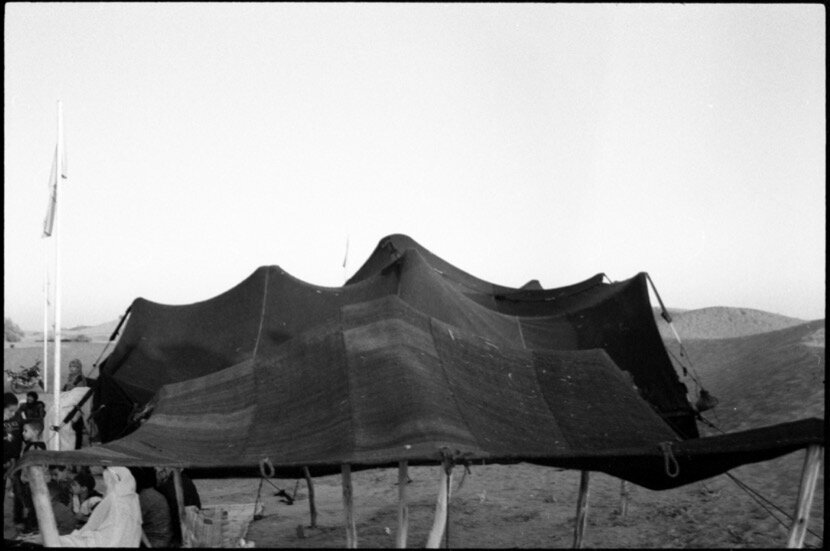
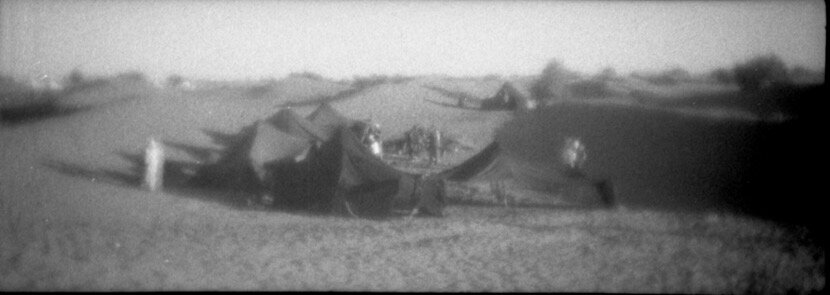
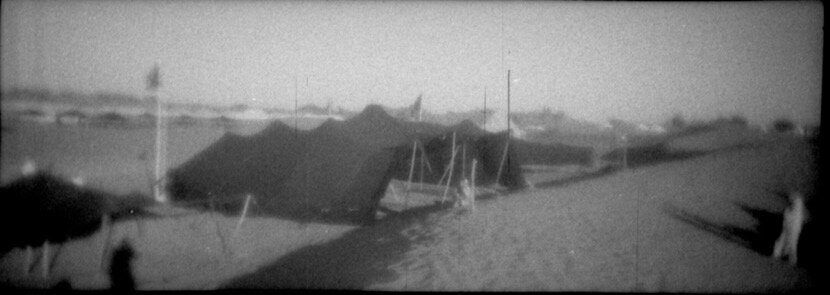
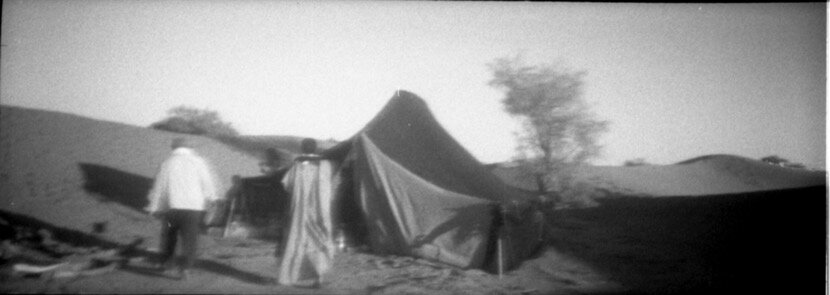
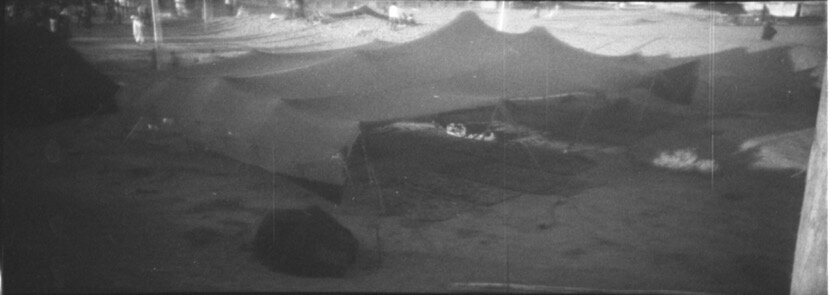
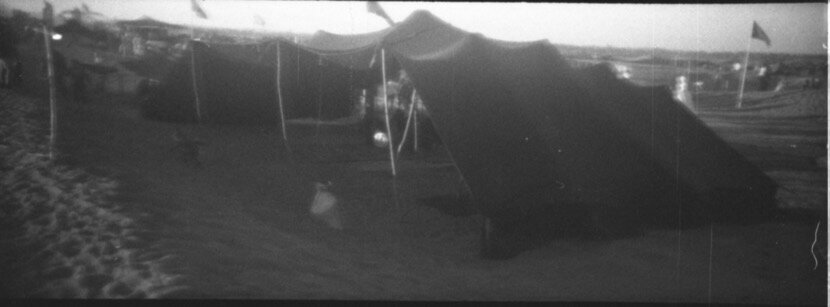
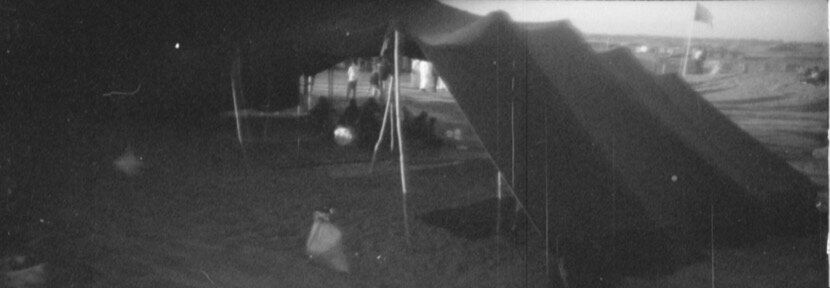
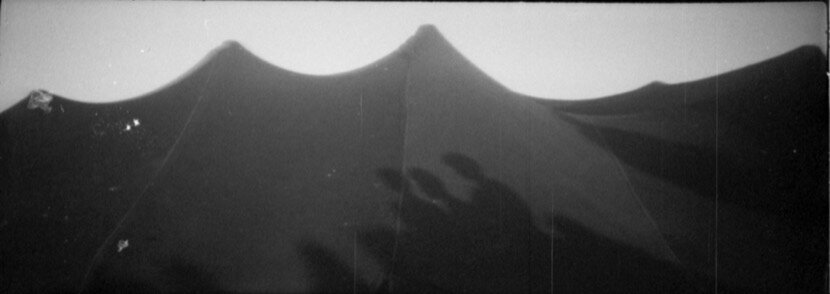
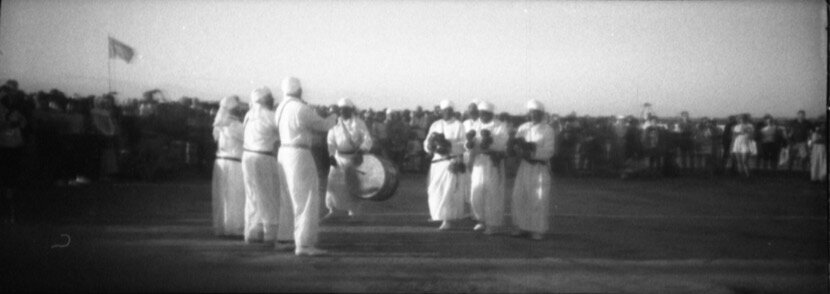
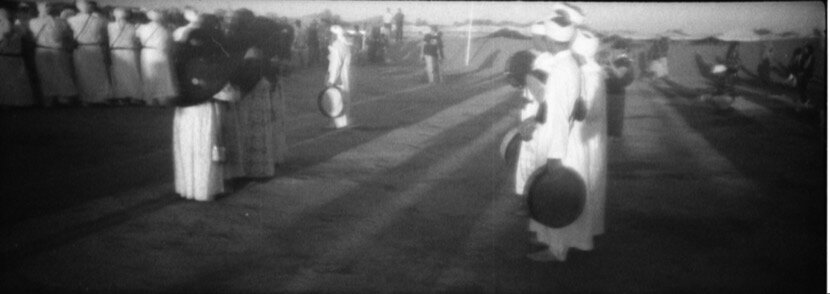
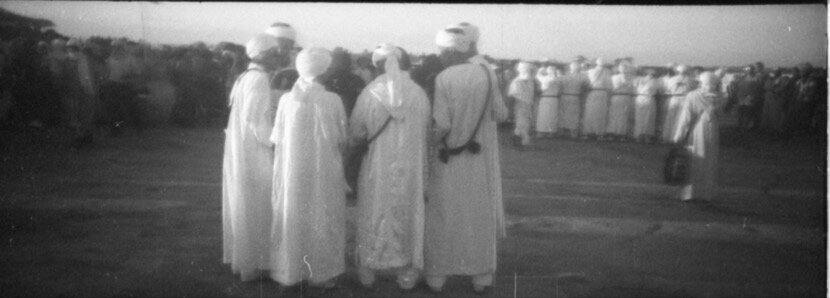
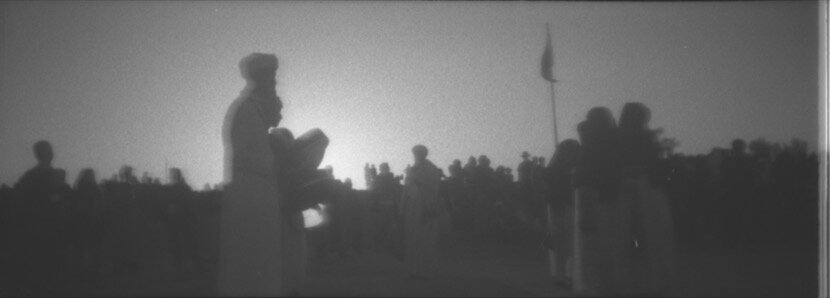
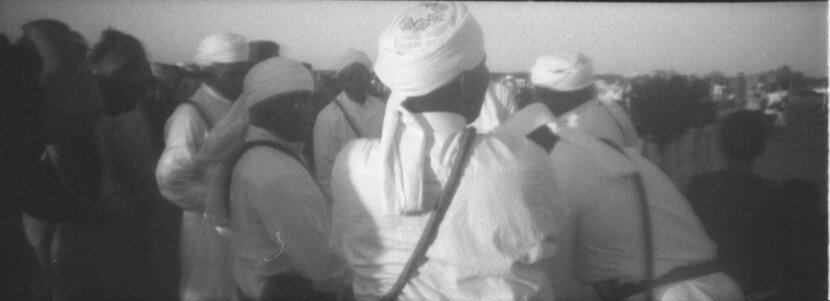
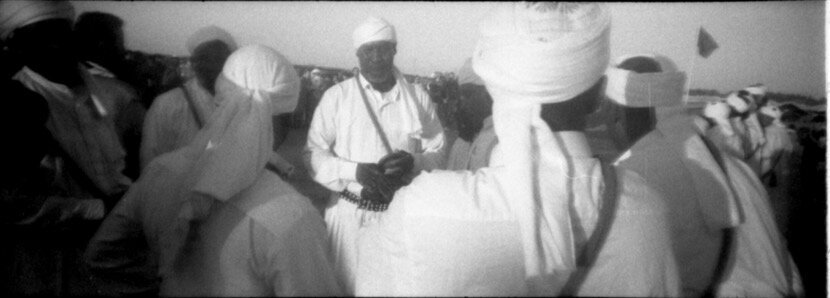
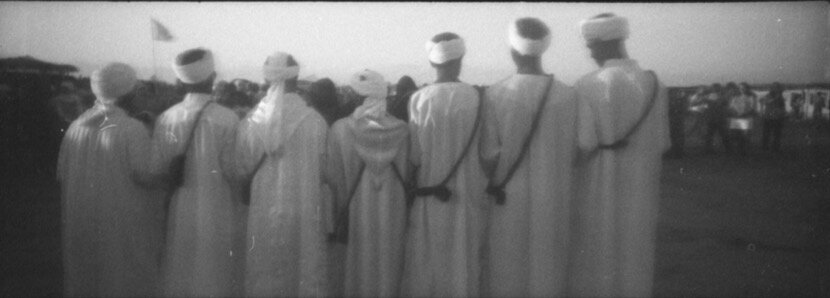
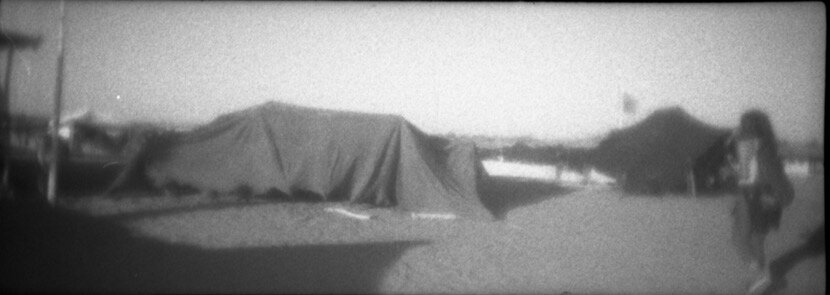
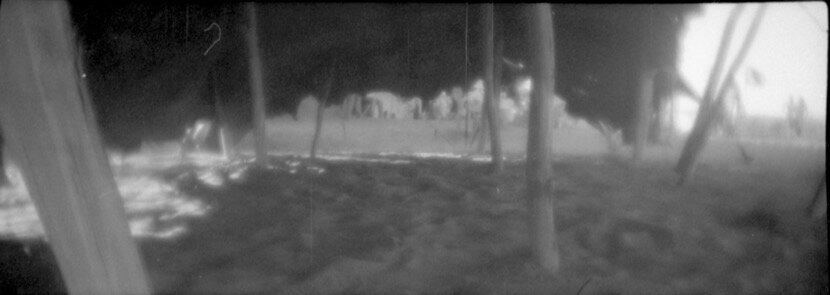
EPILOGUE
Credit videos, pictures, texts and drawings: Carlos Perez Marin
